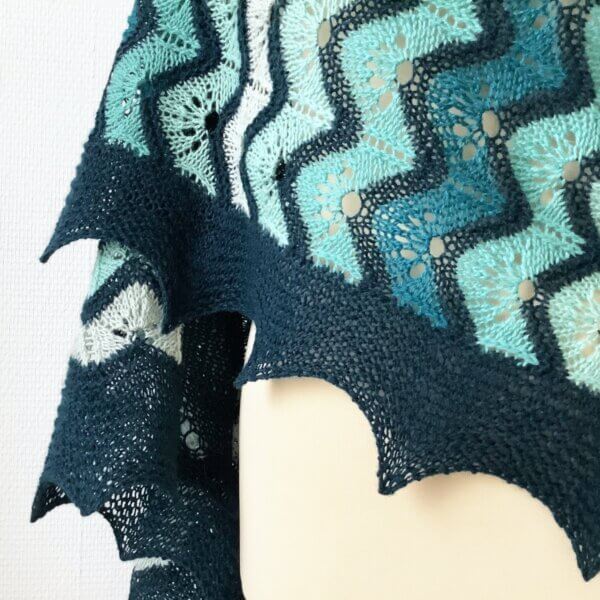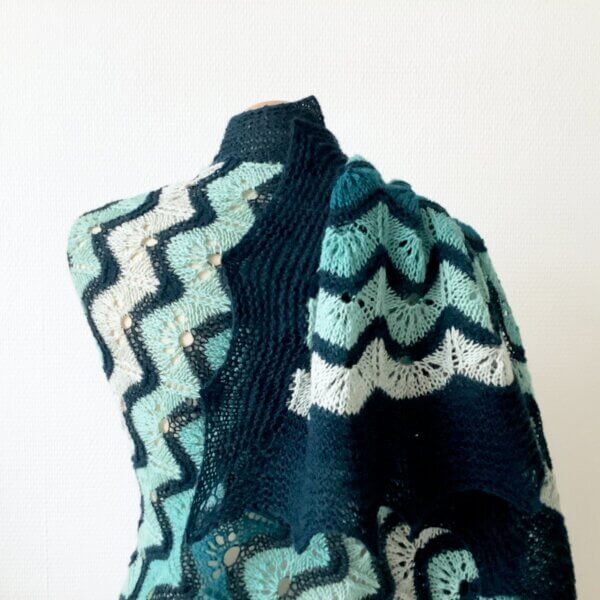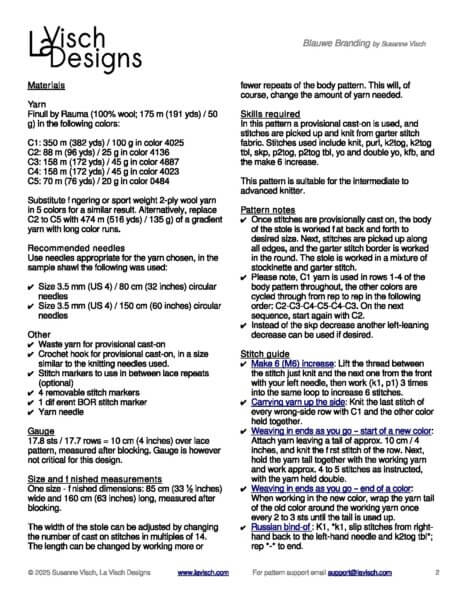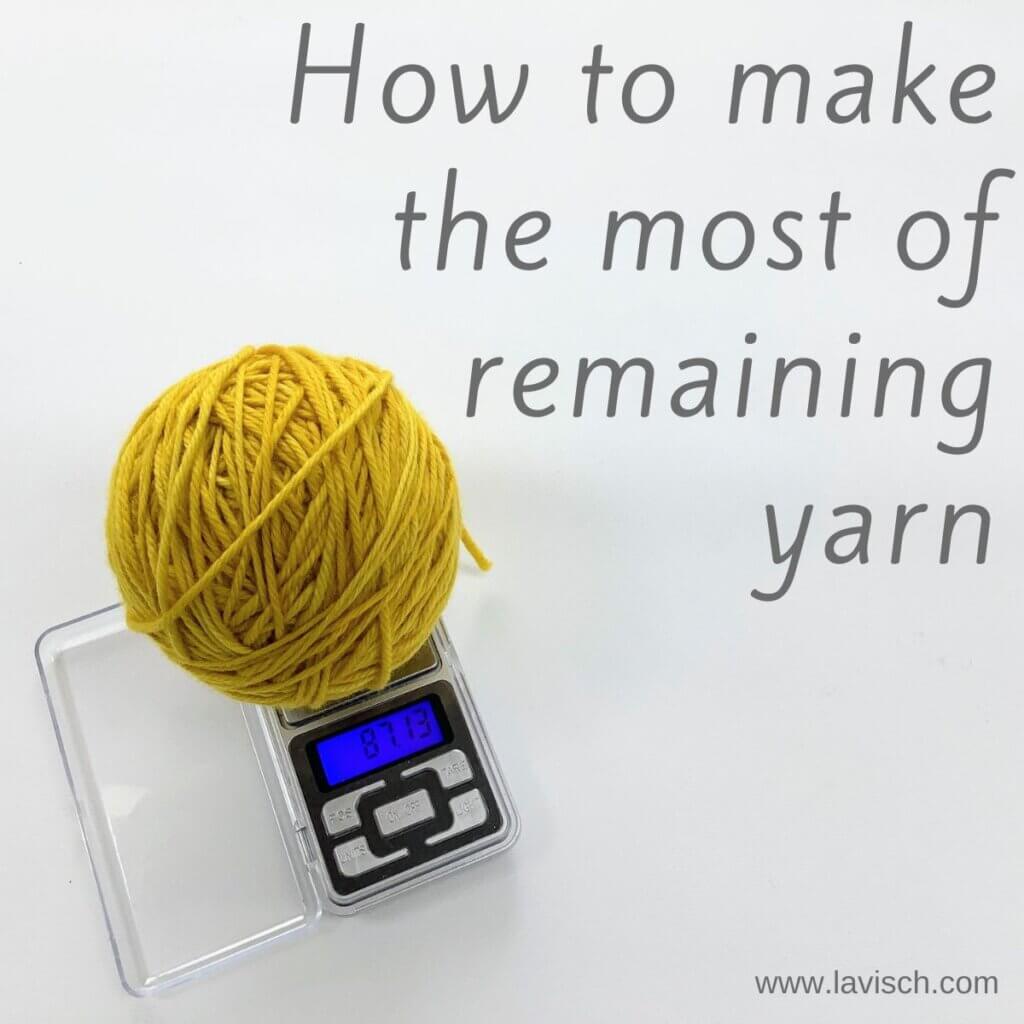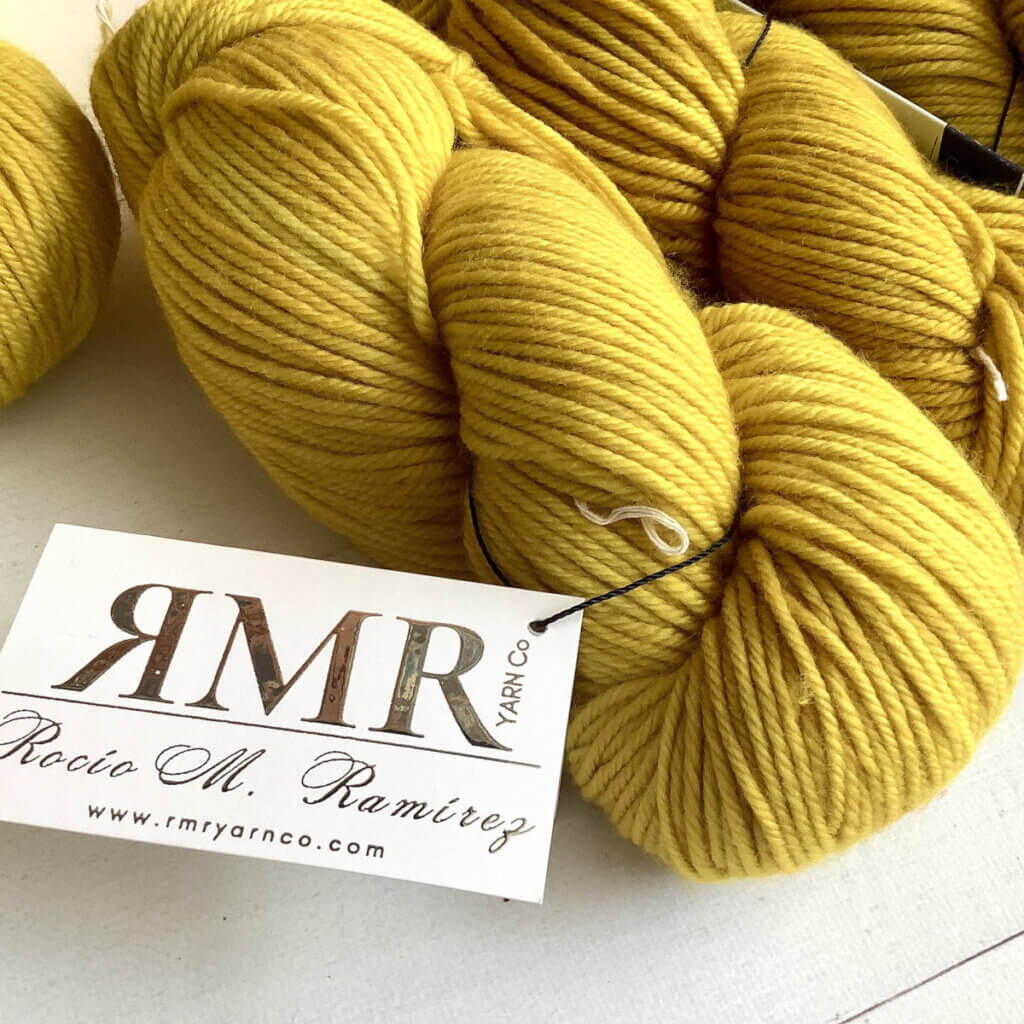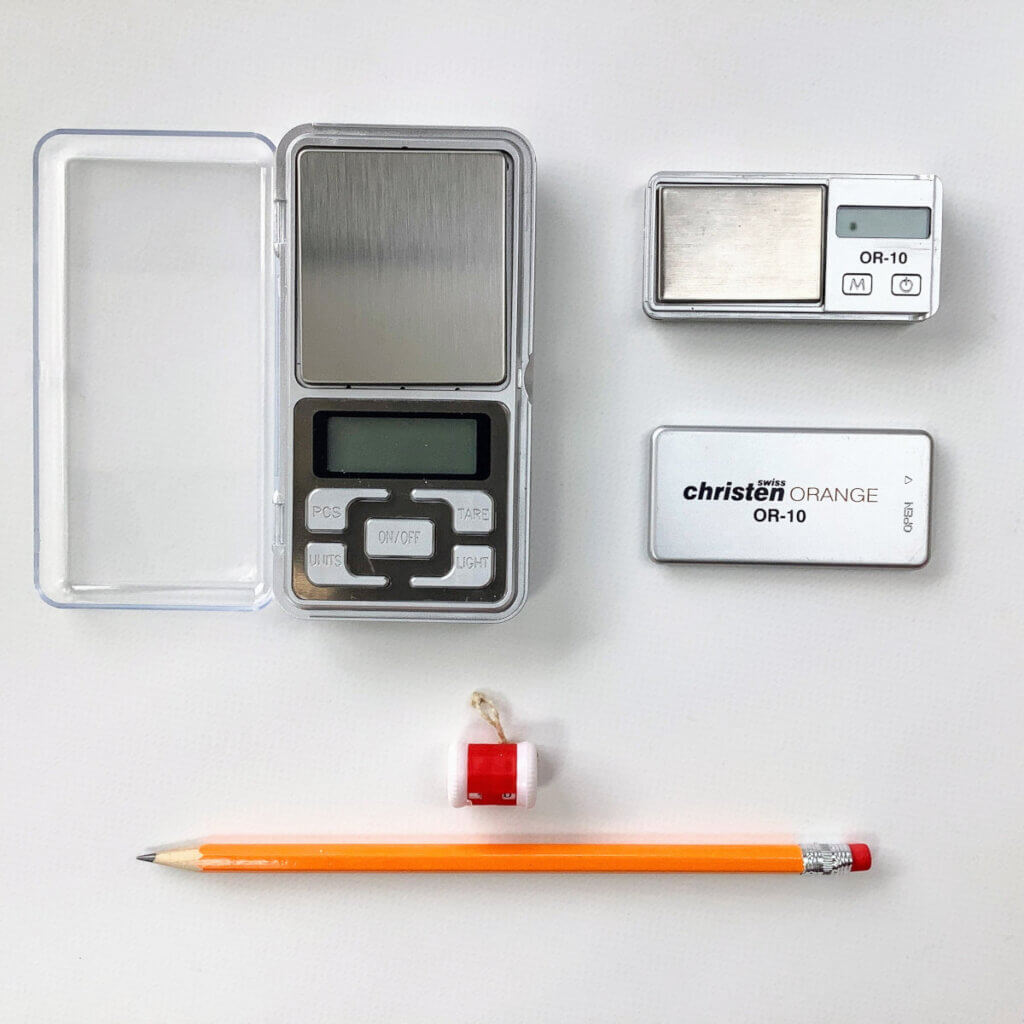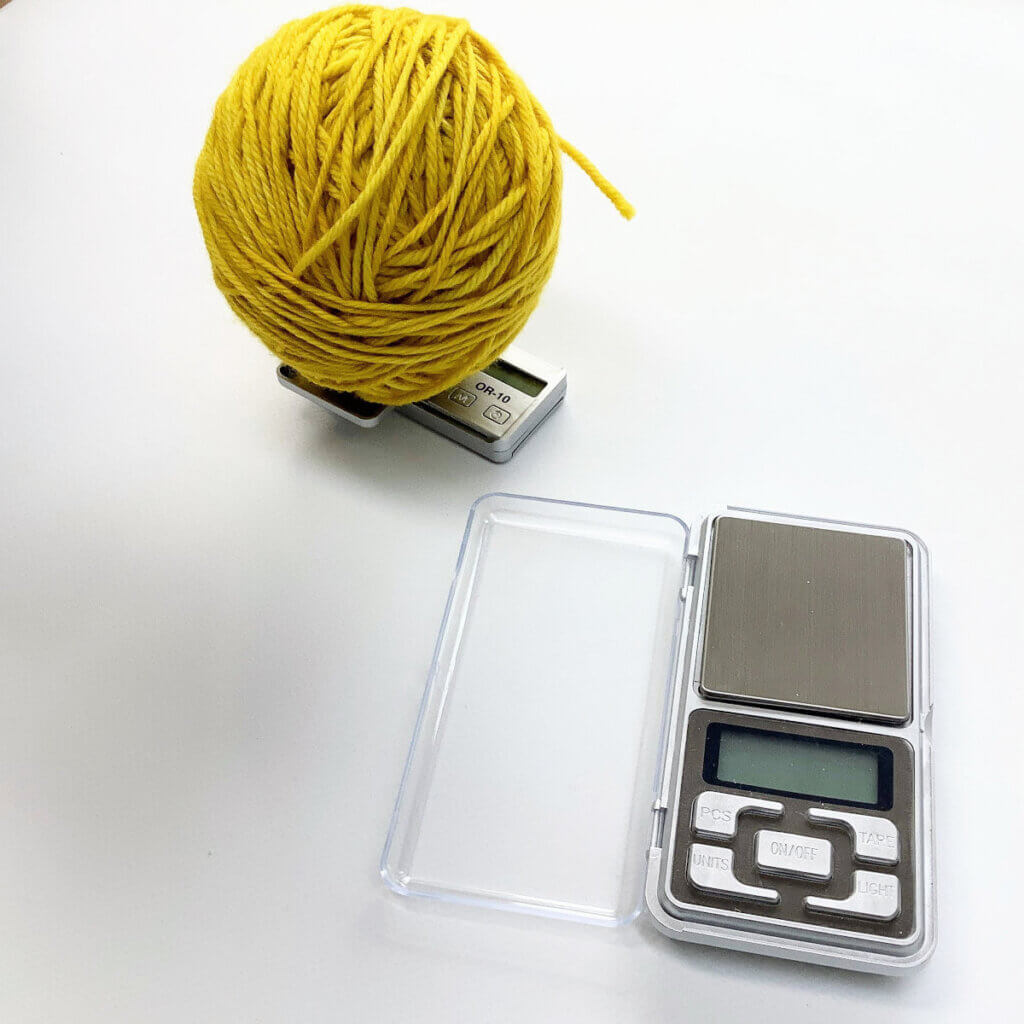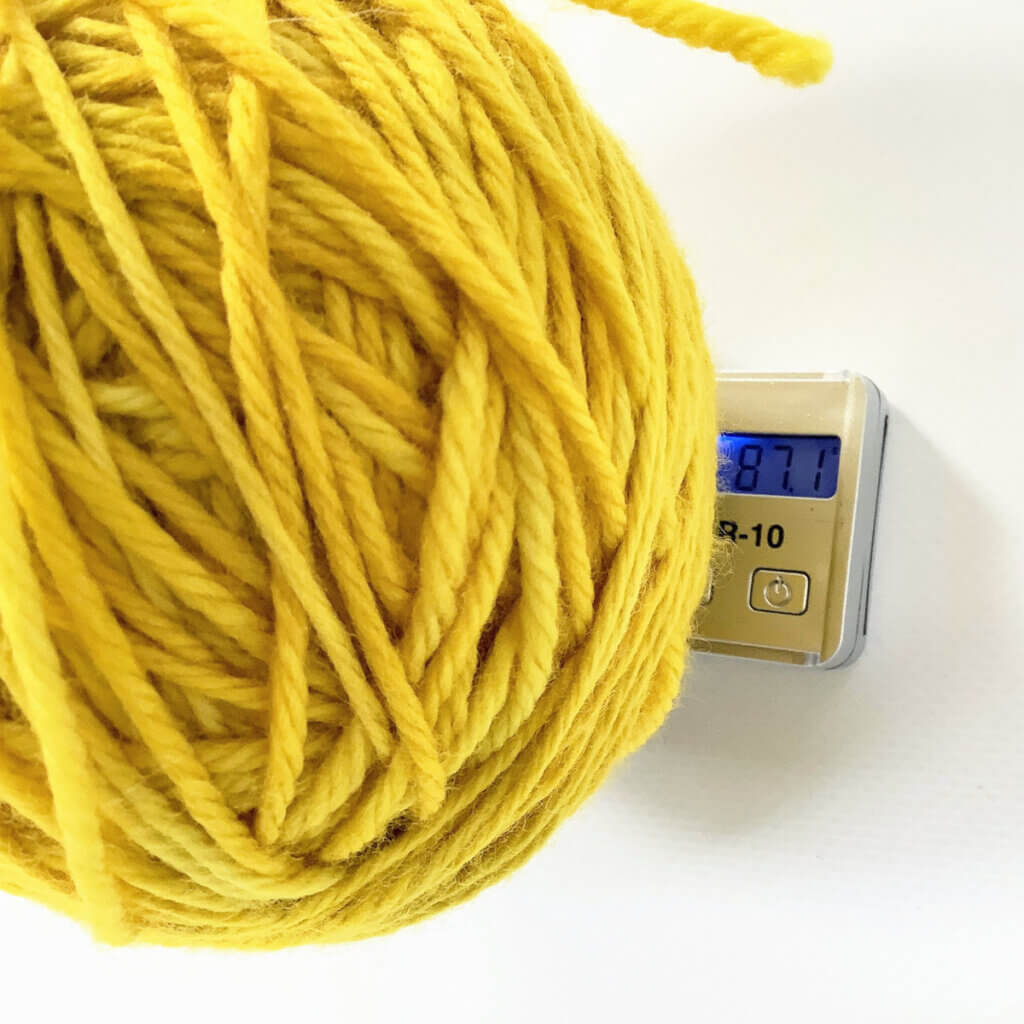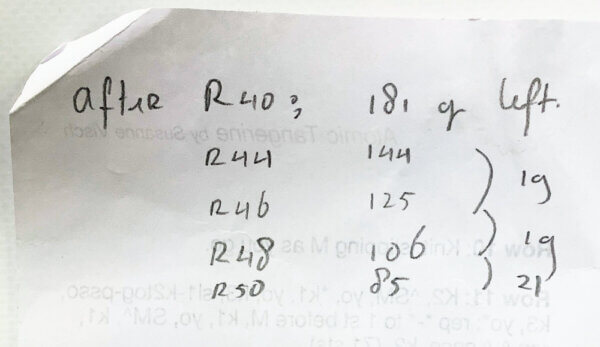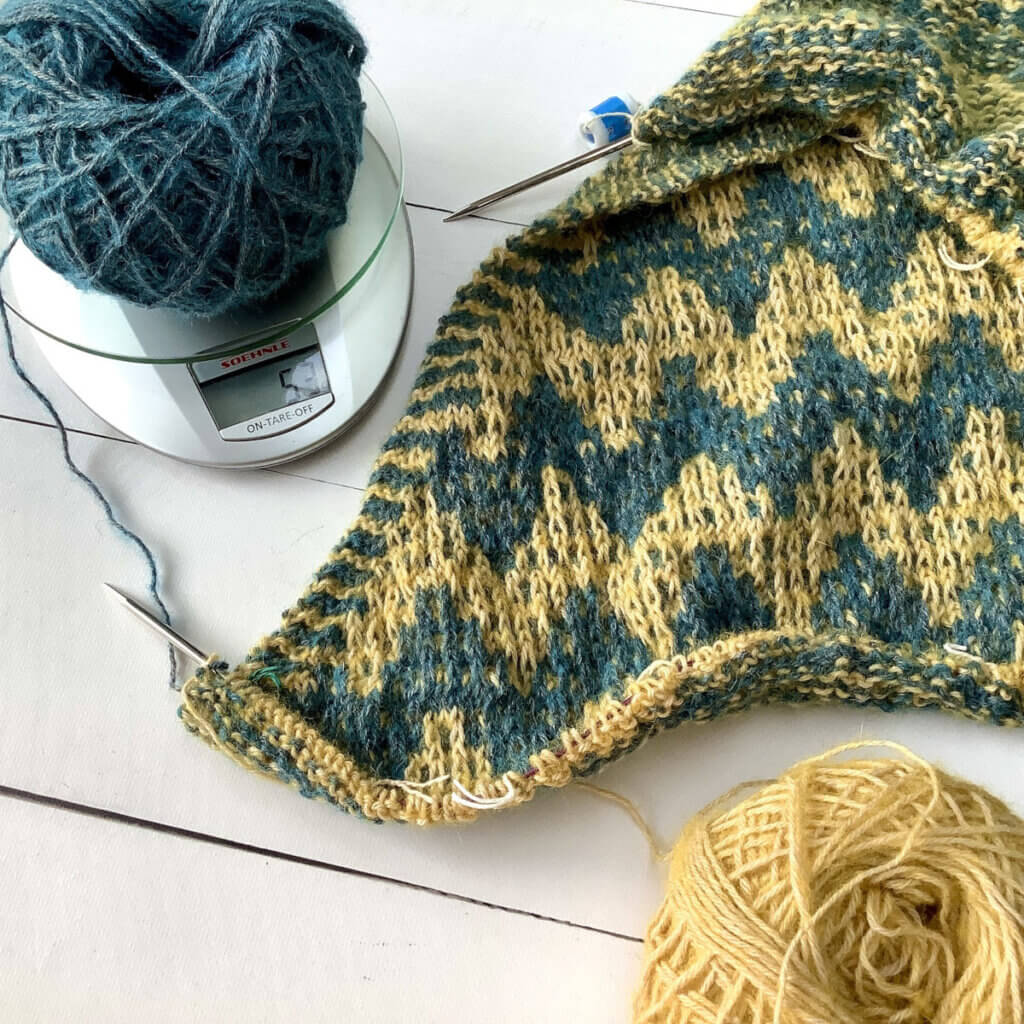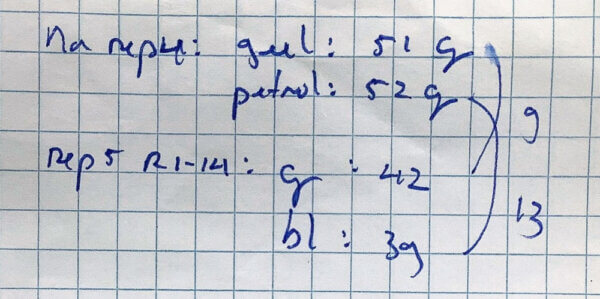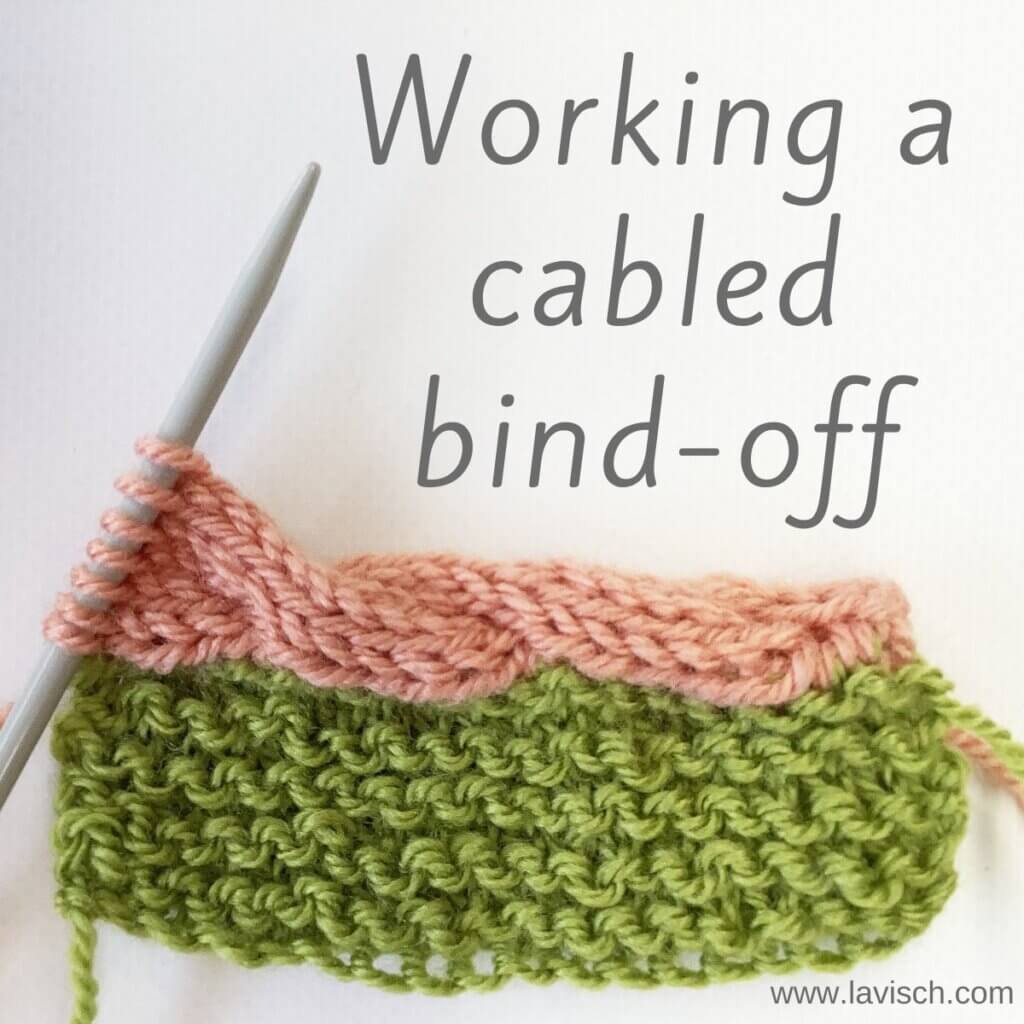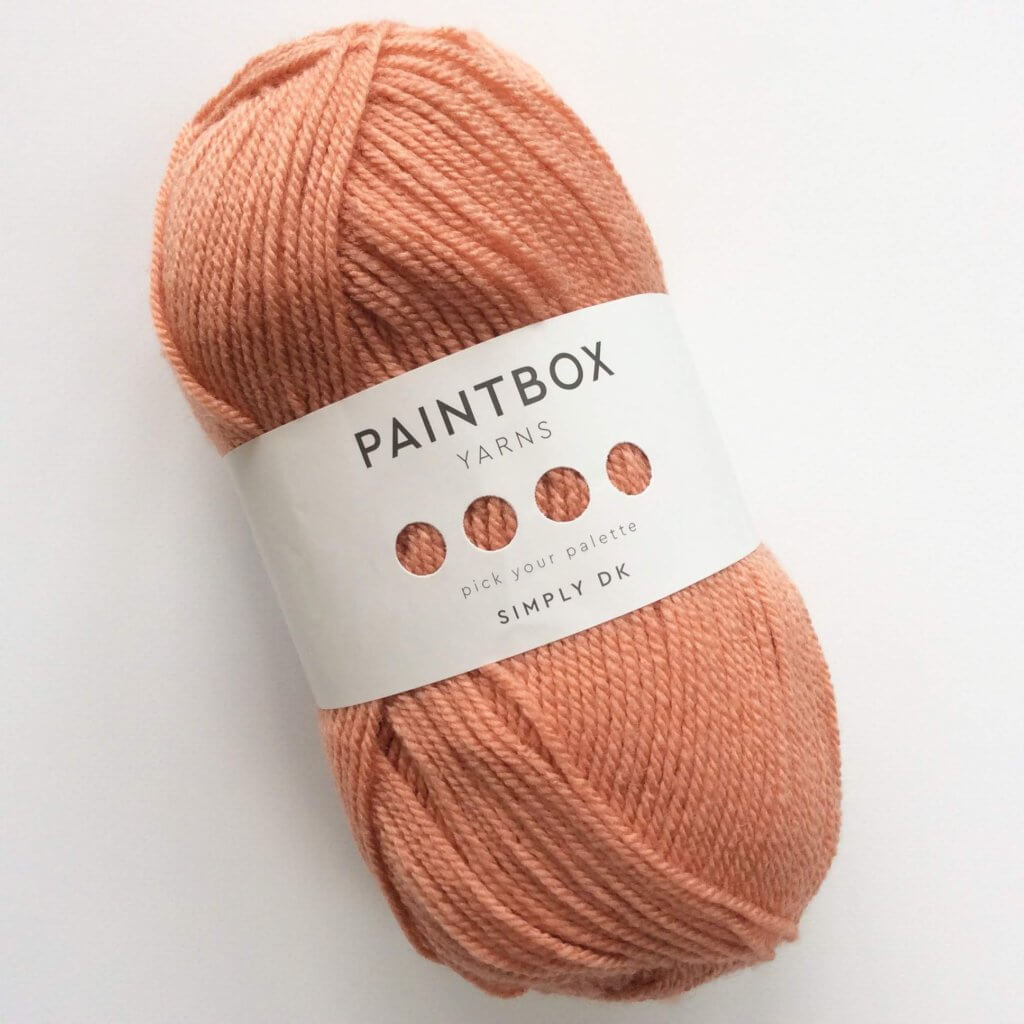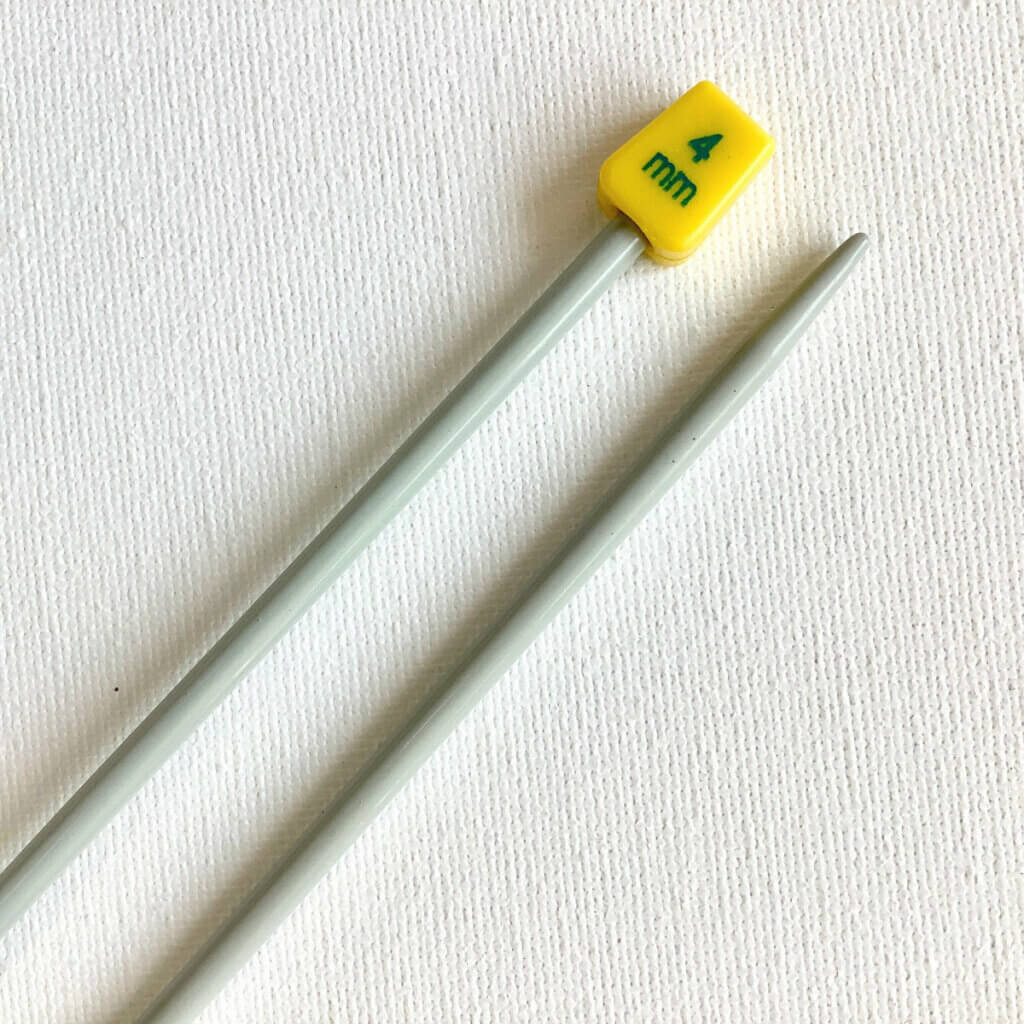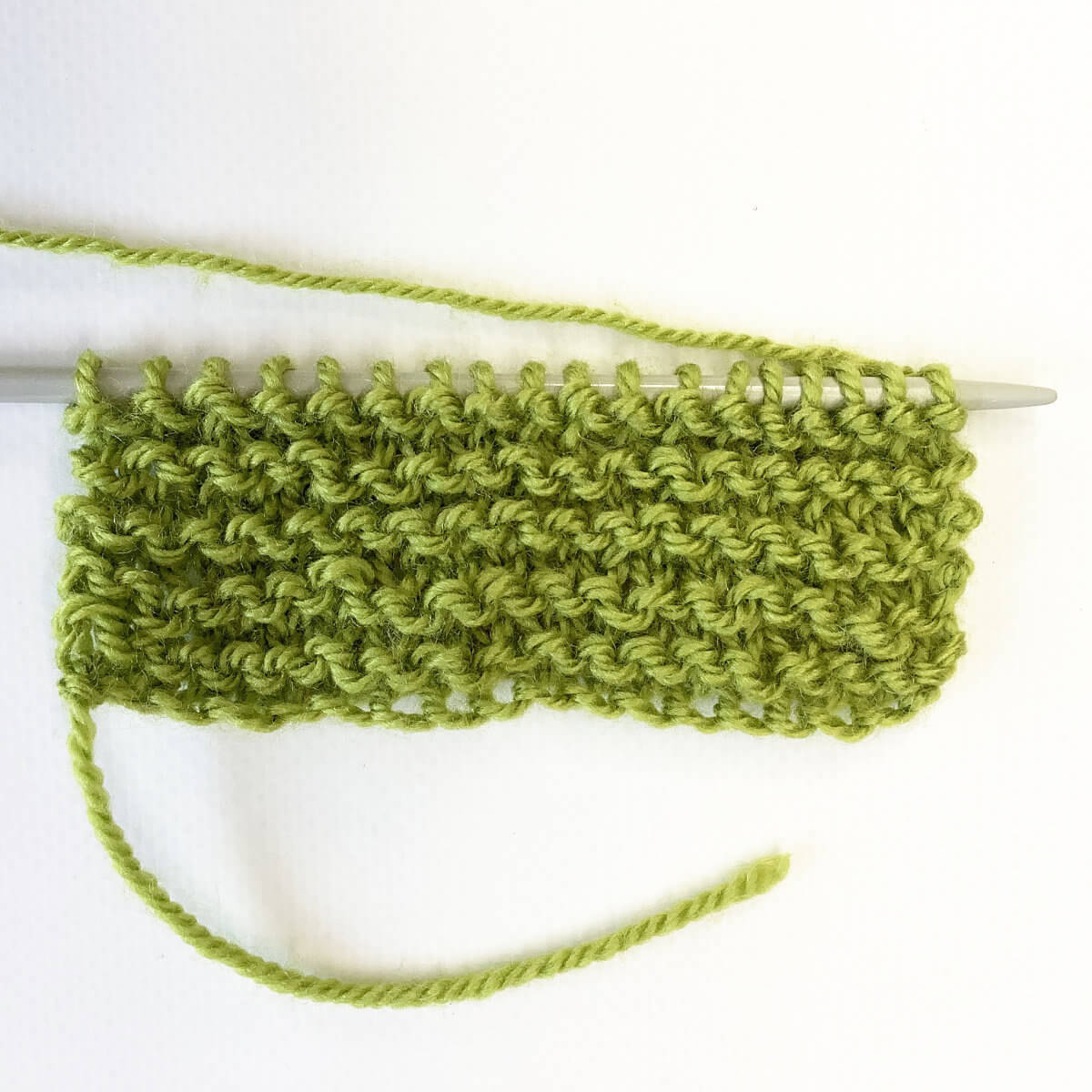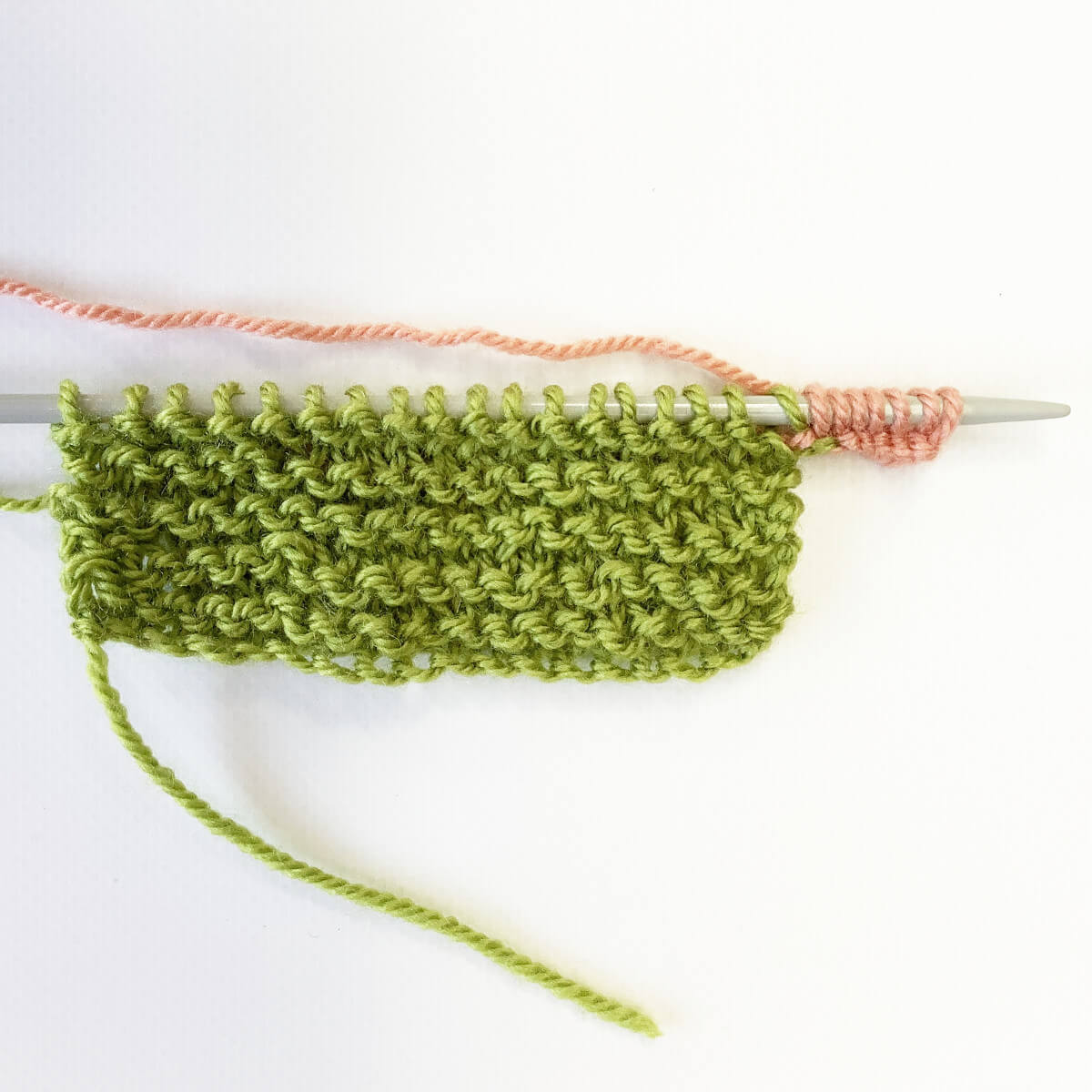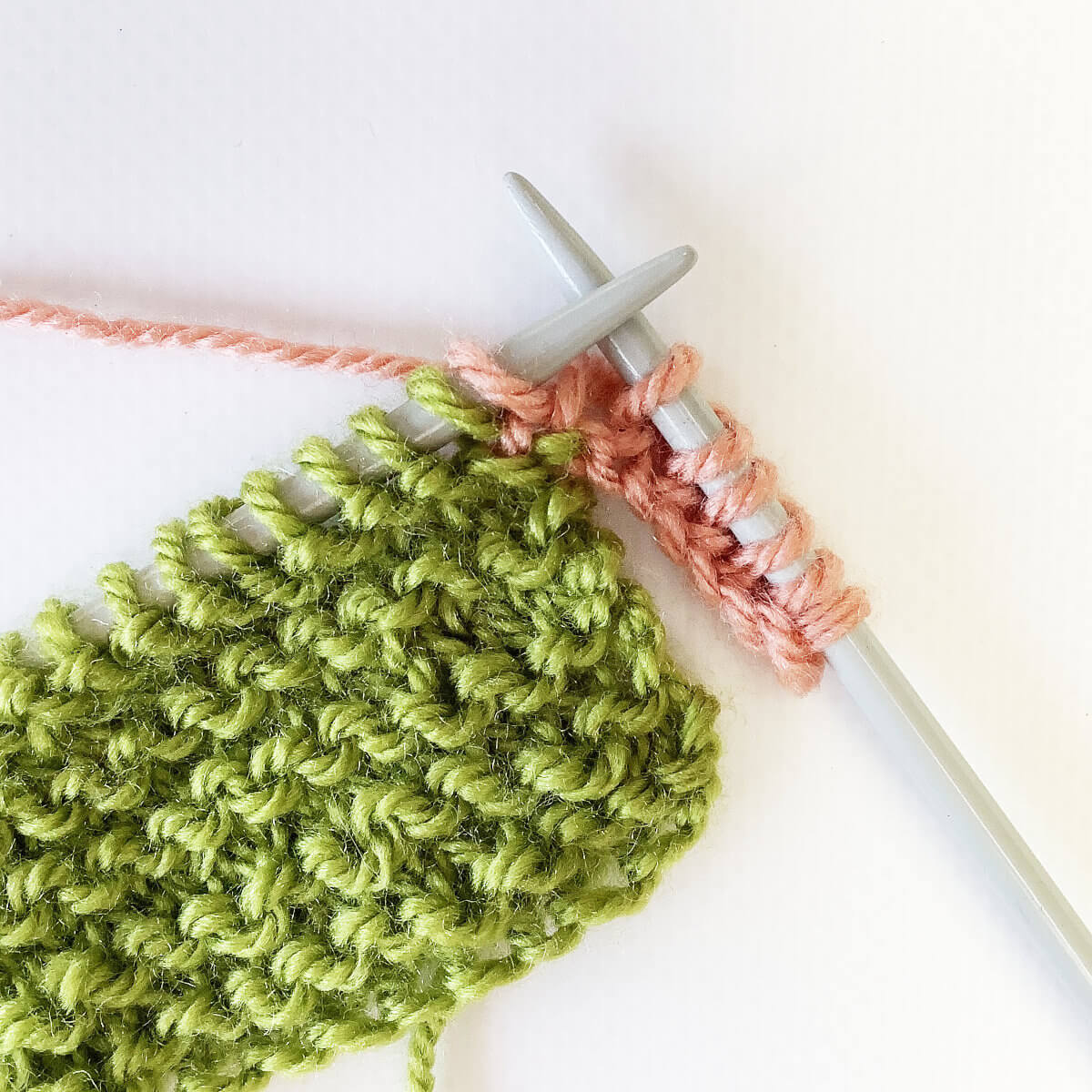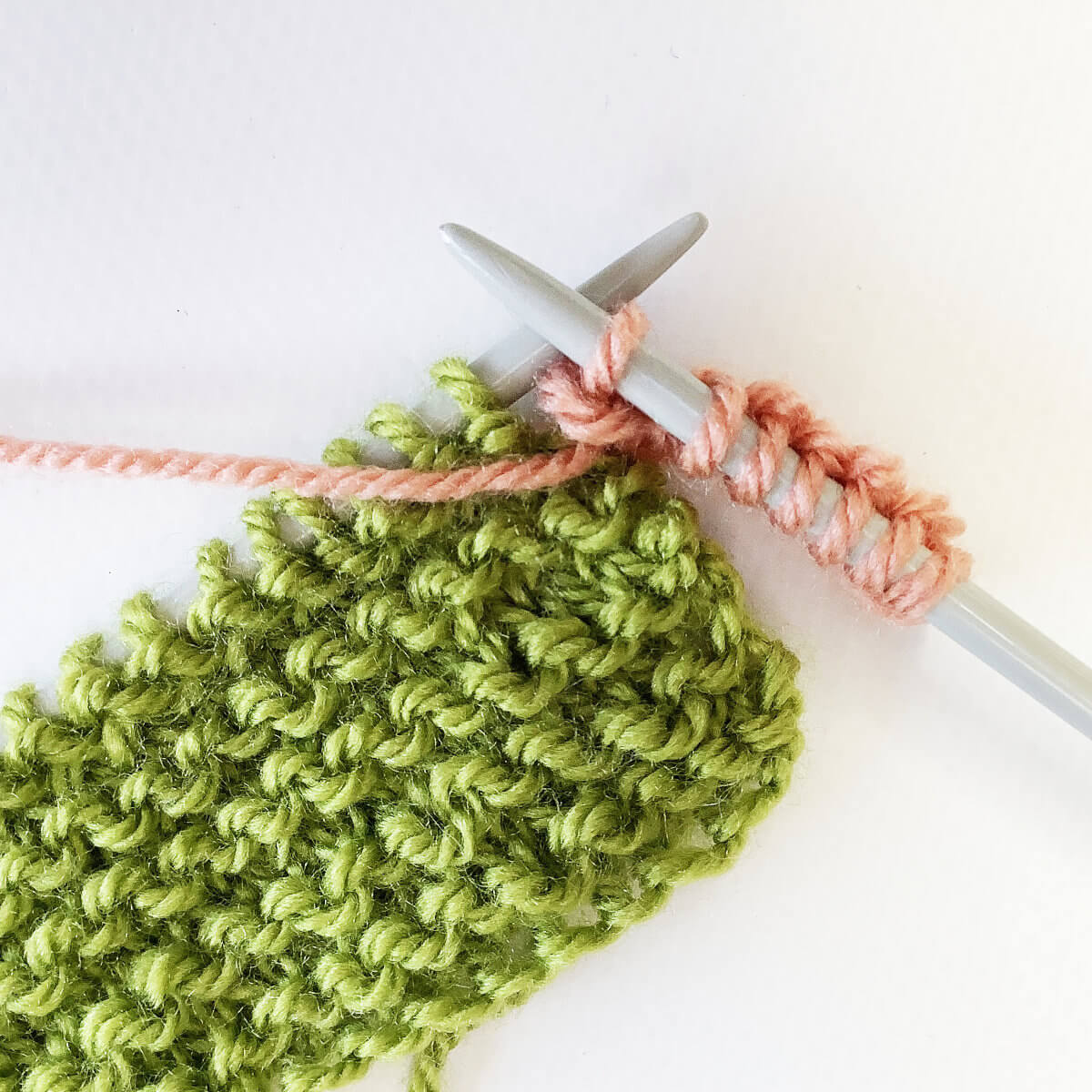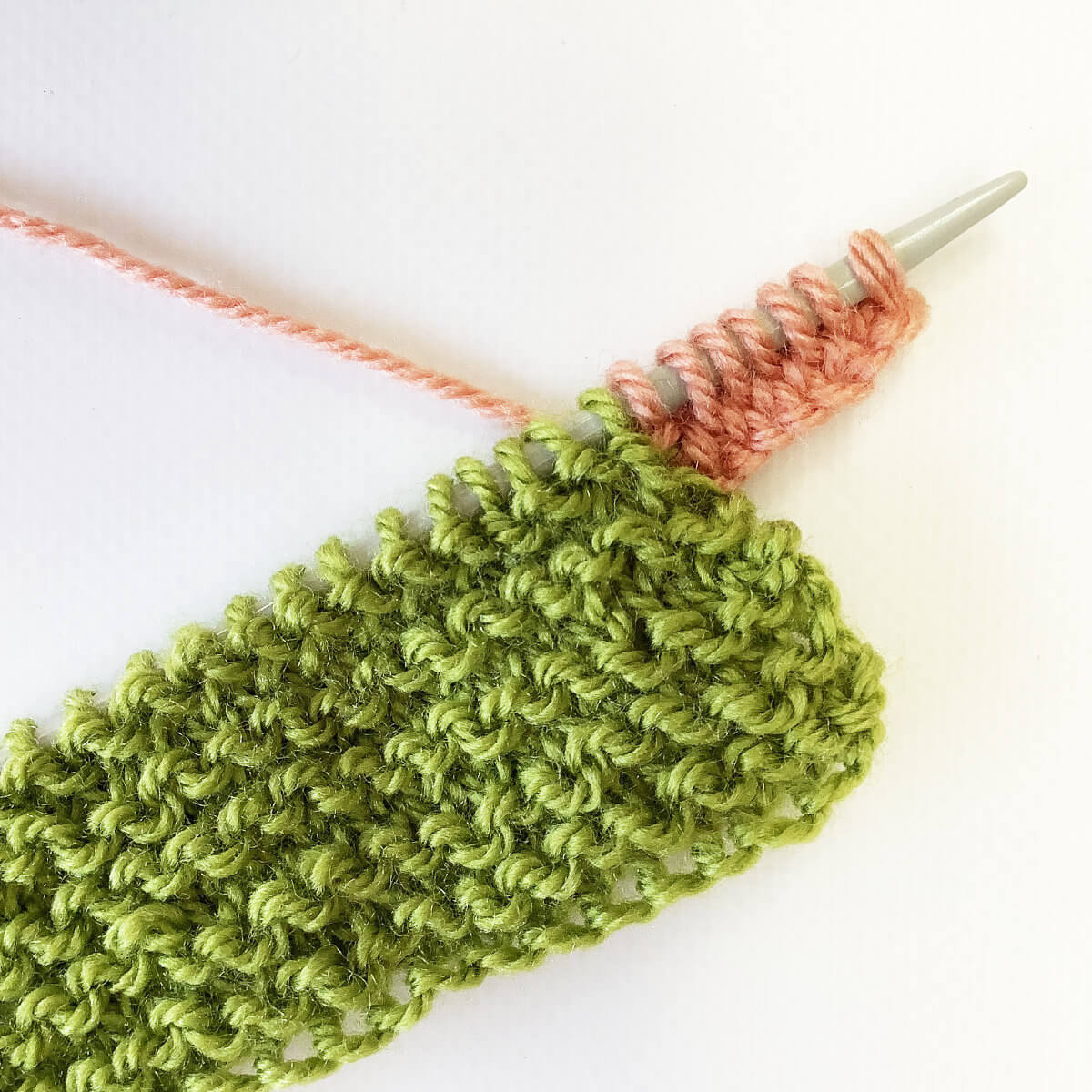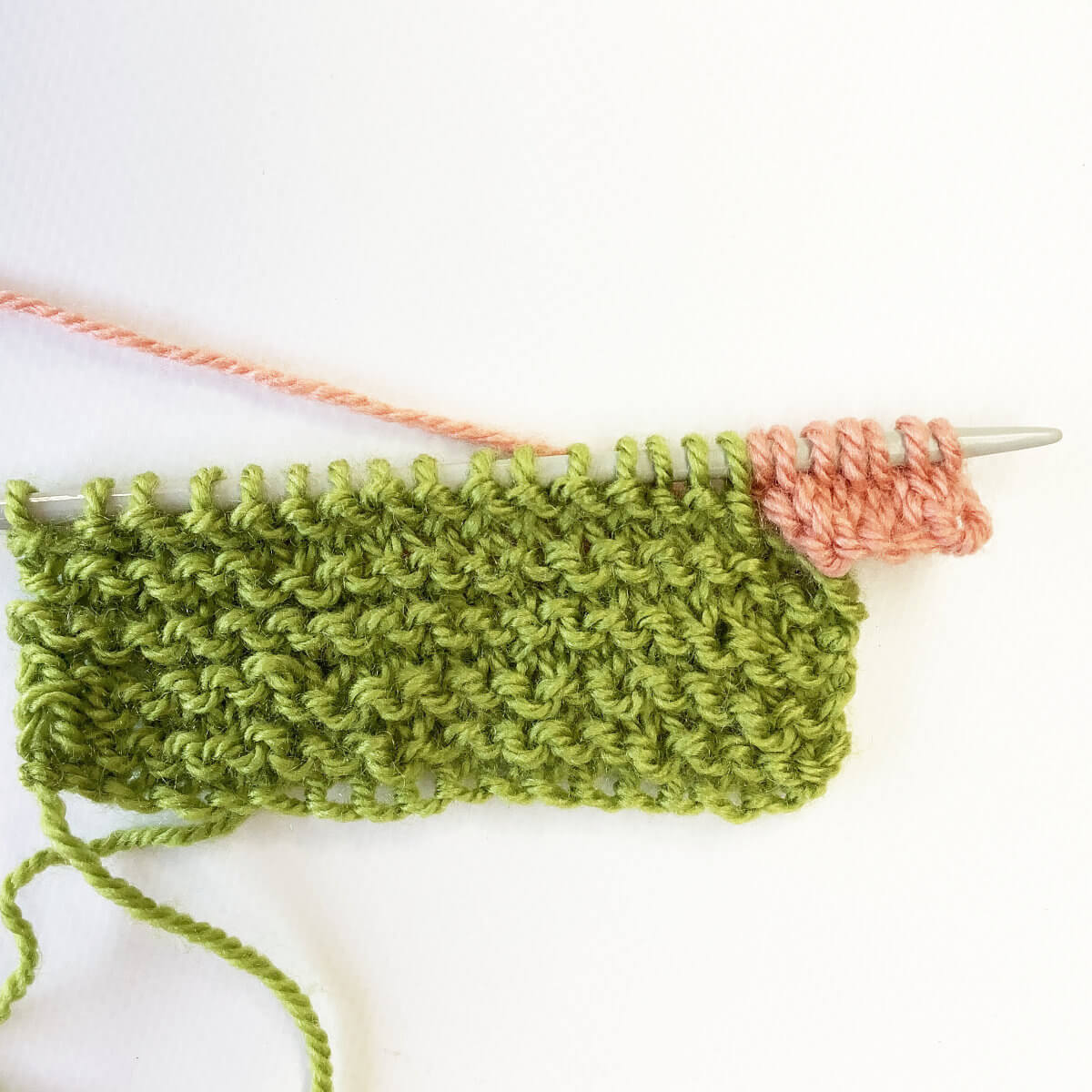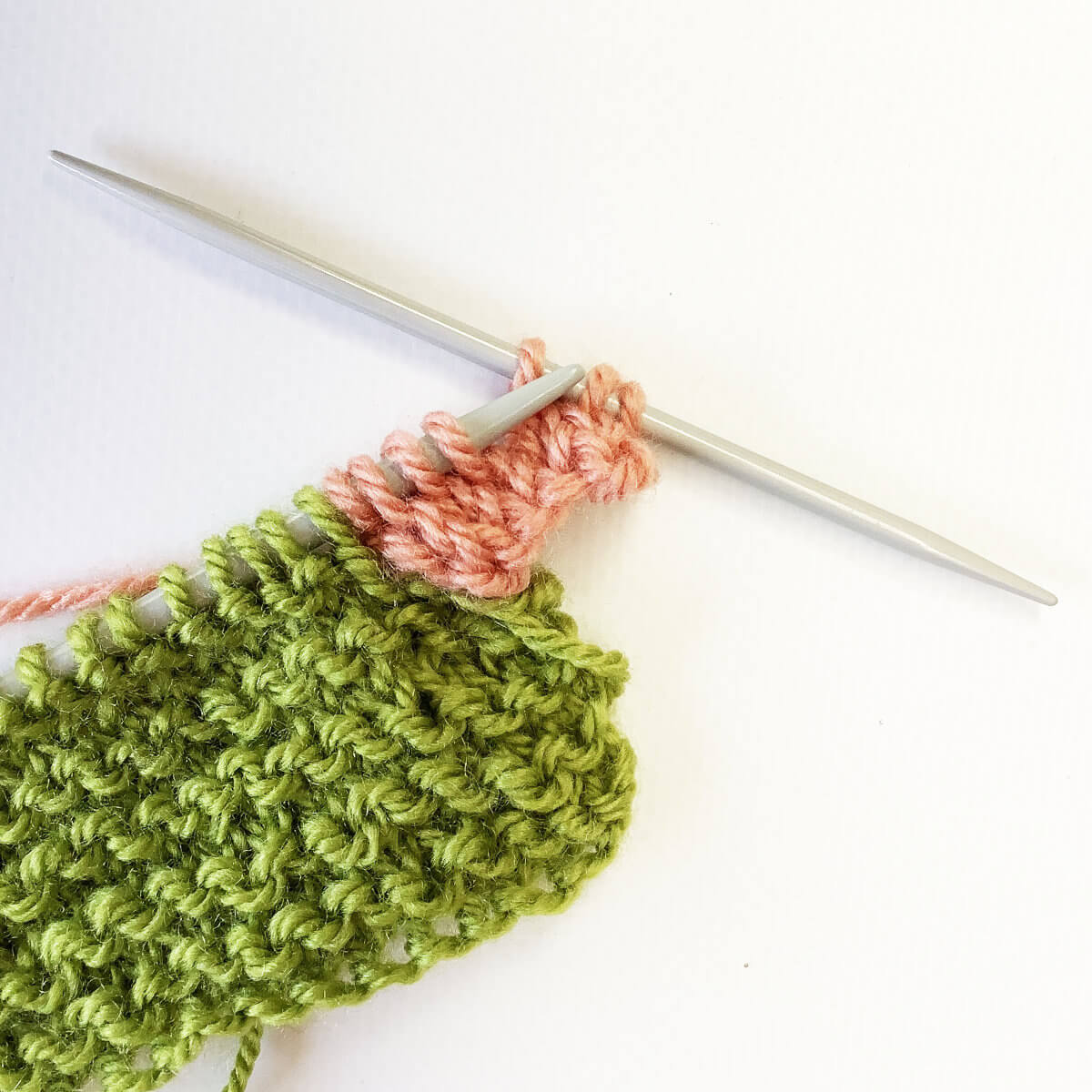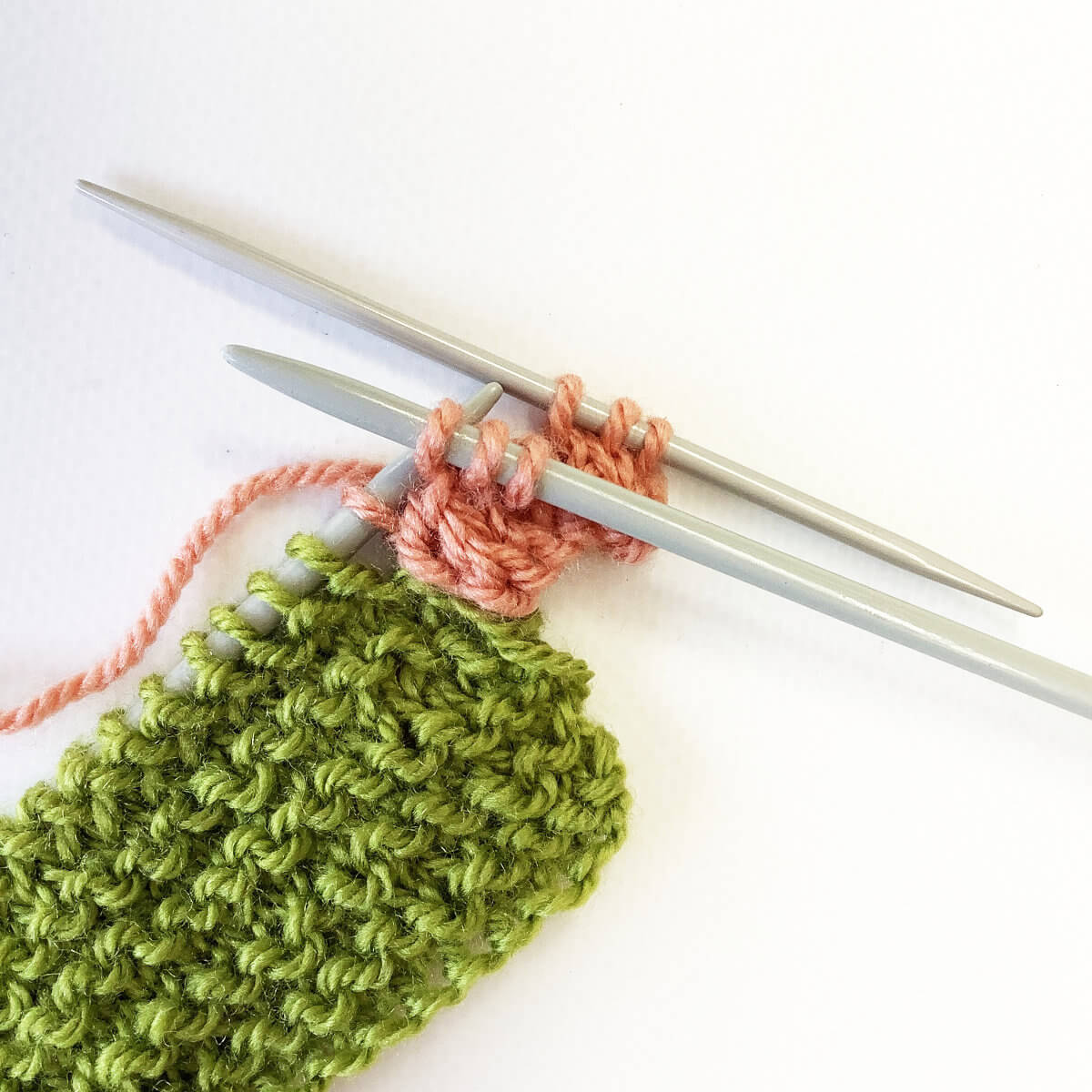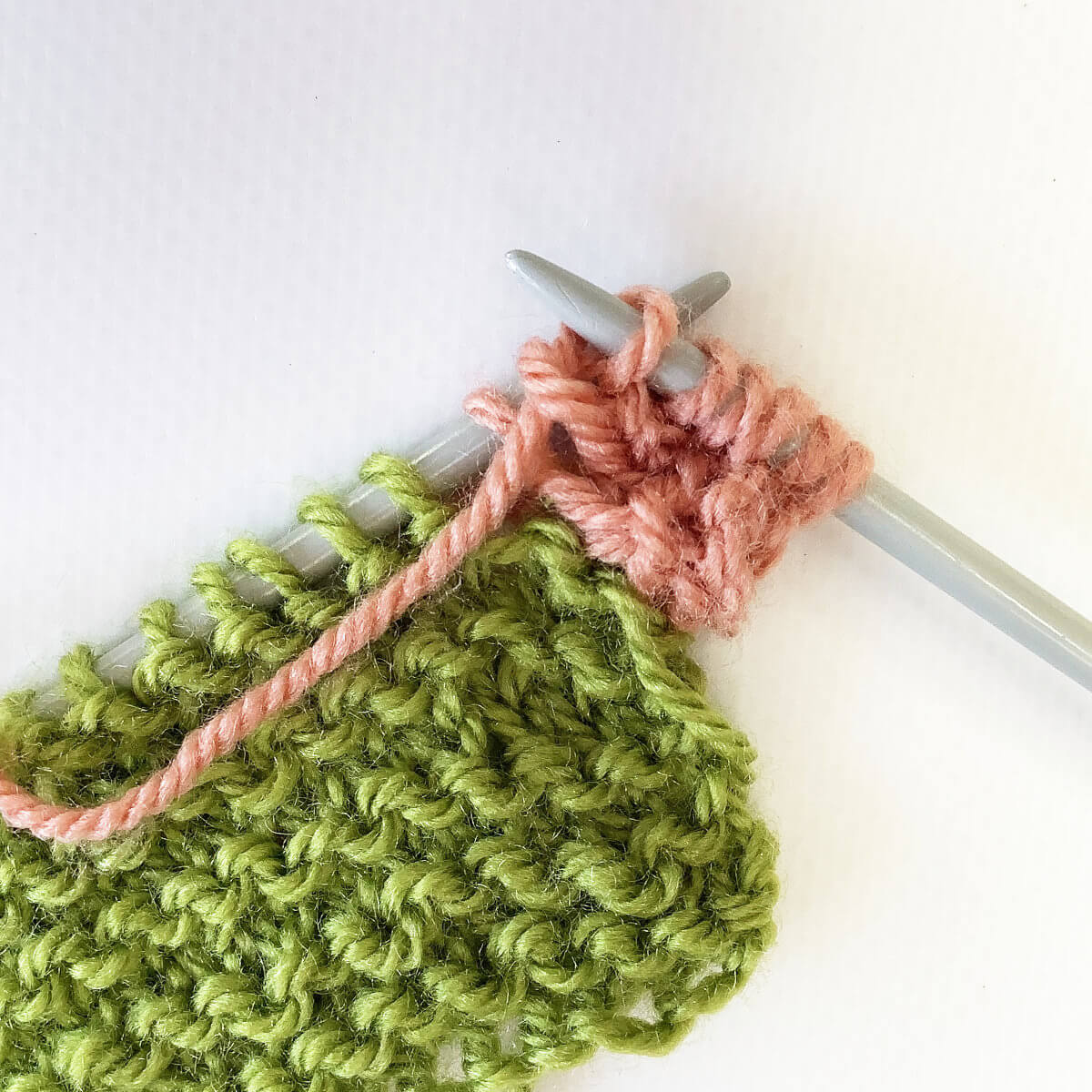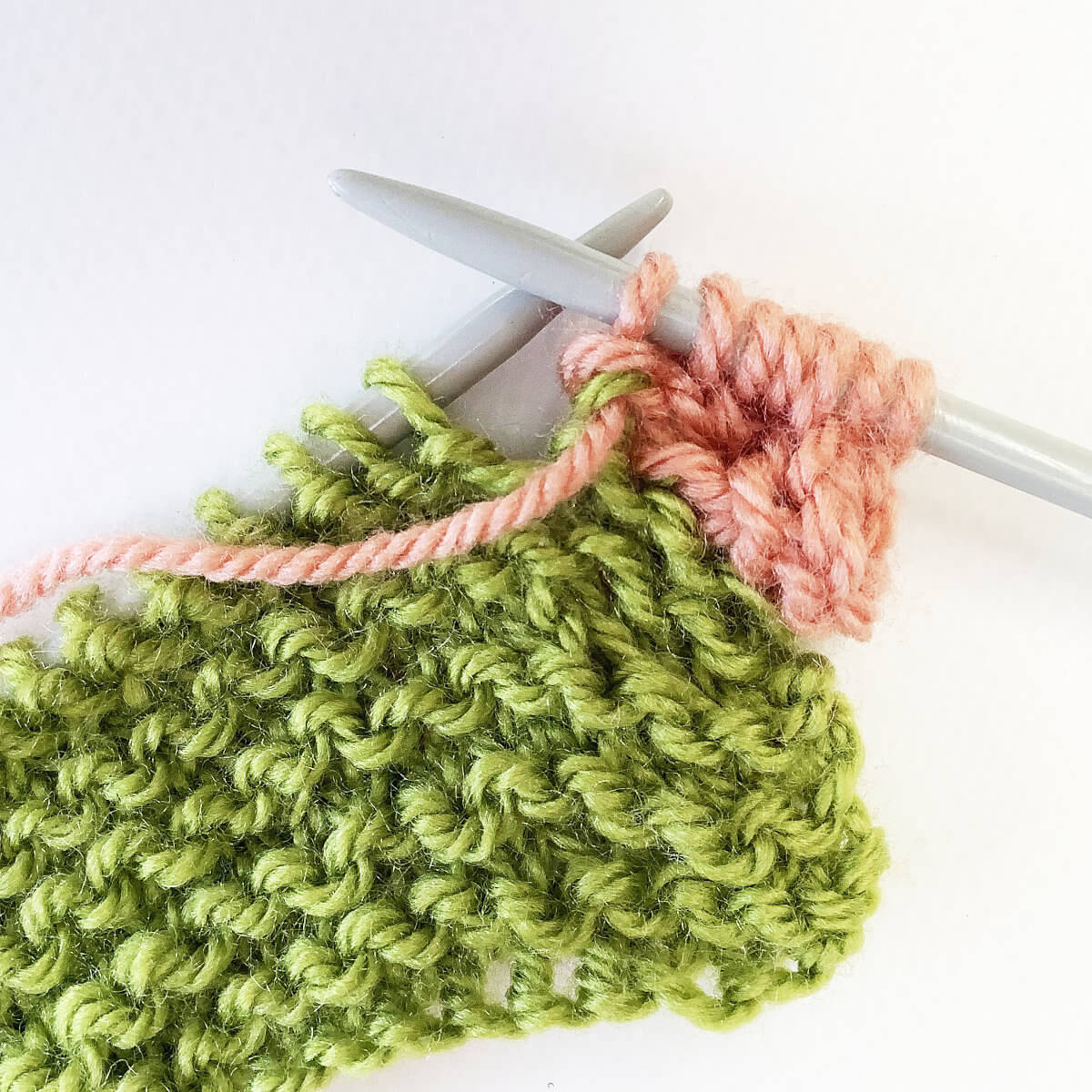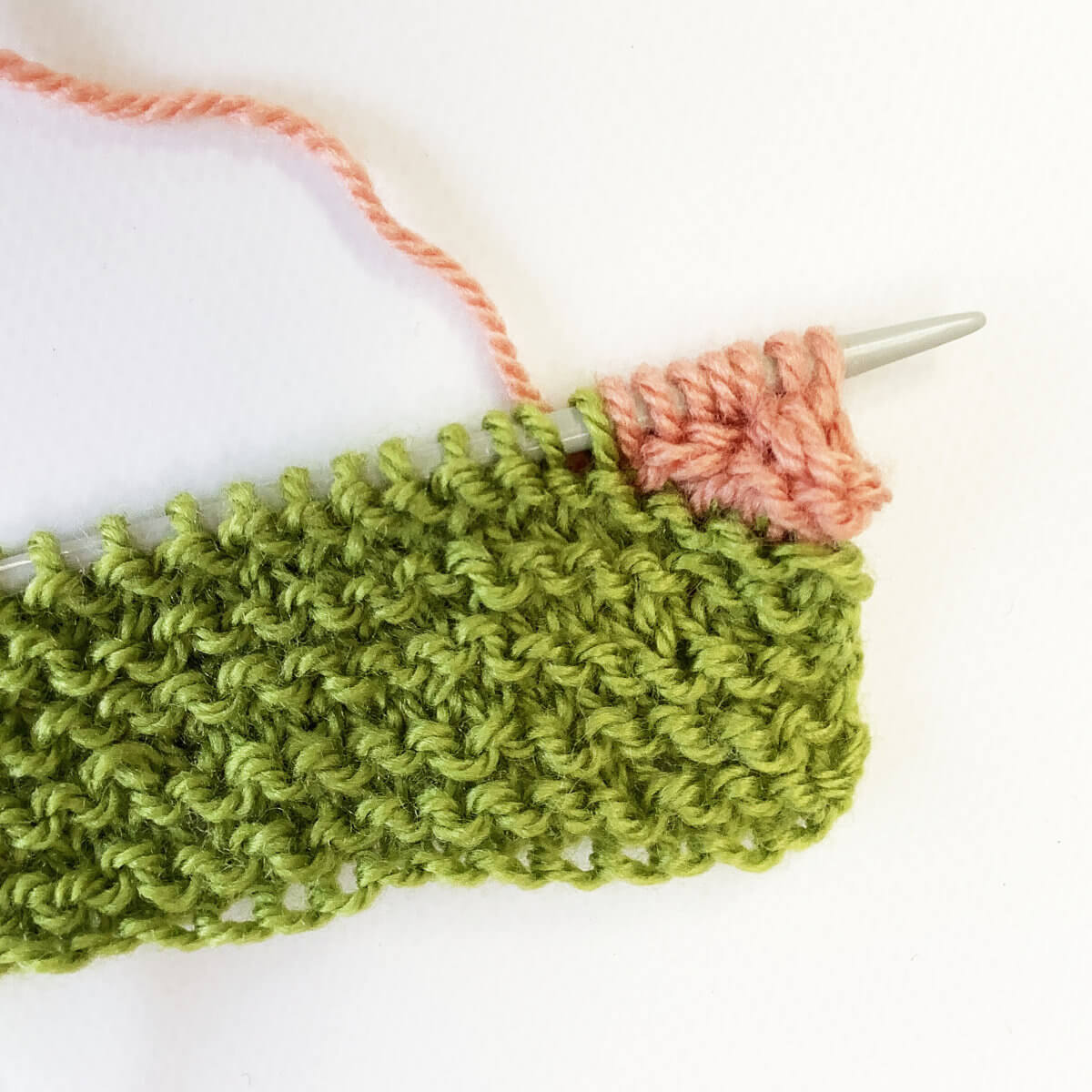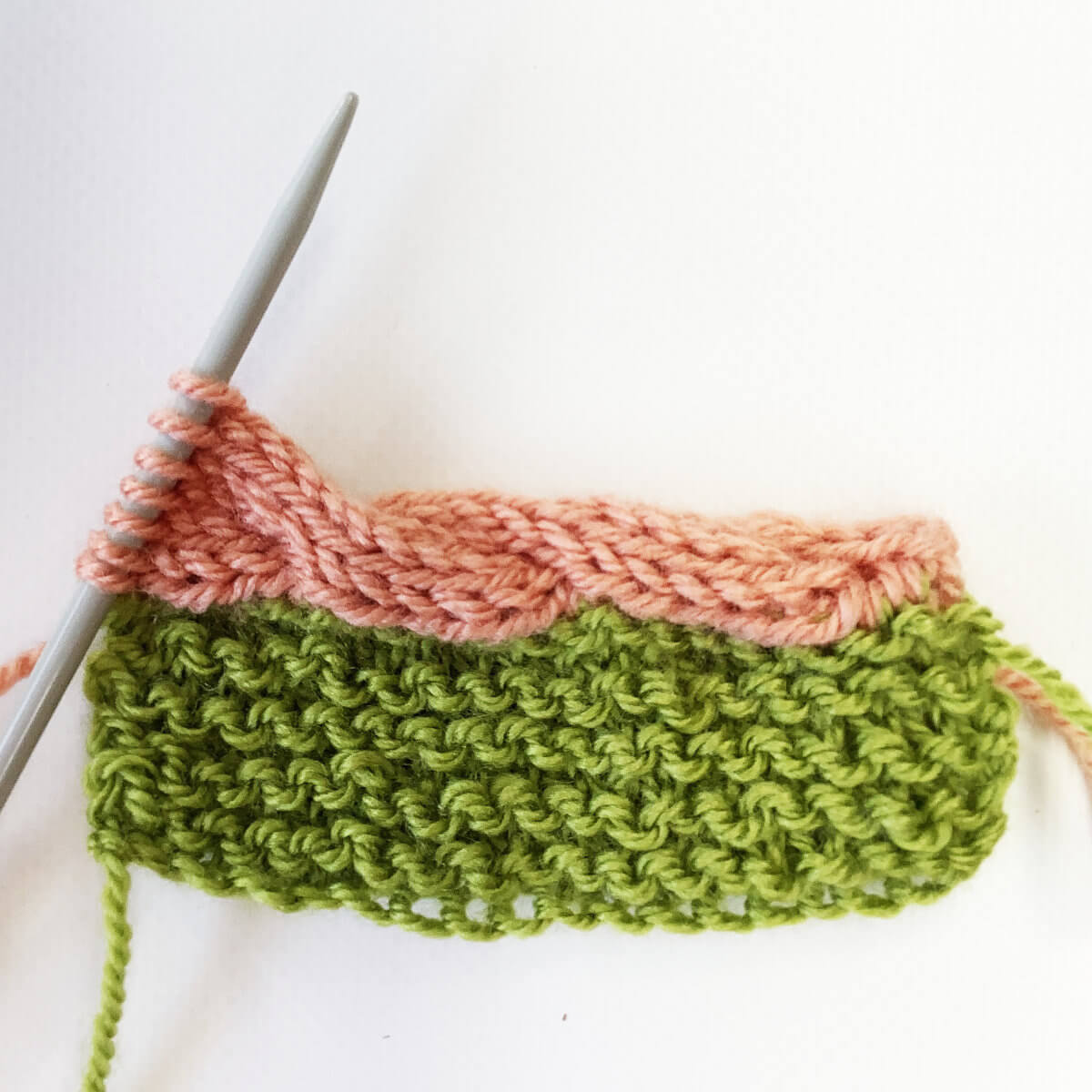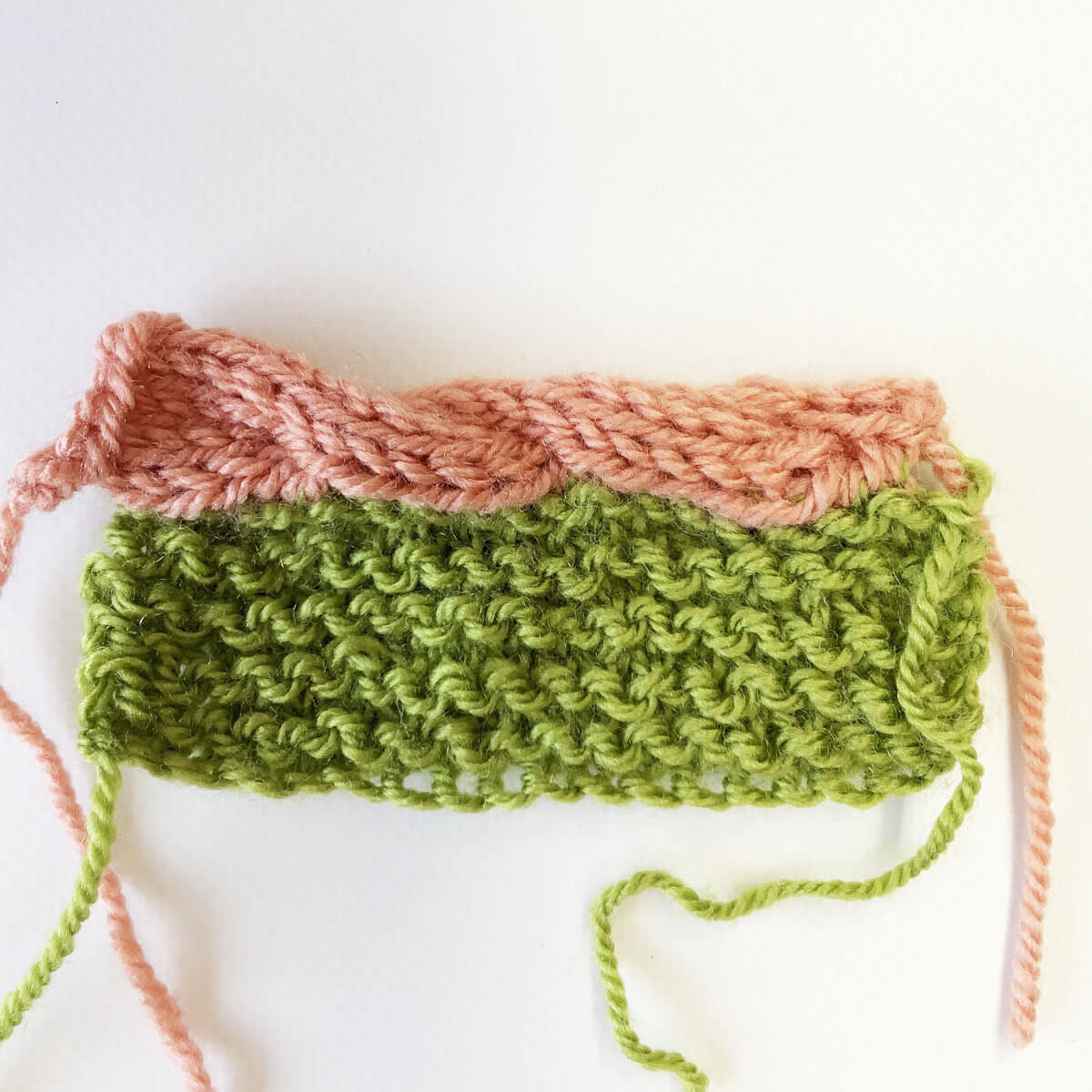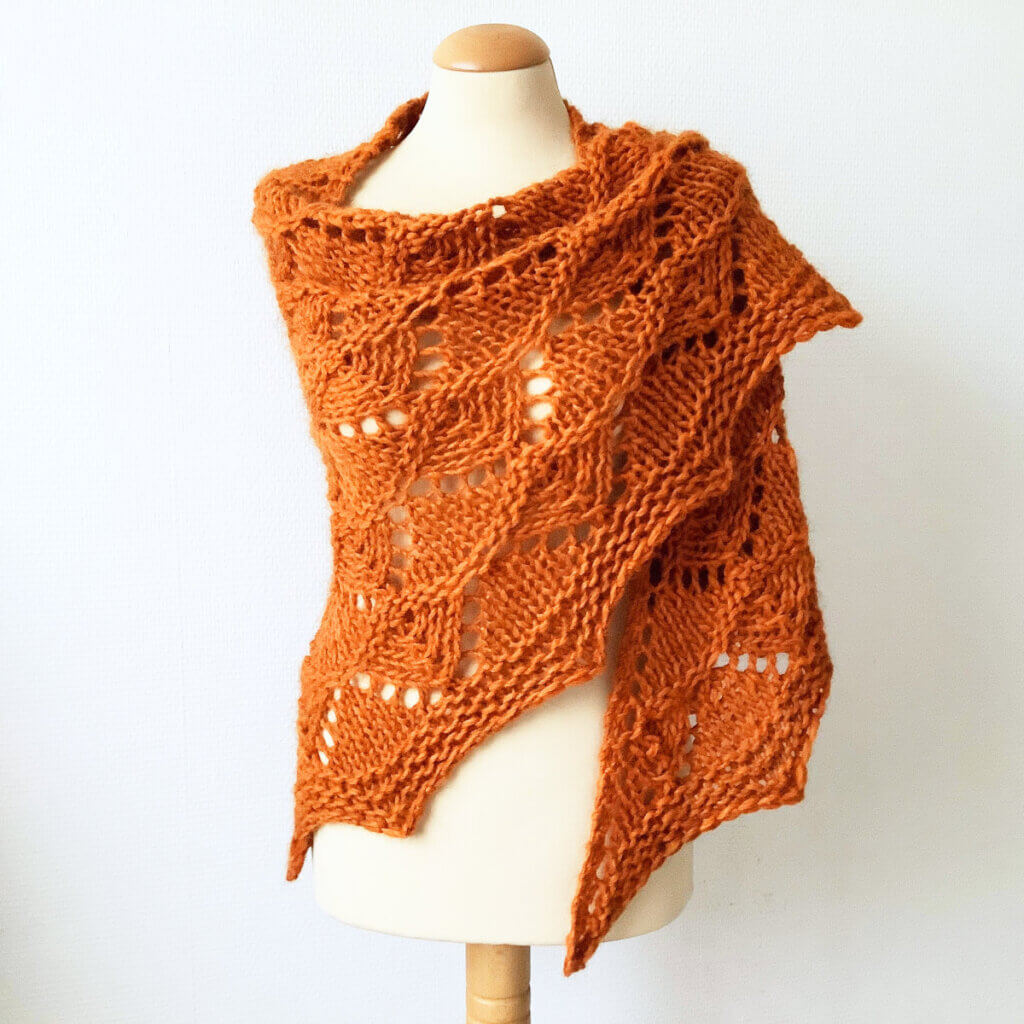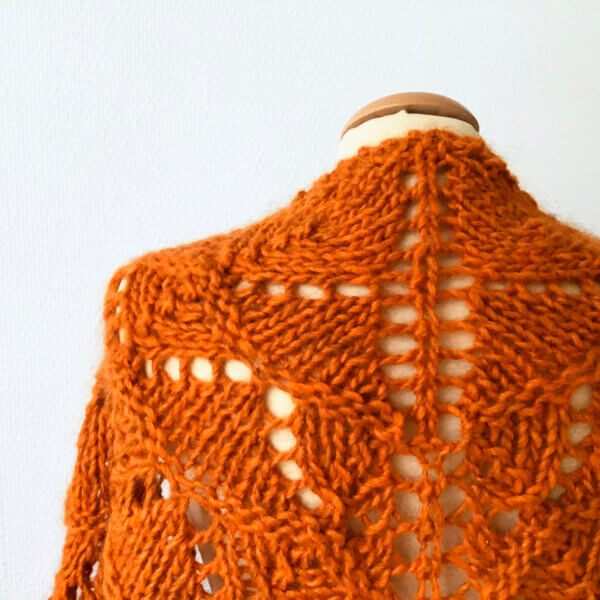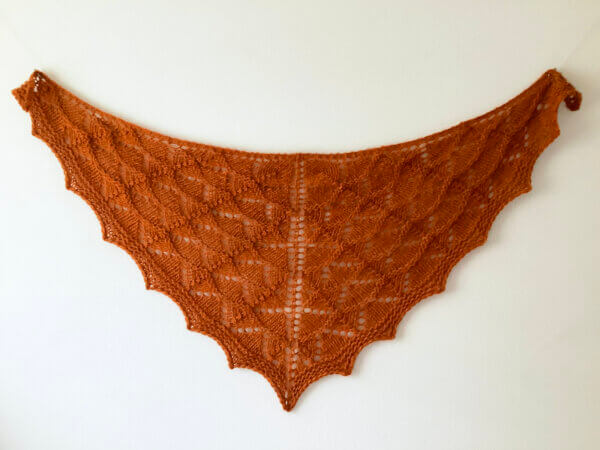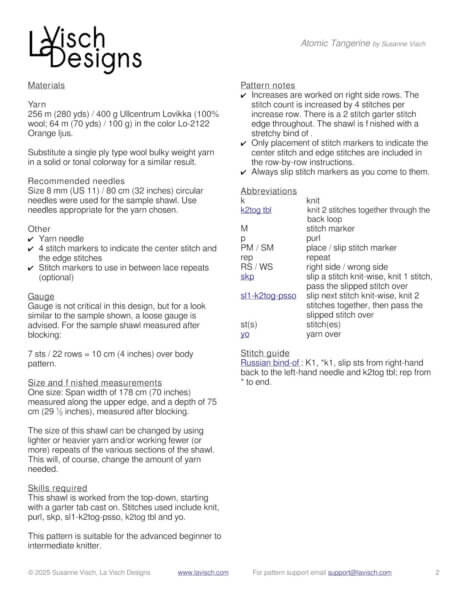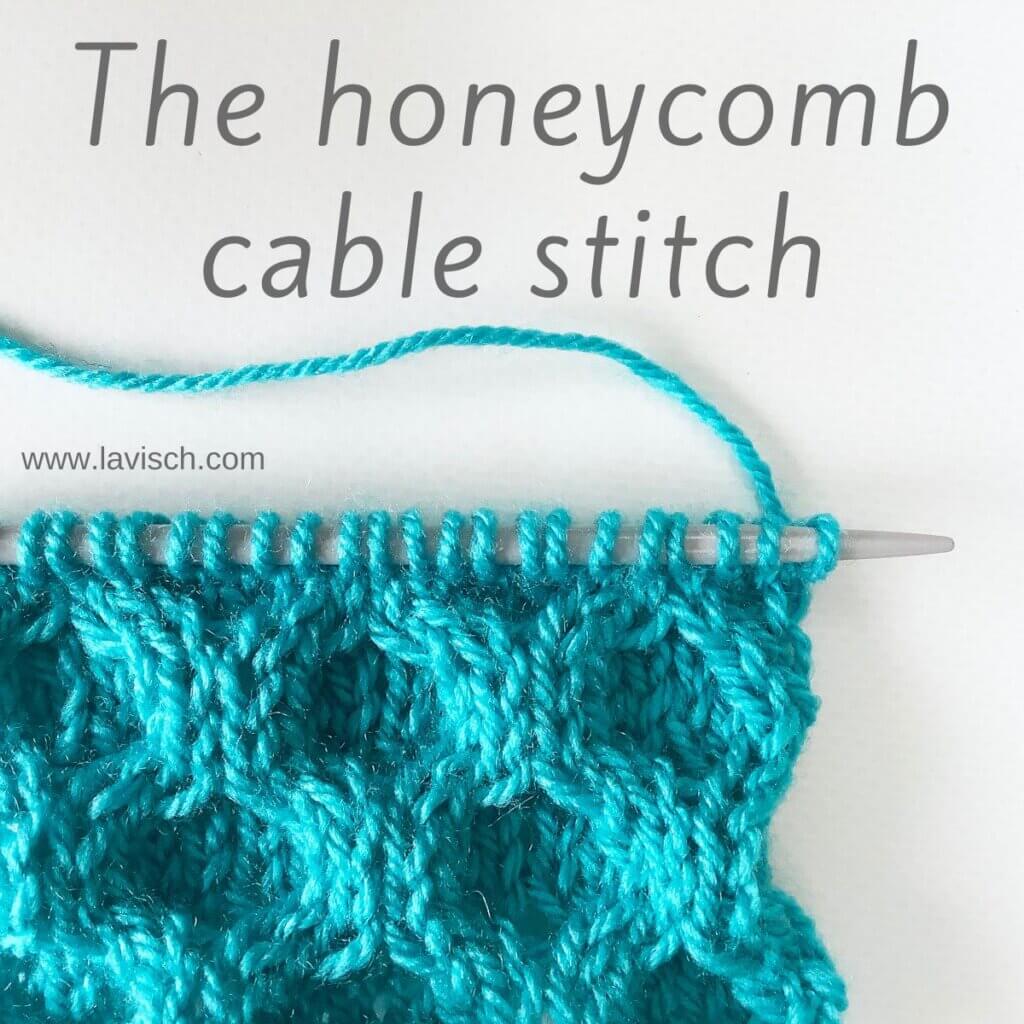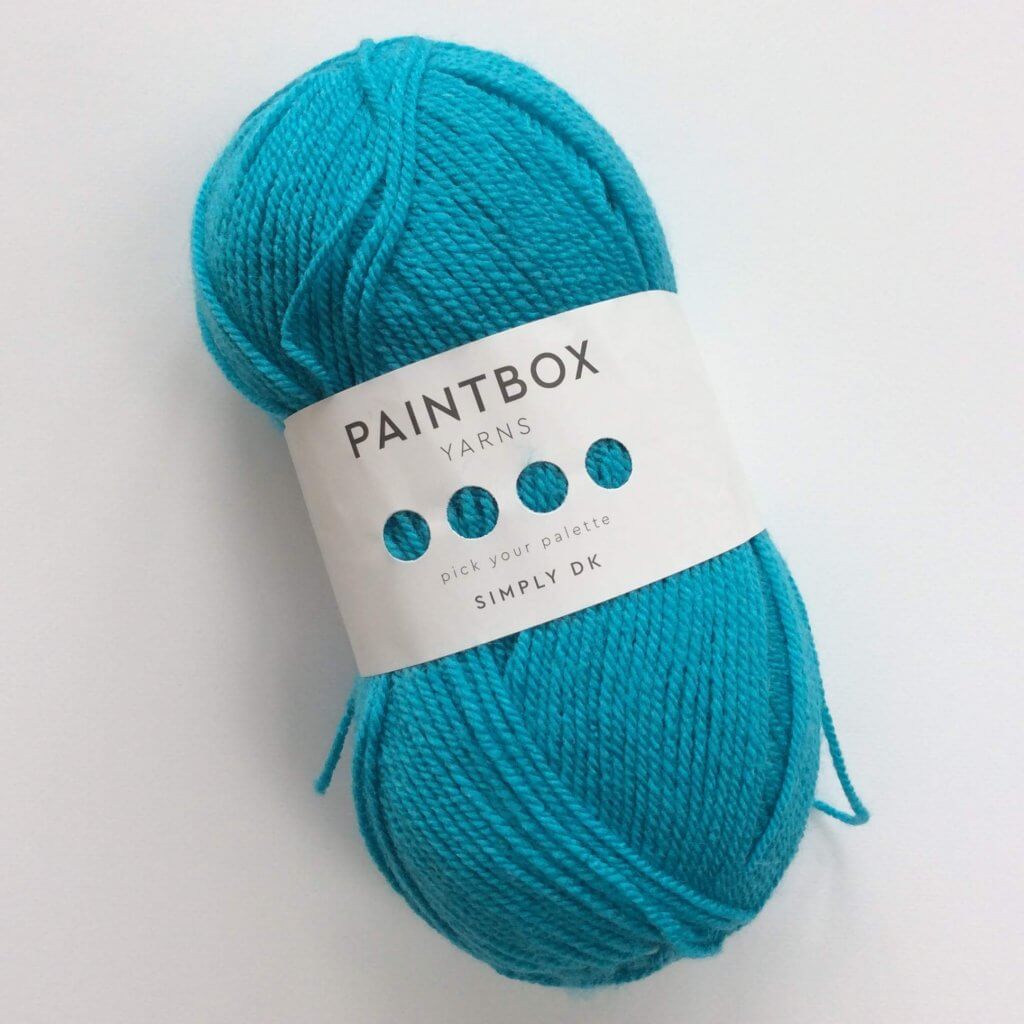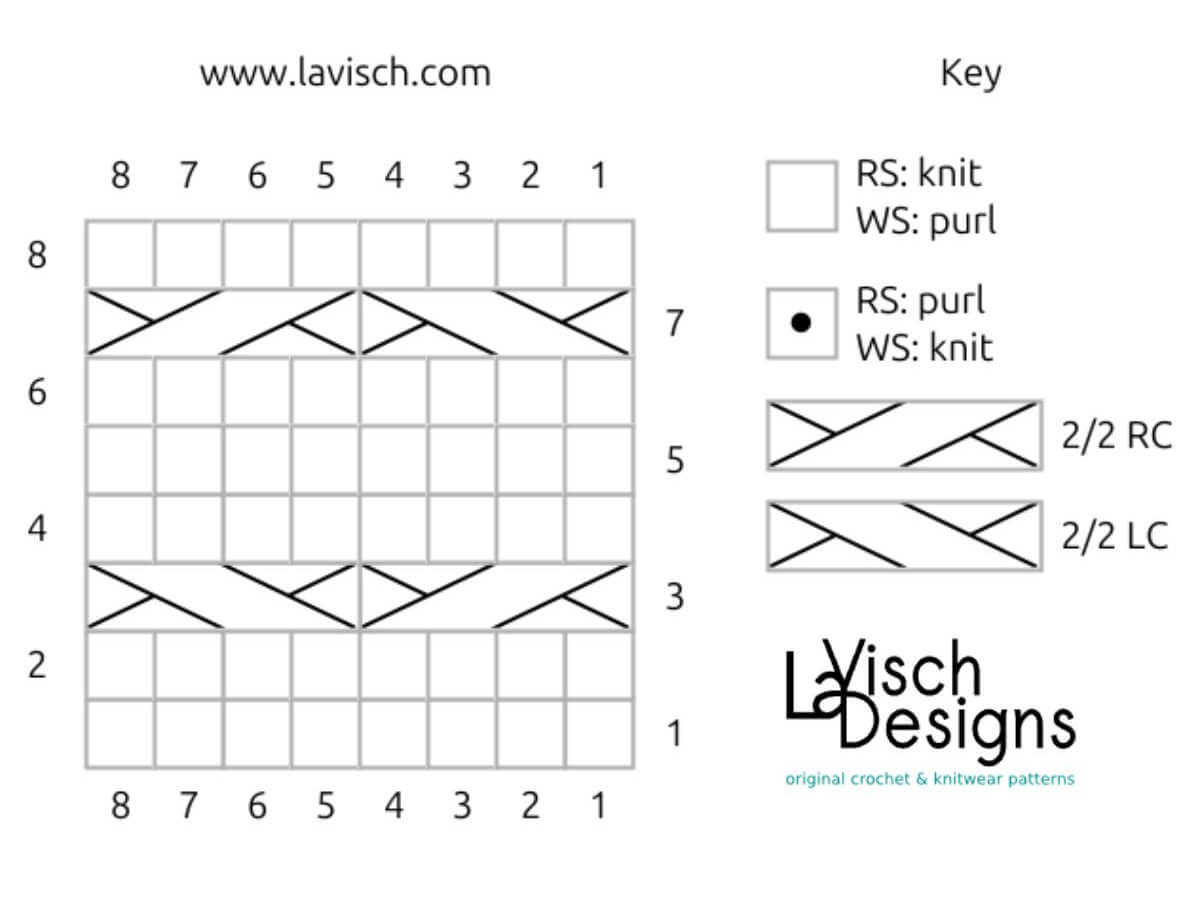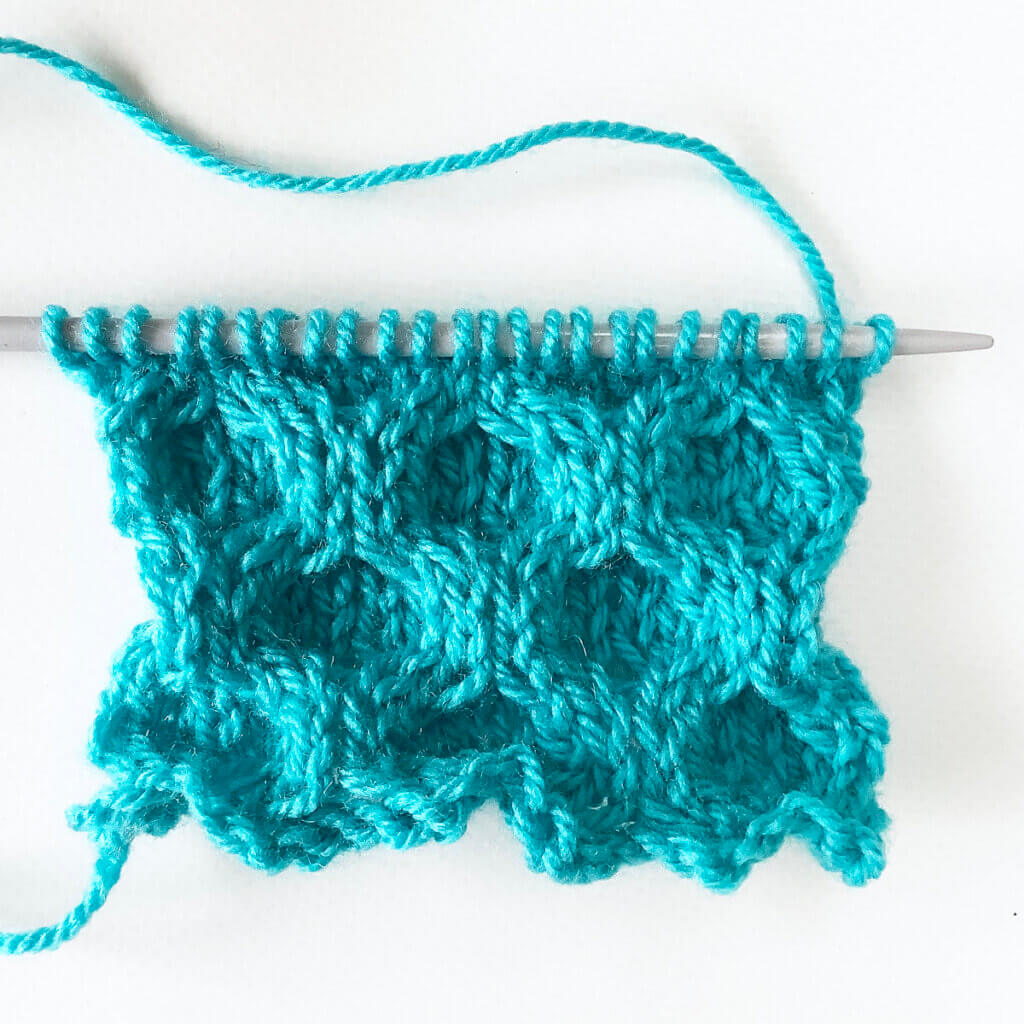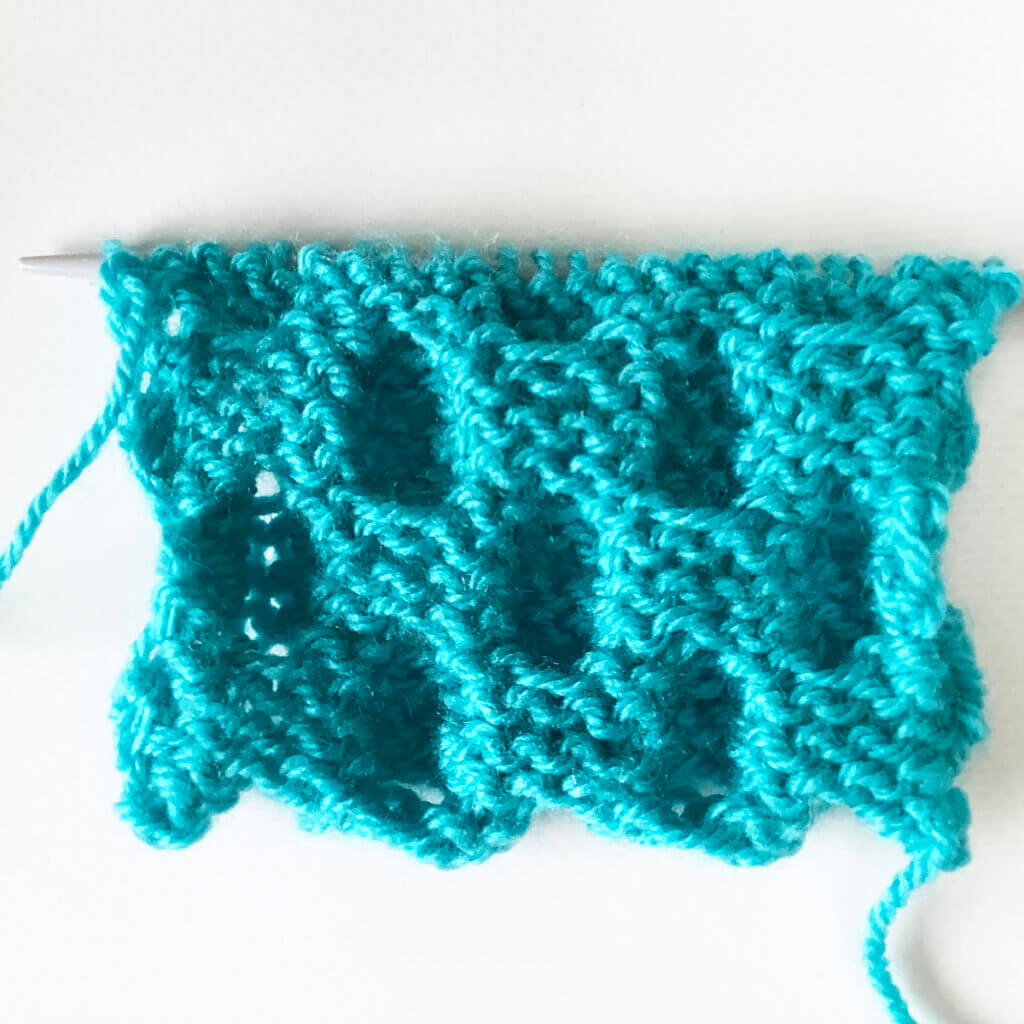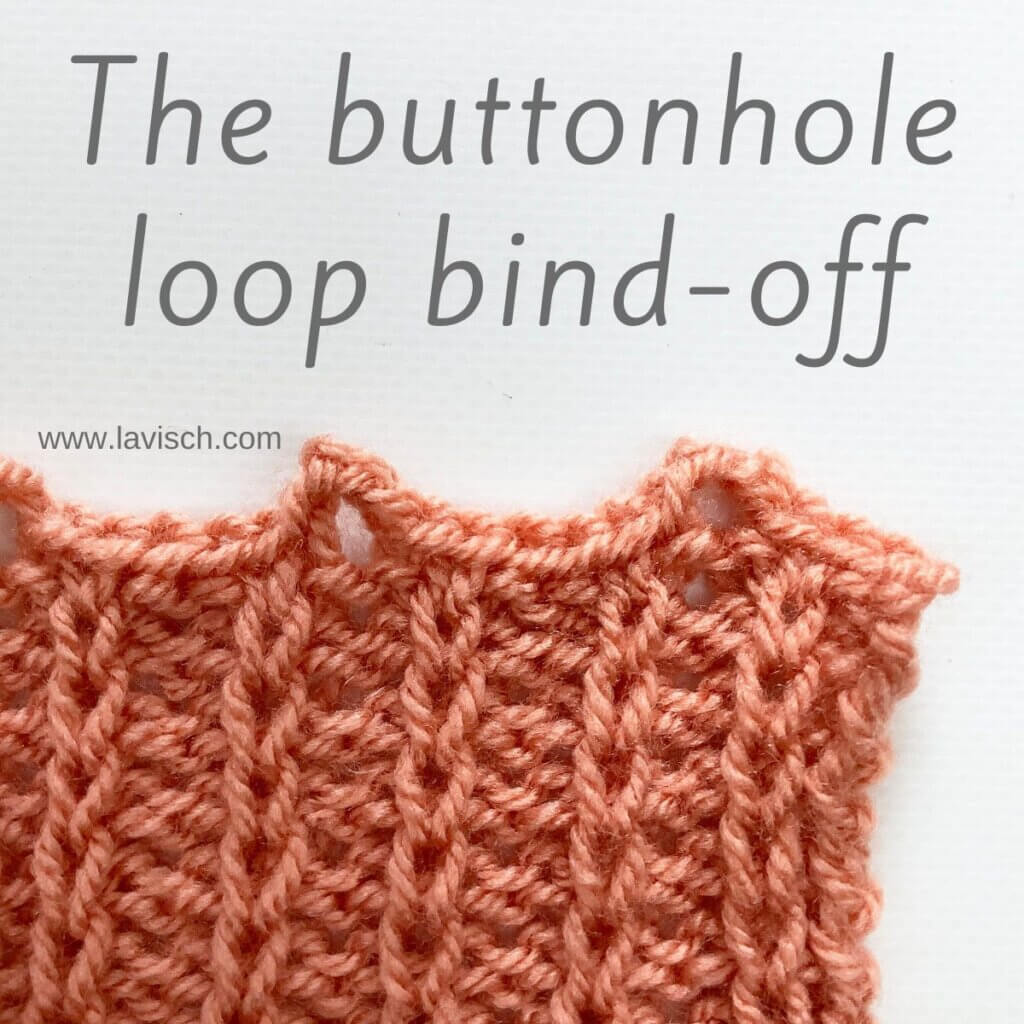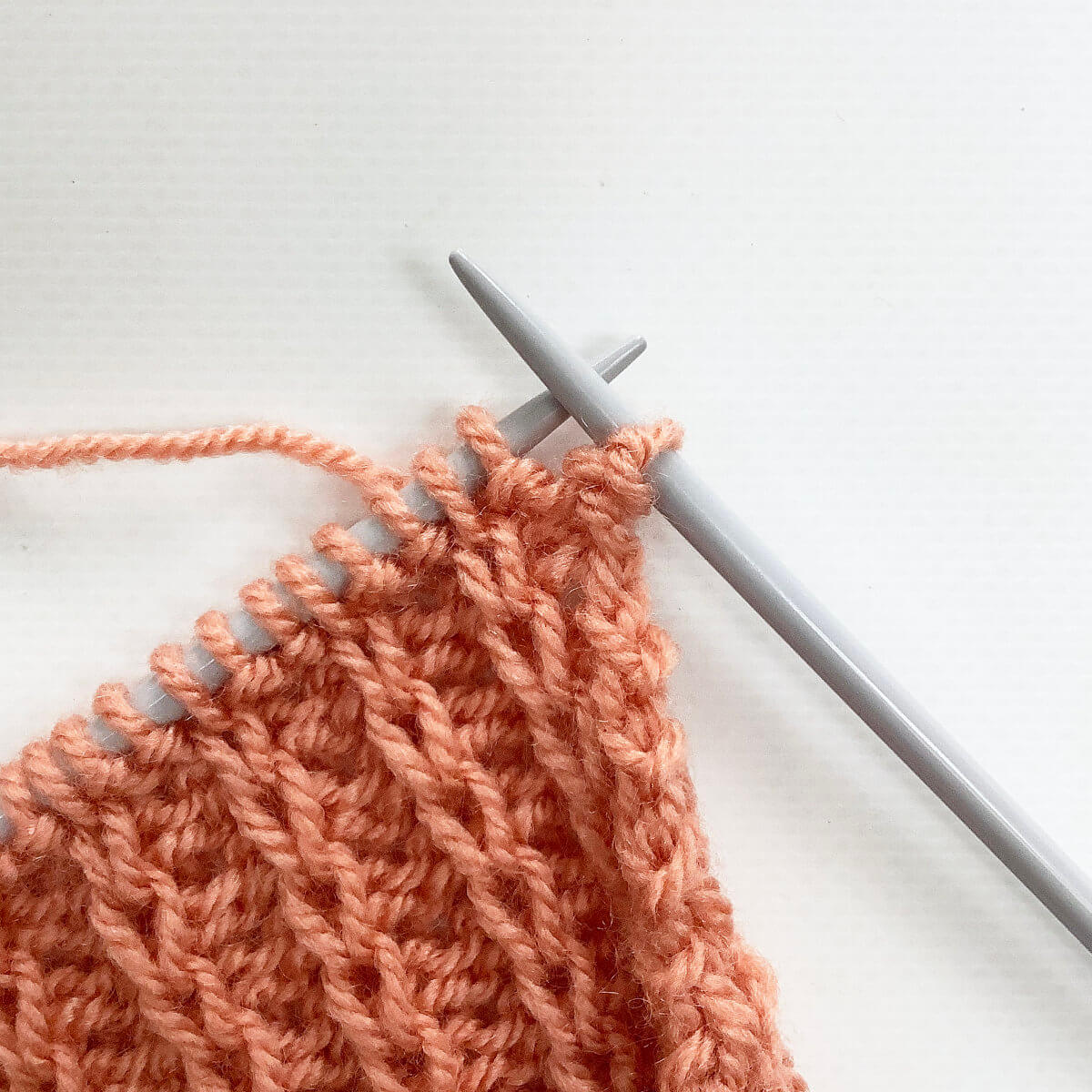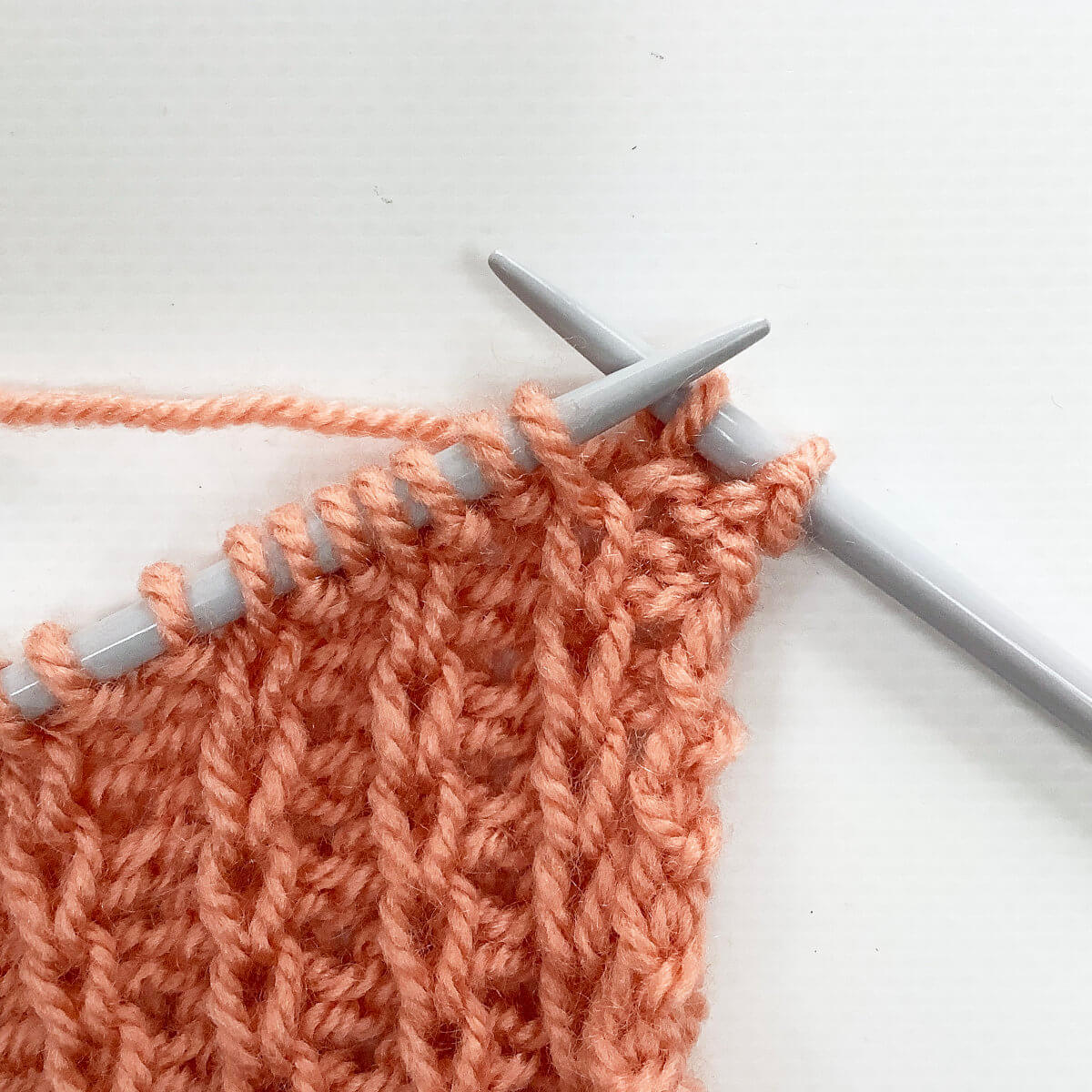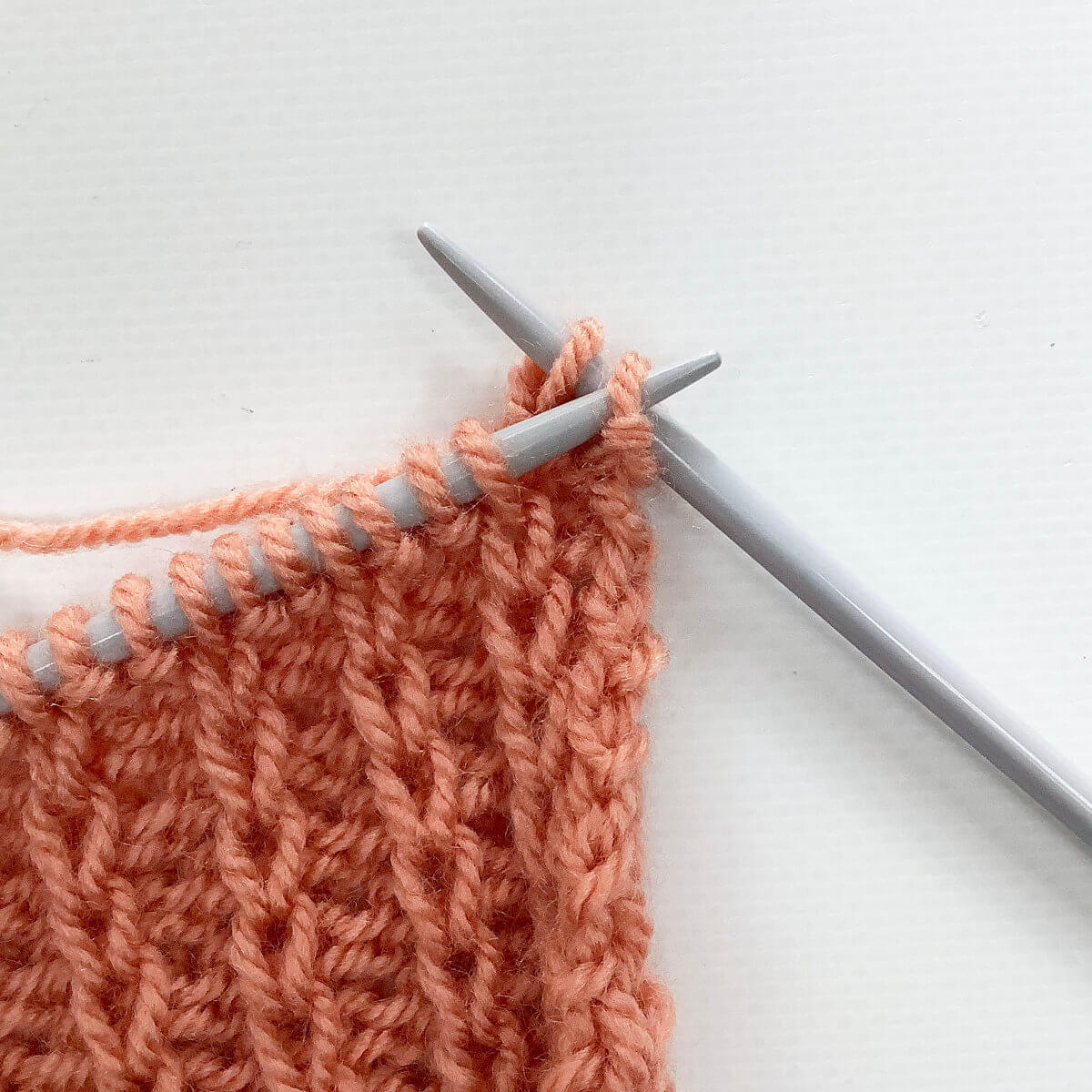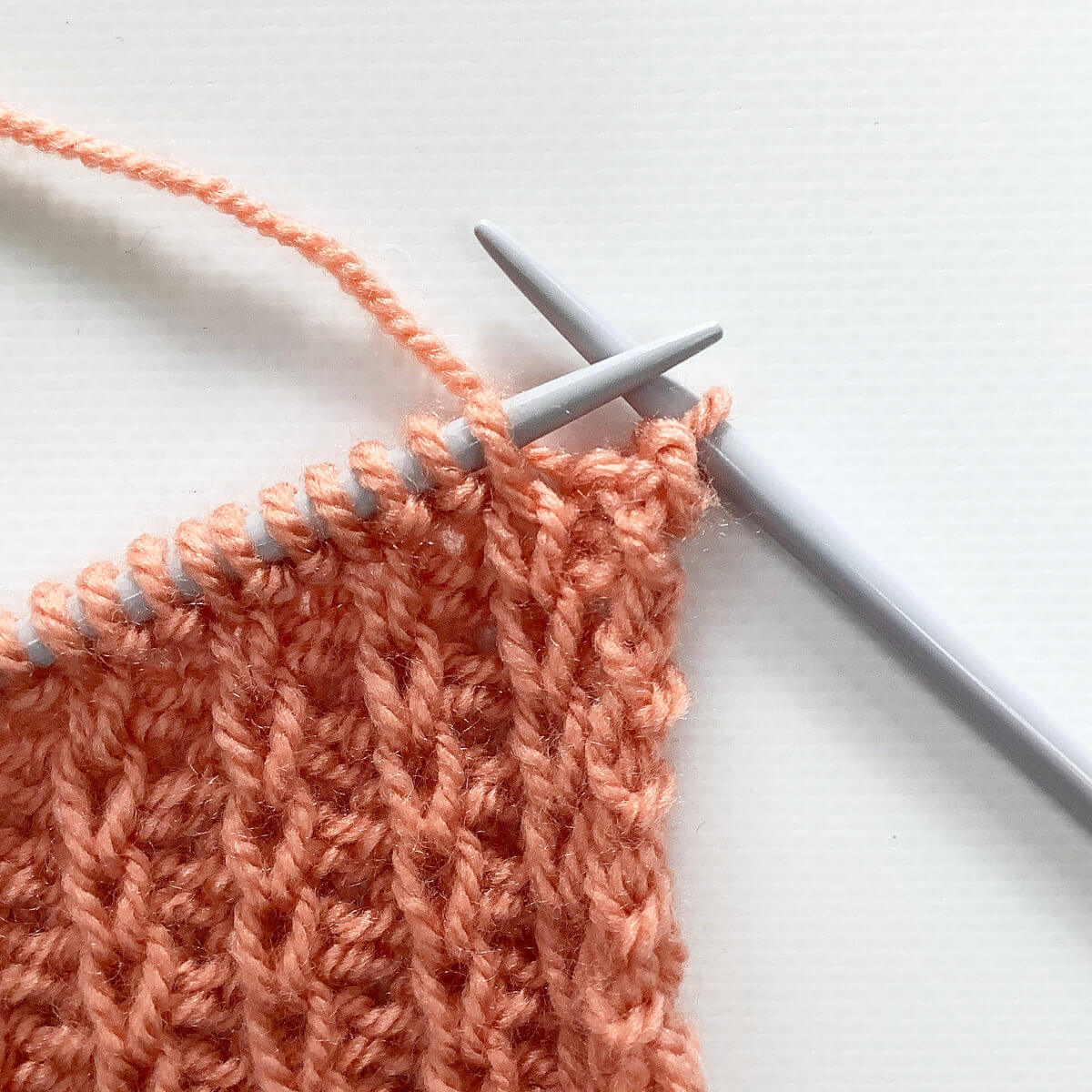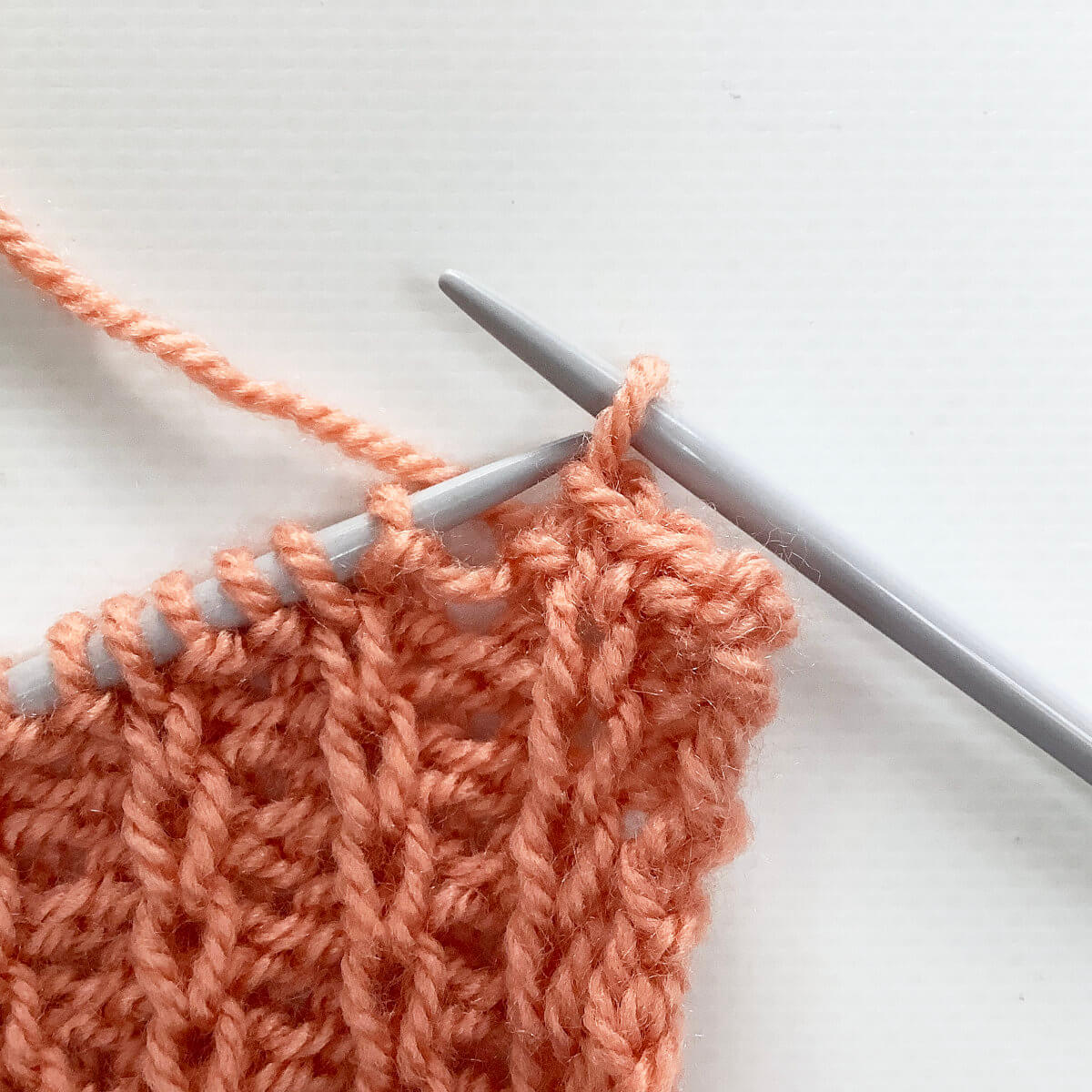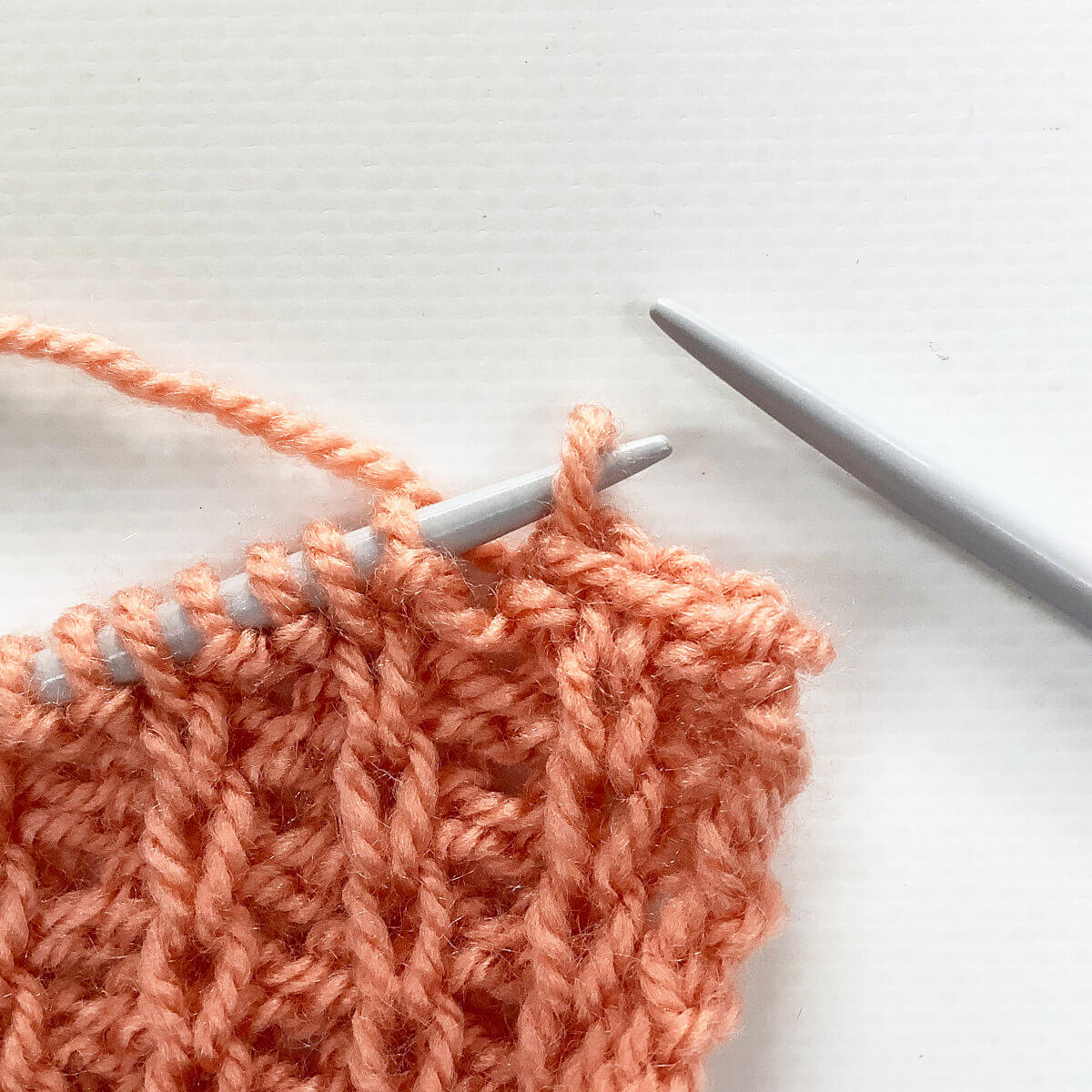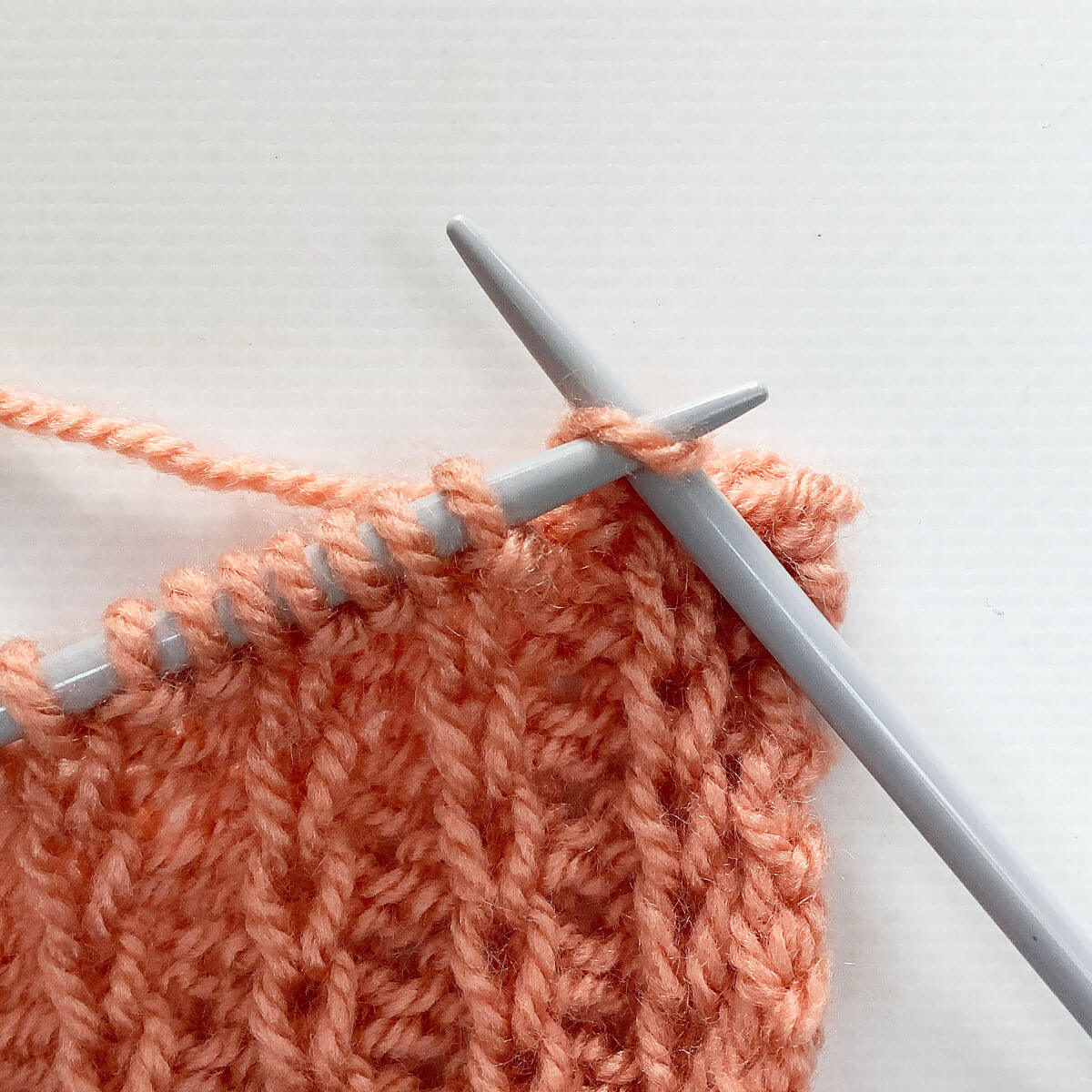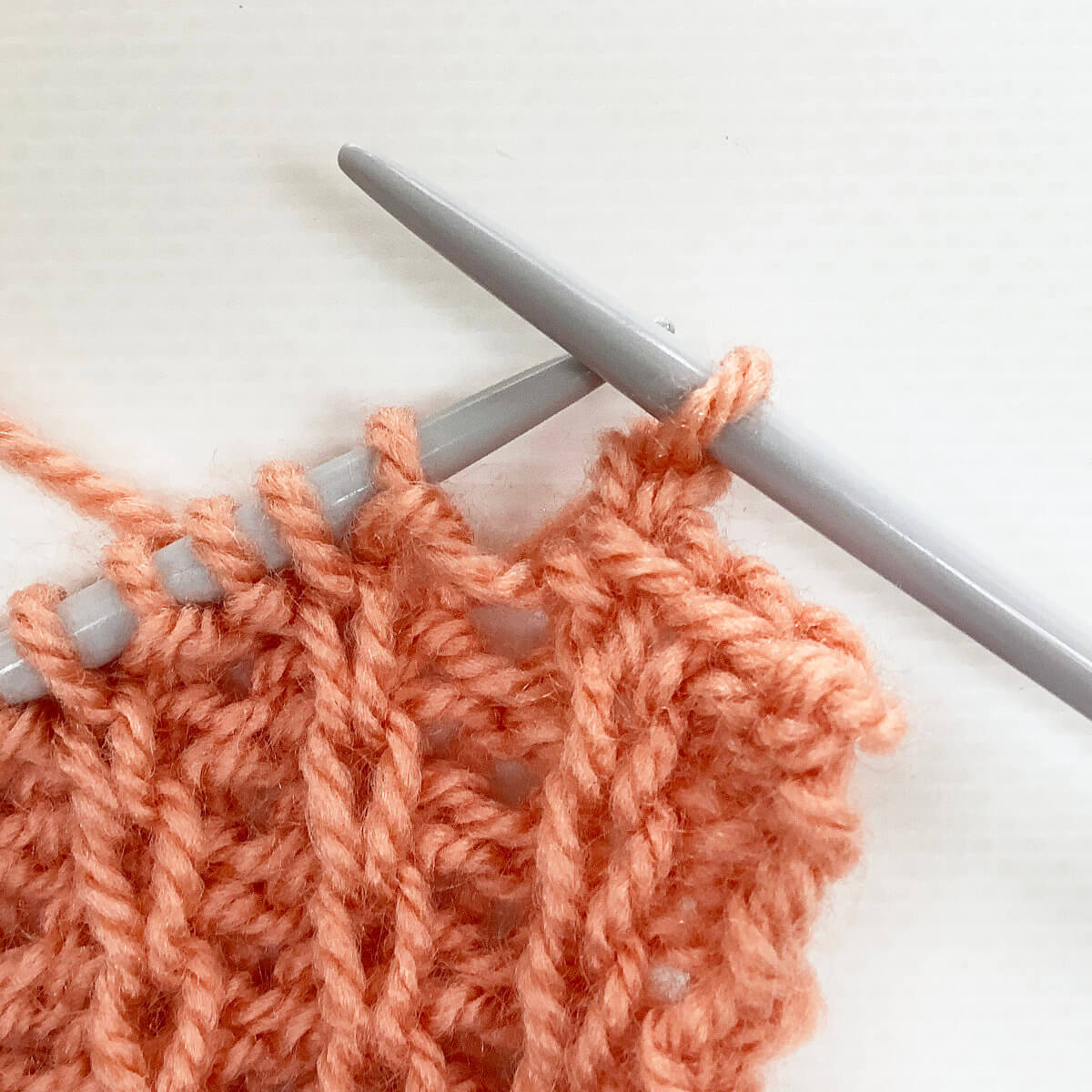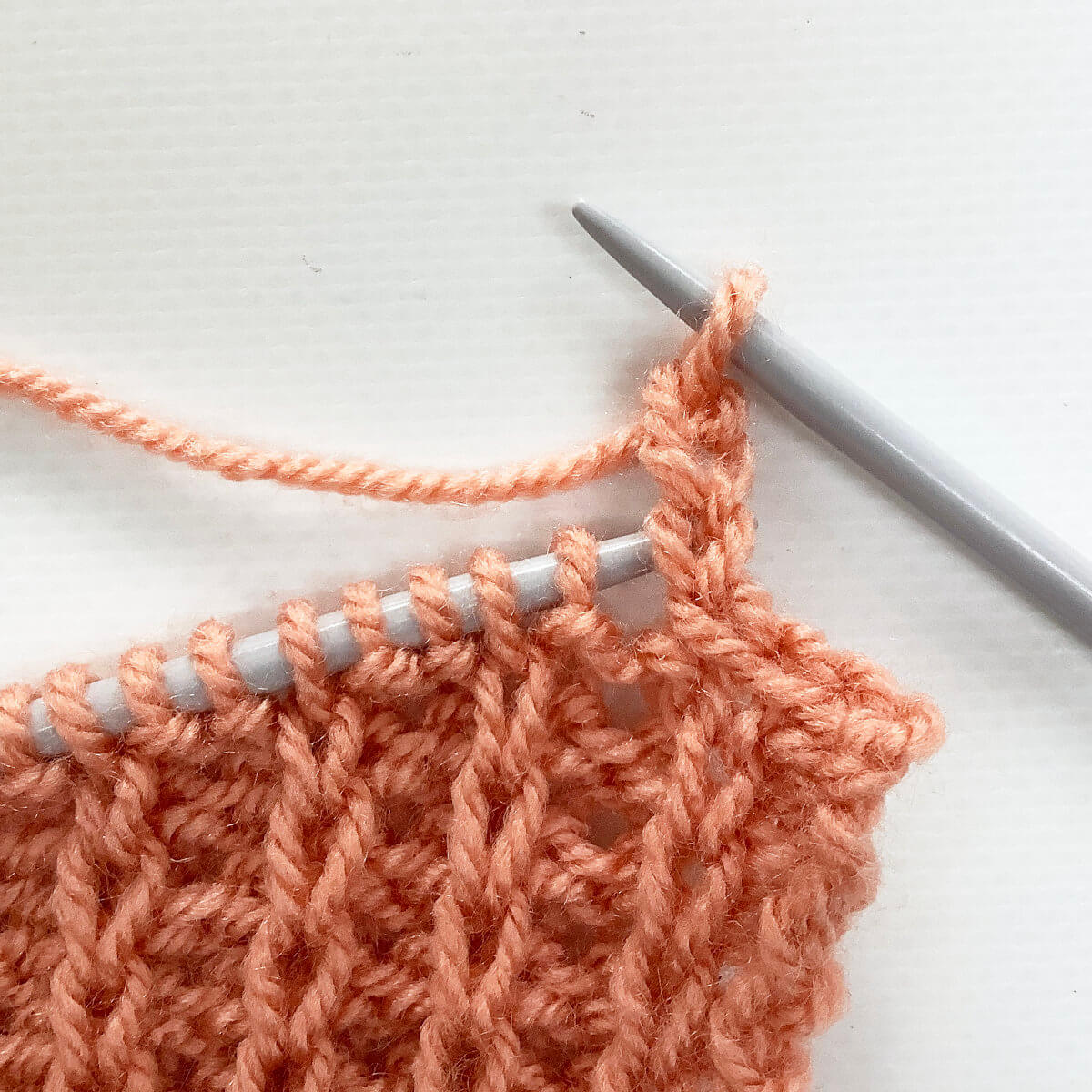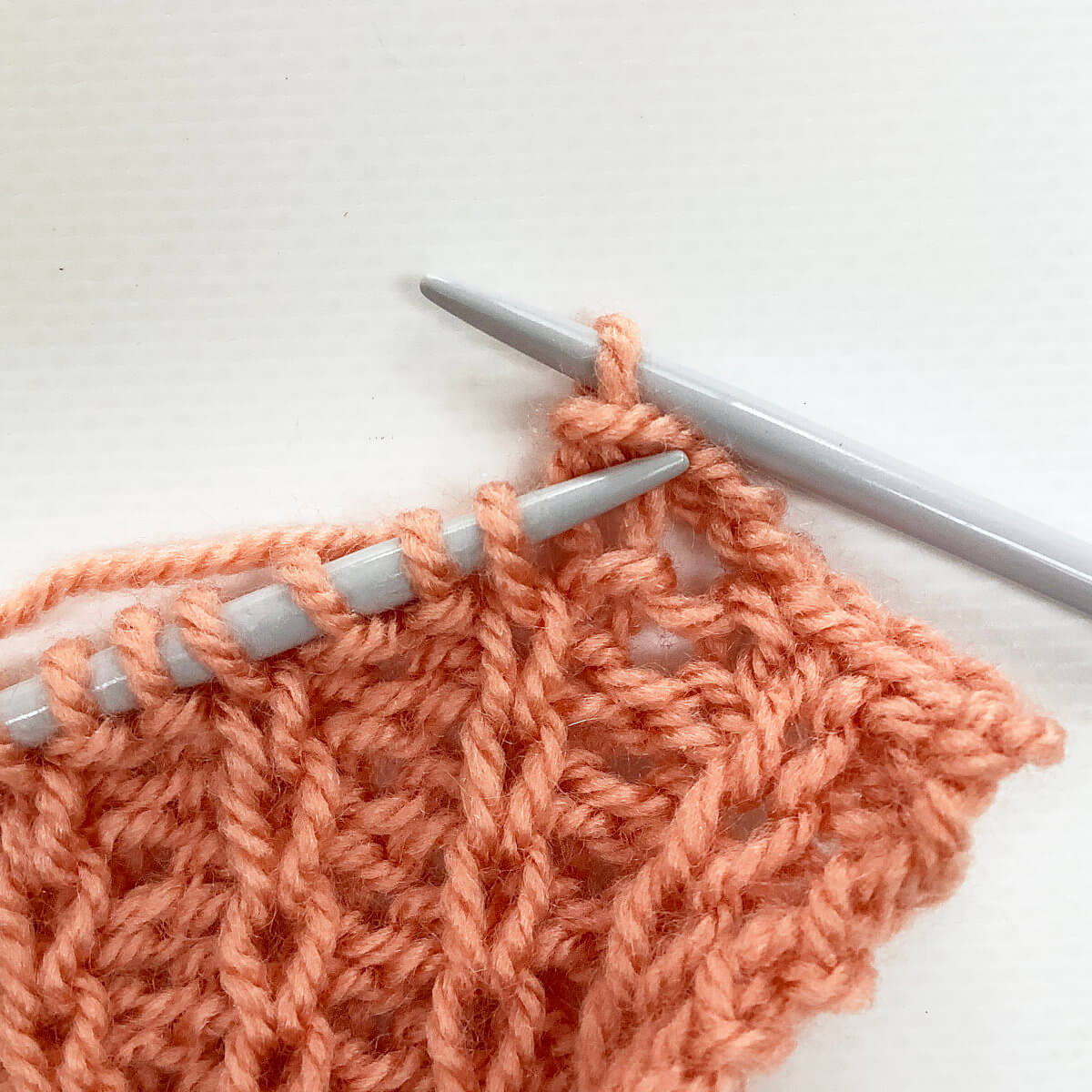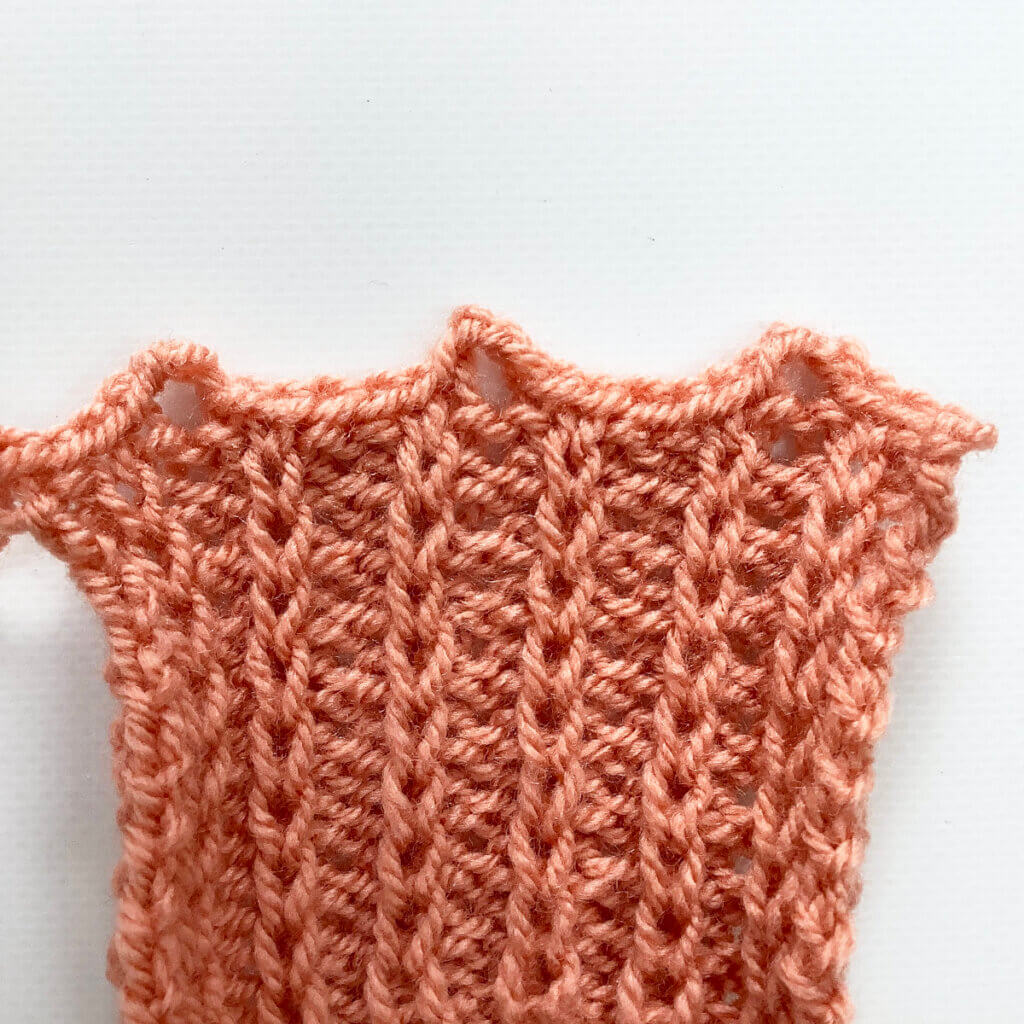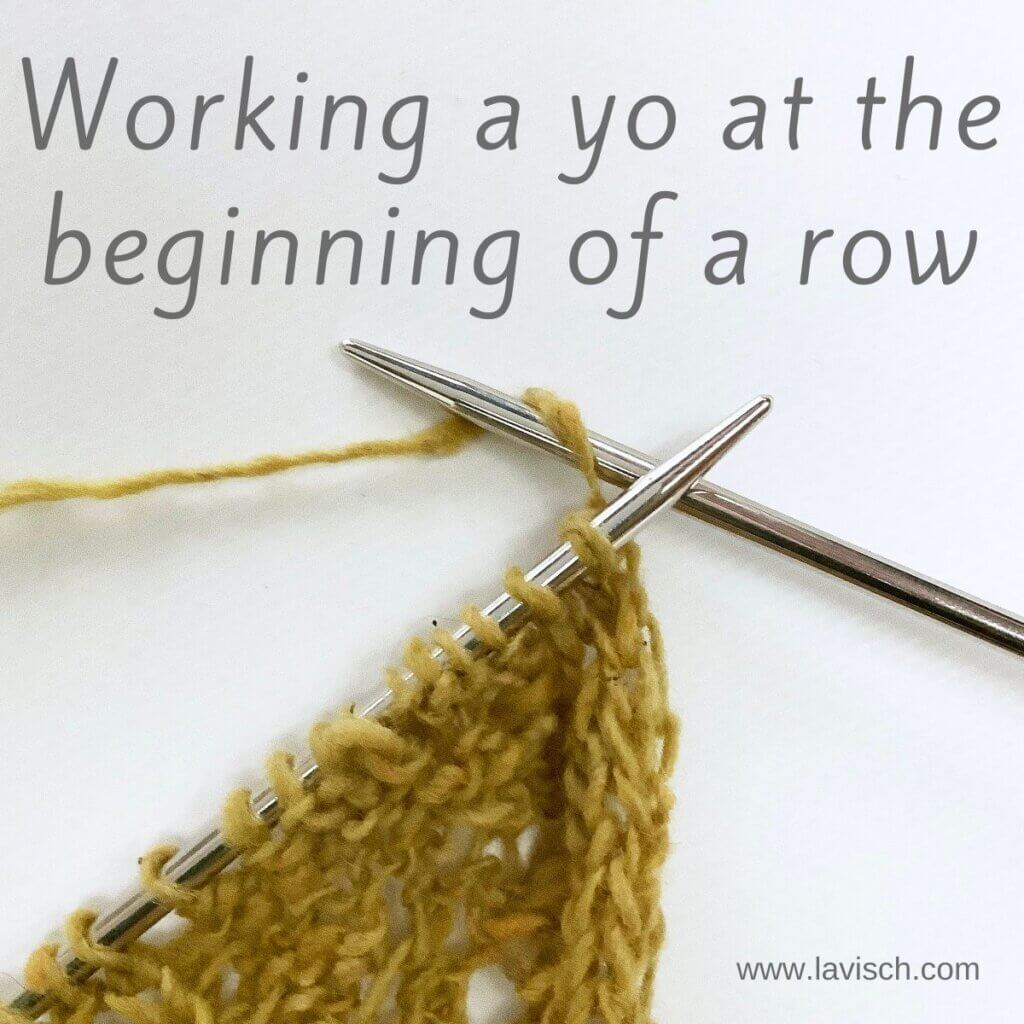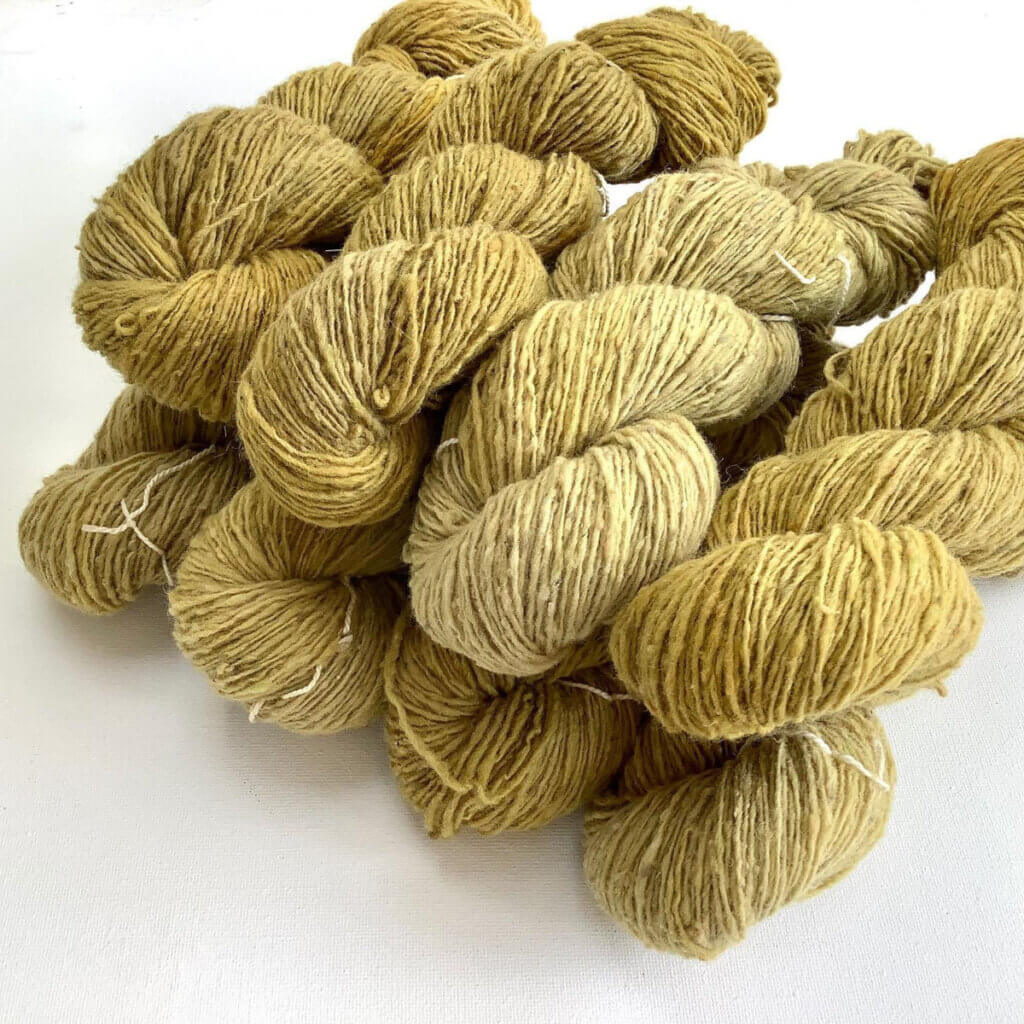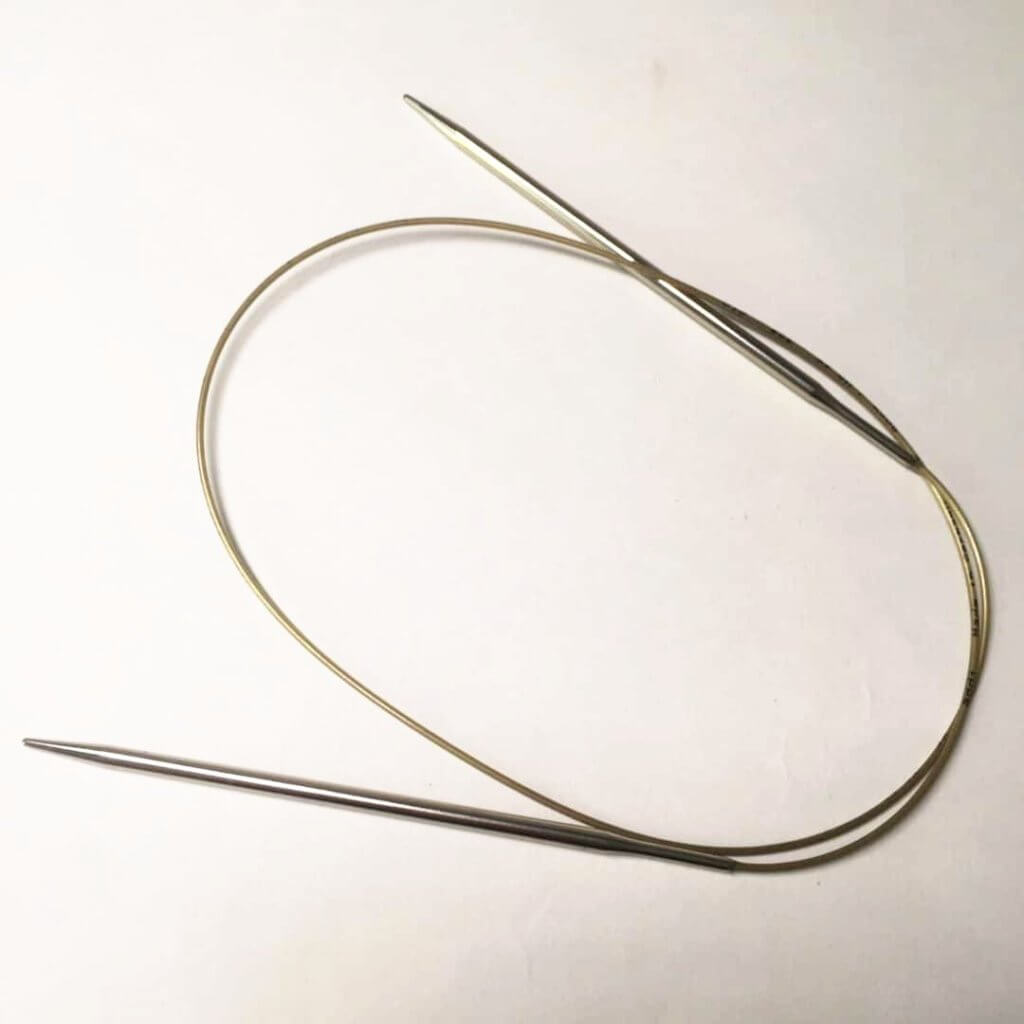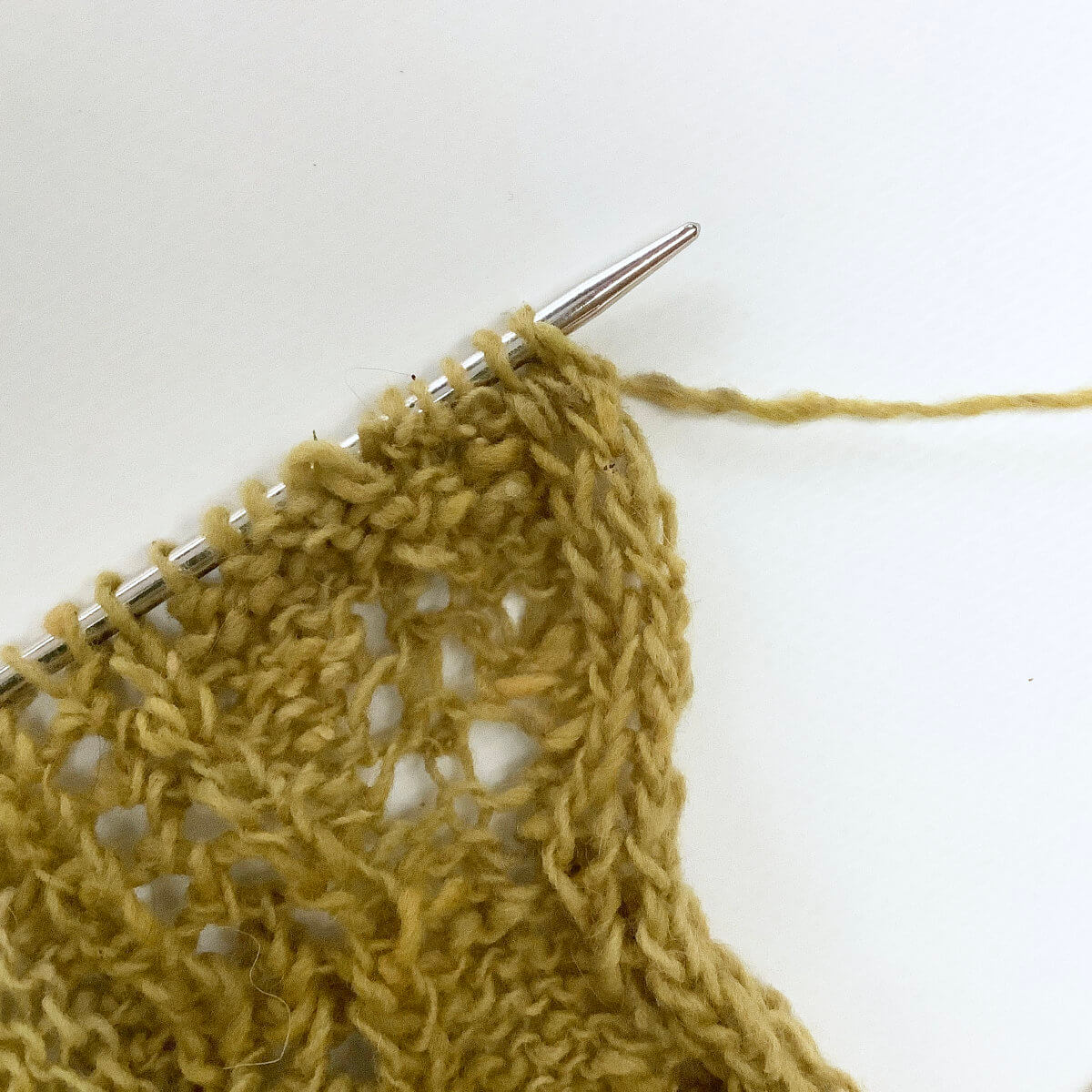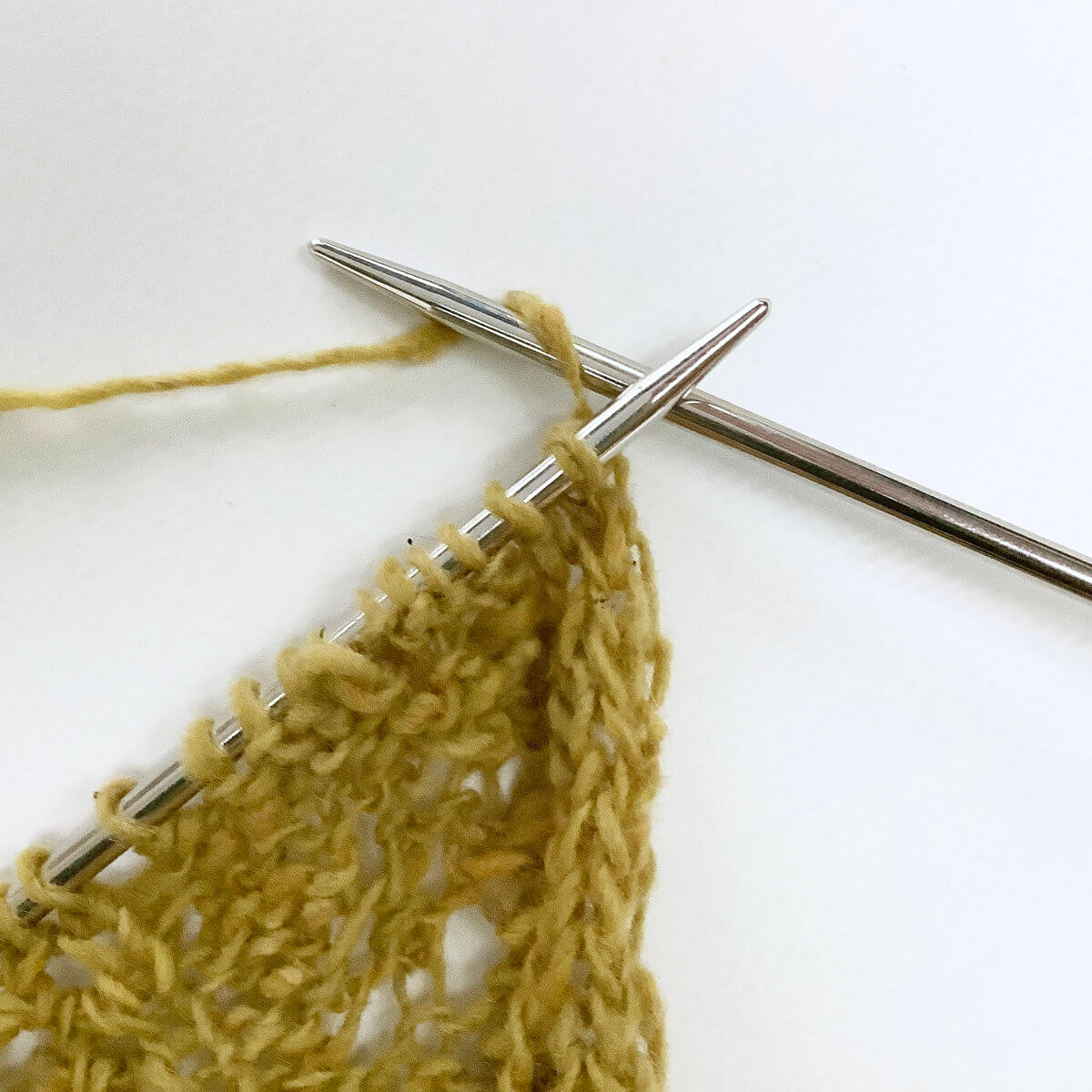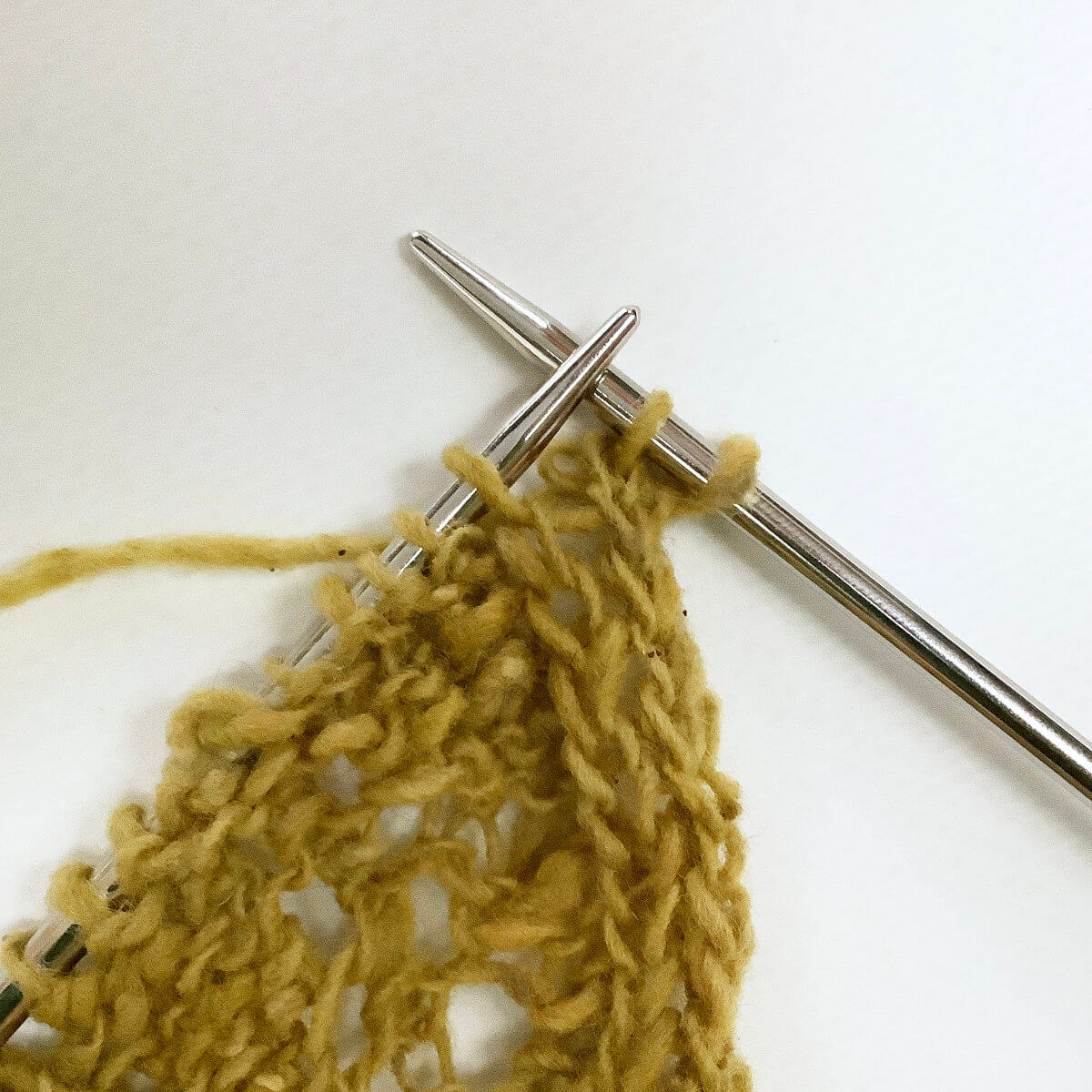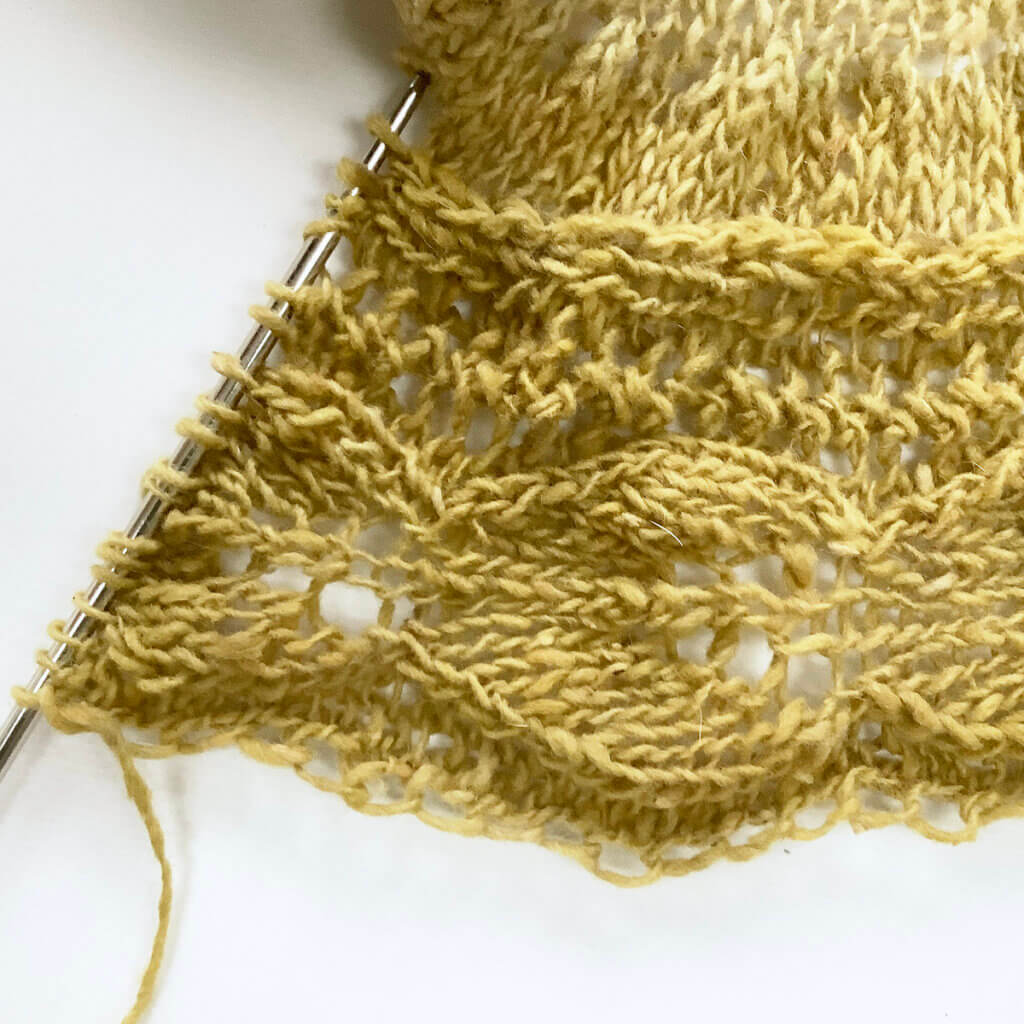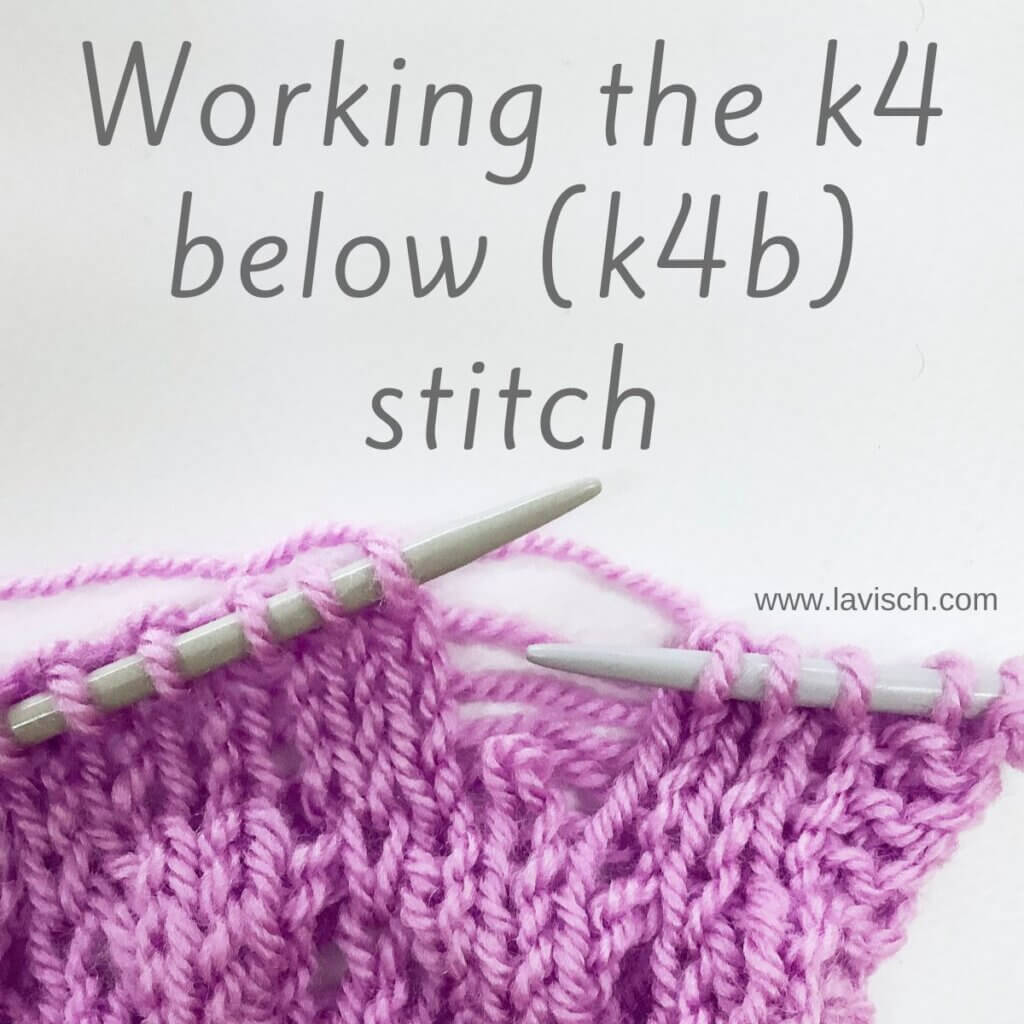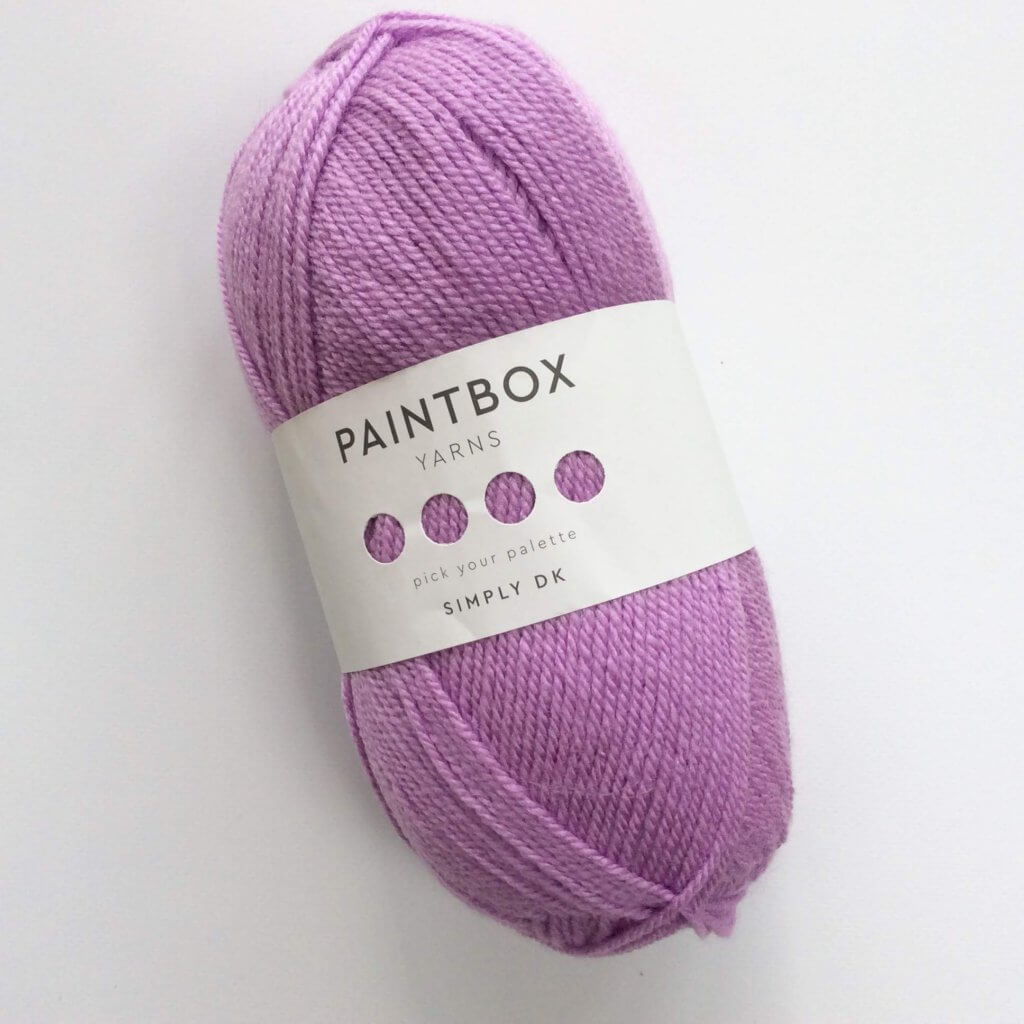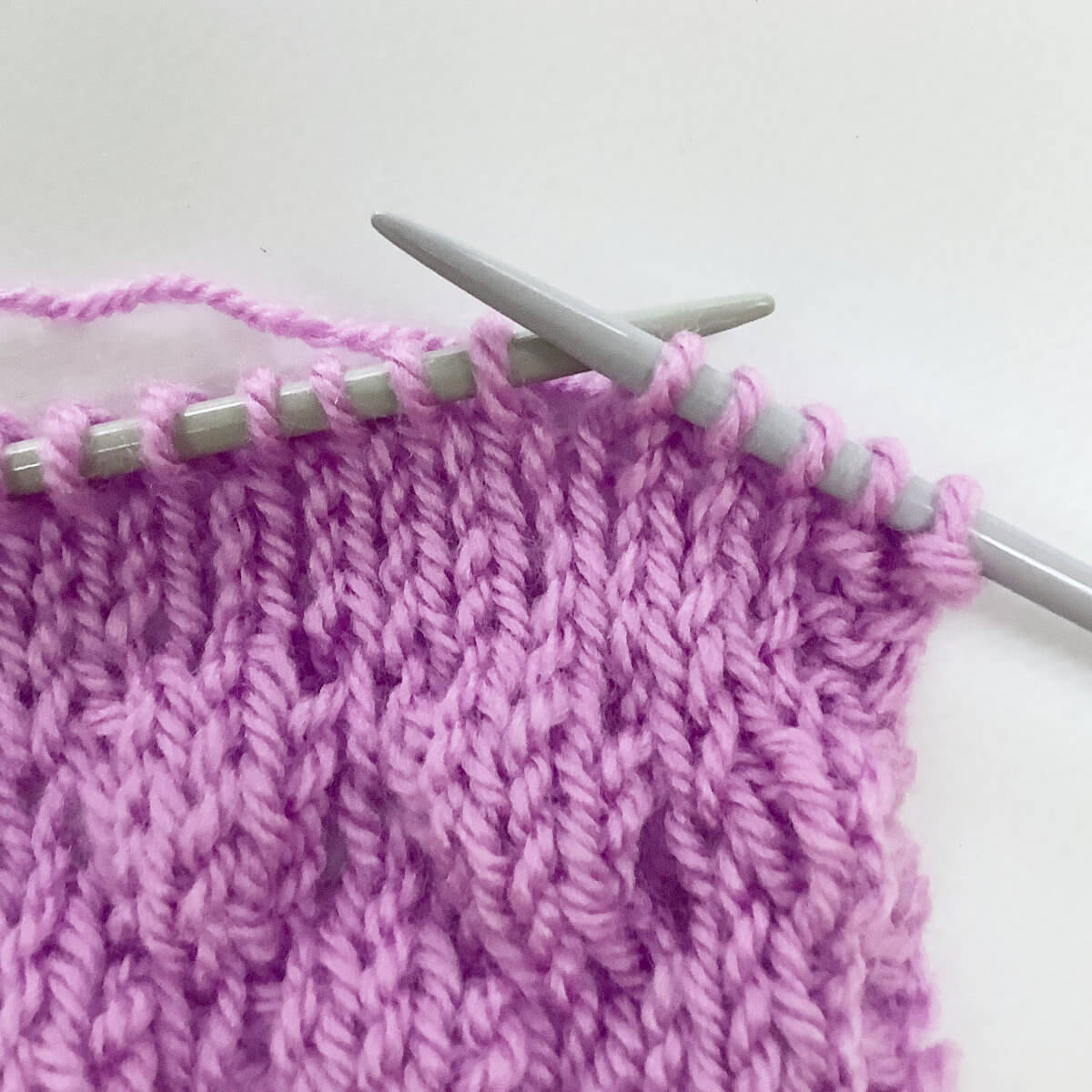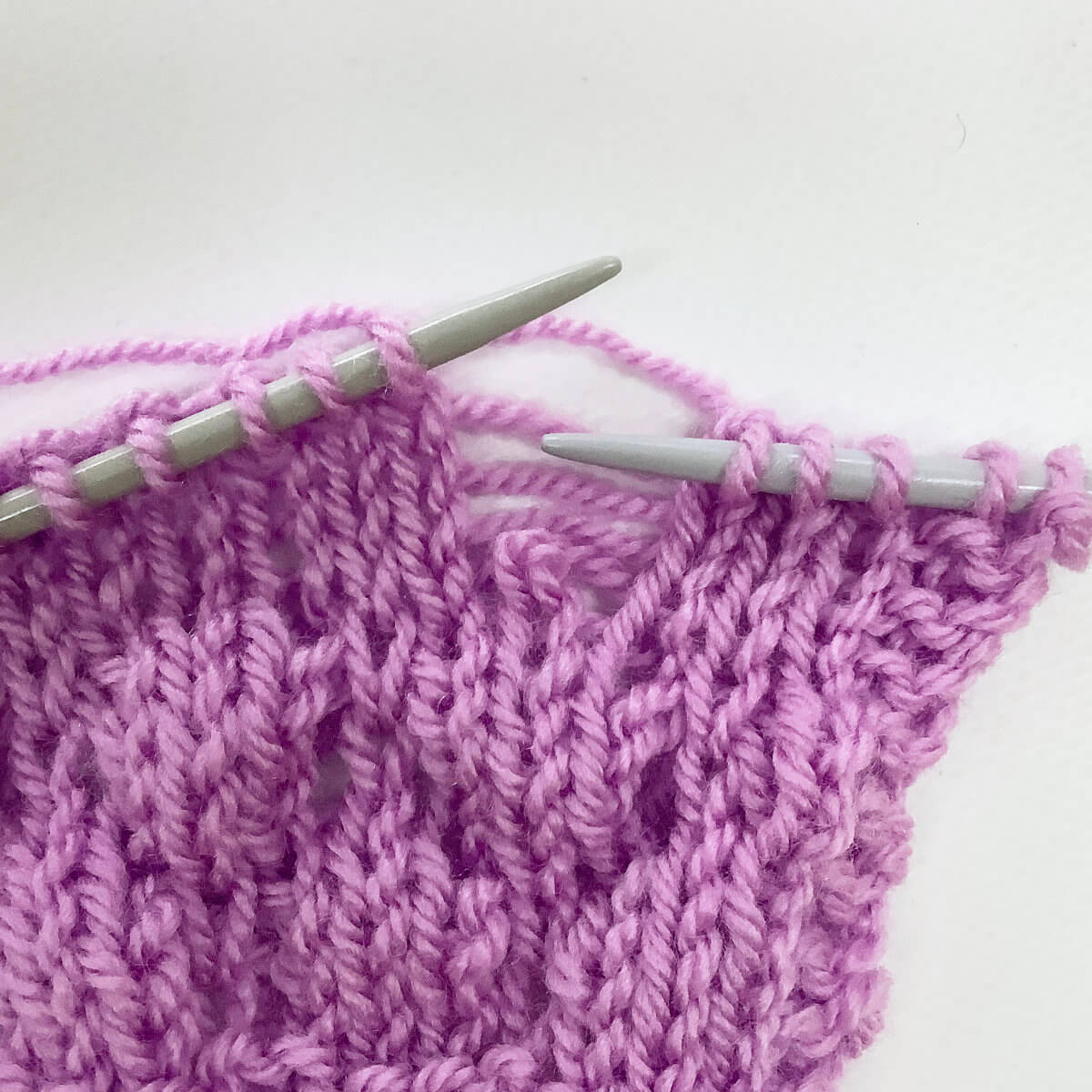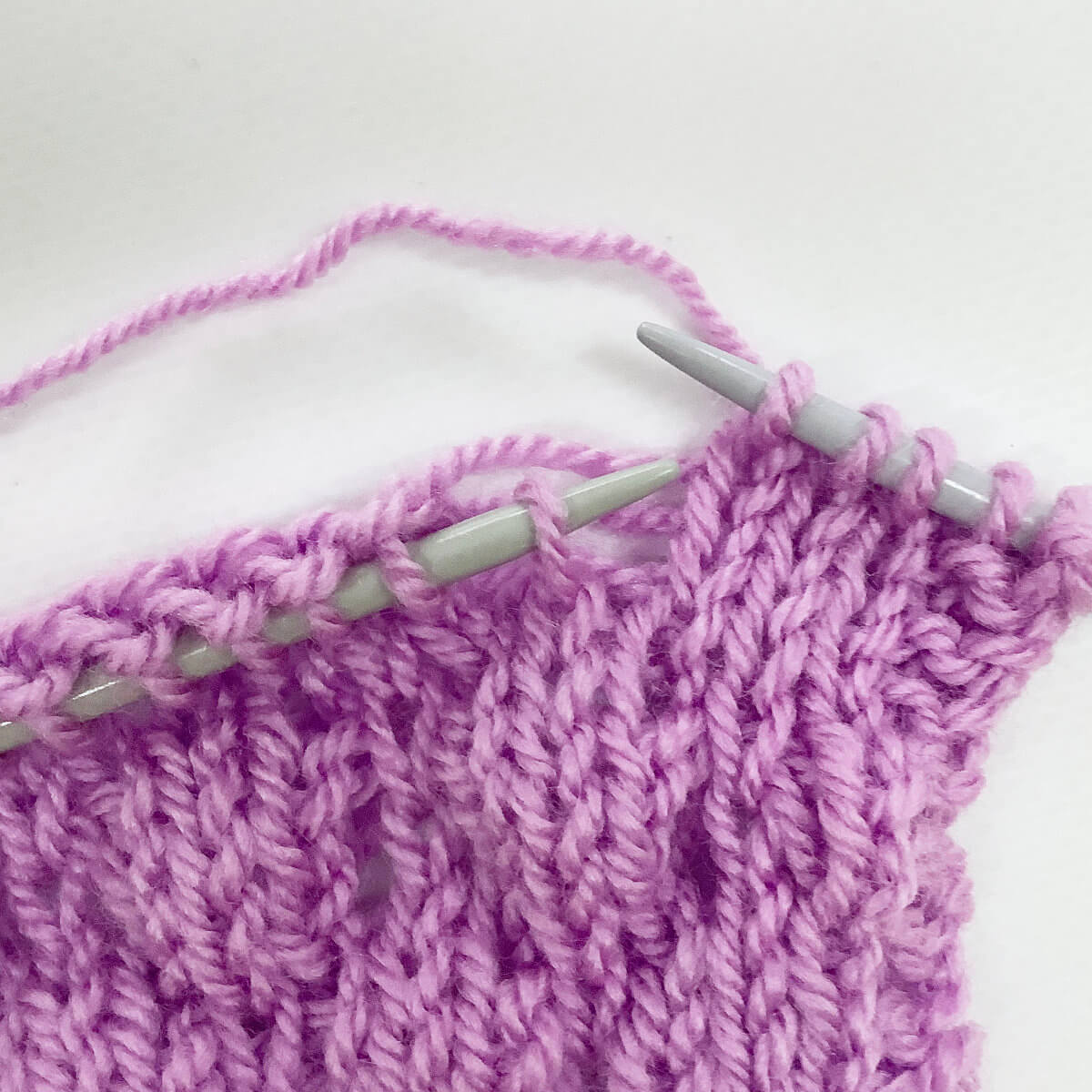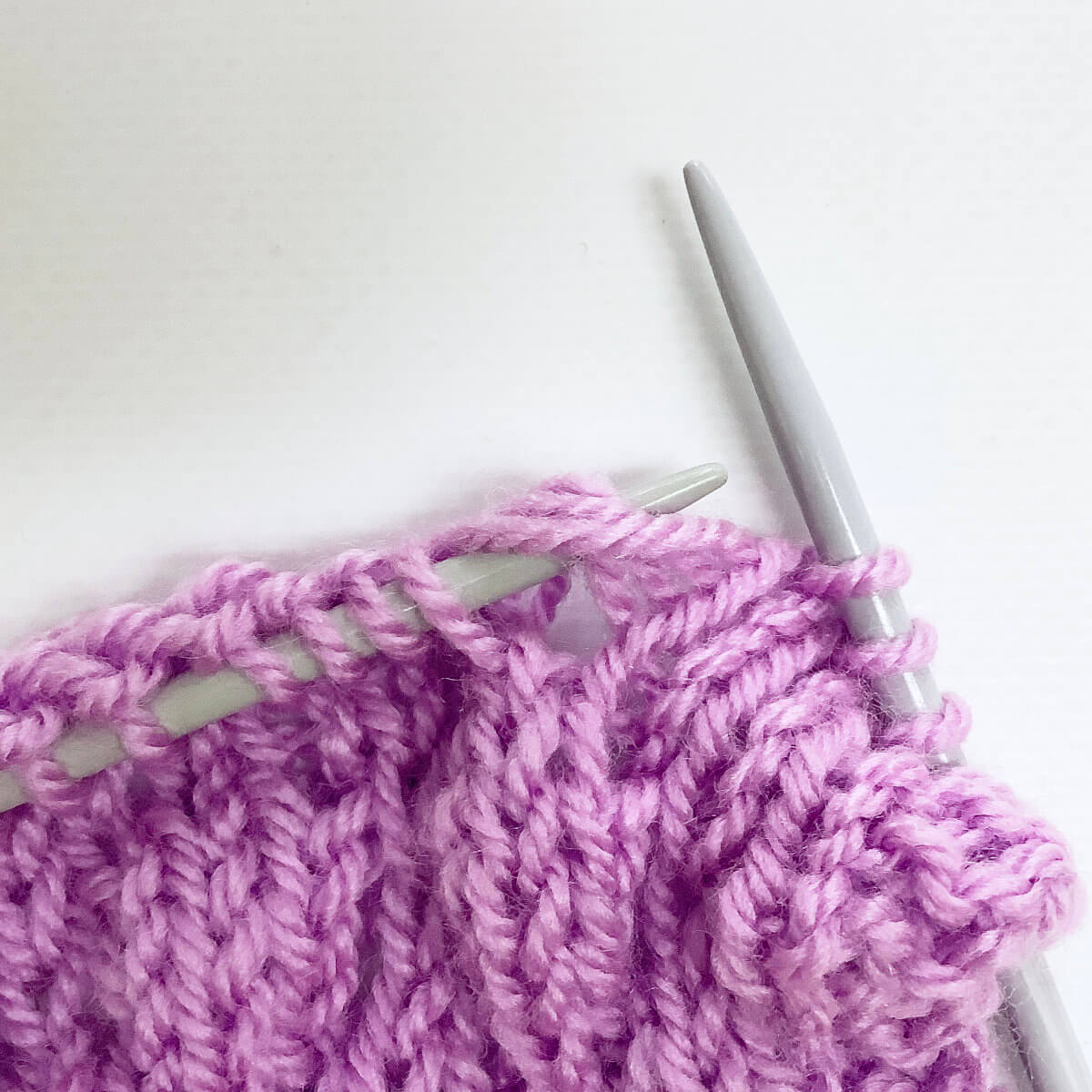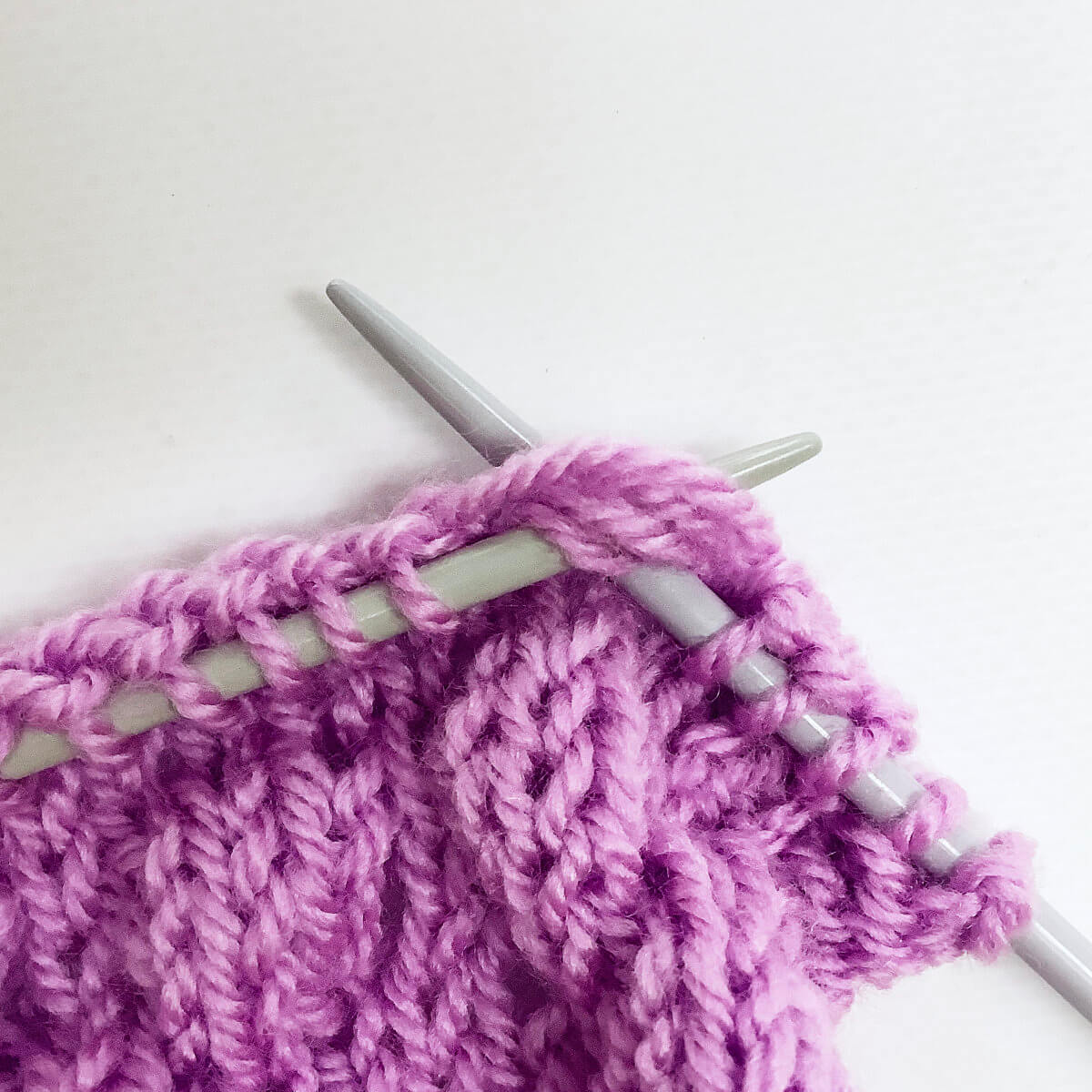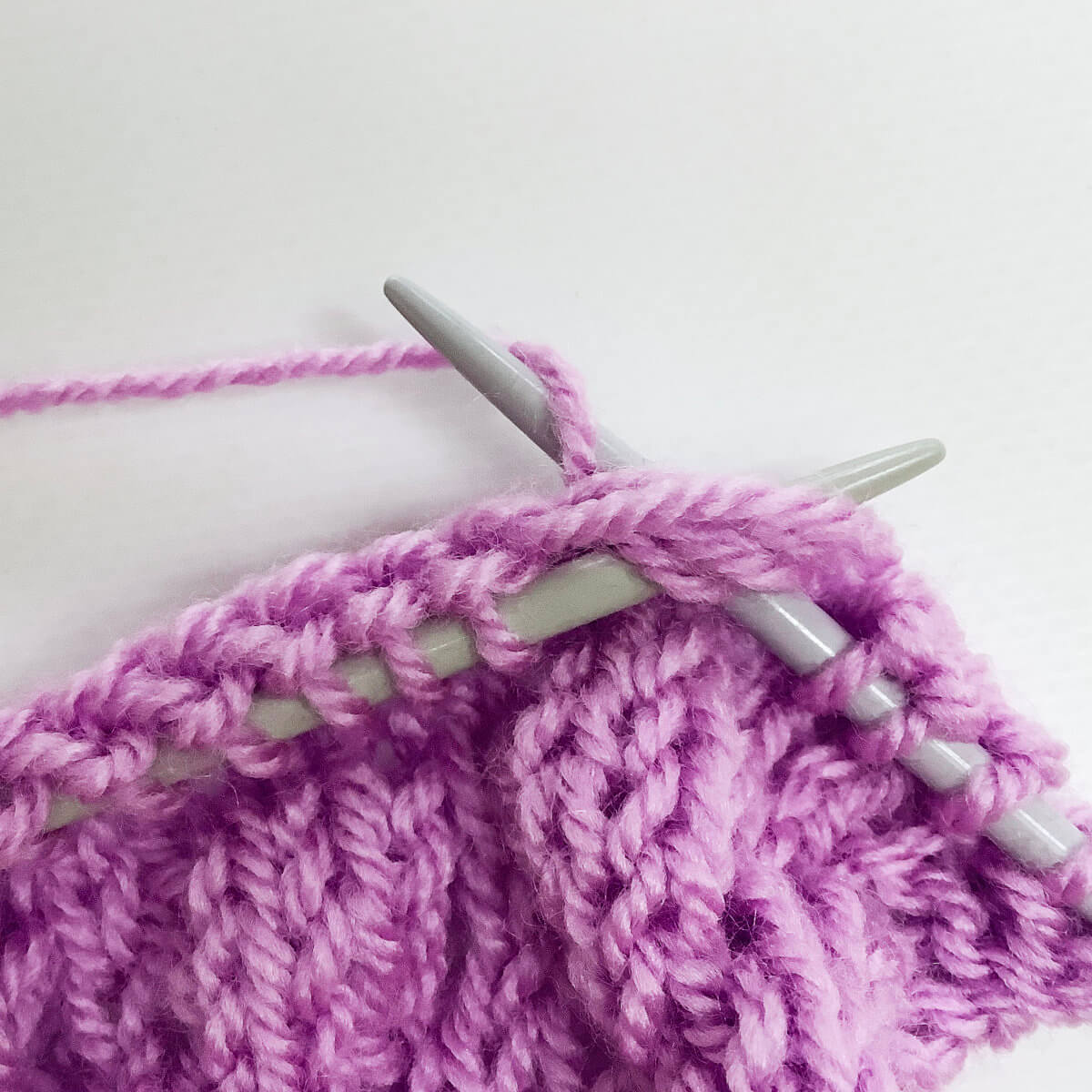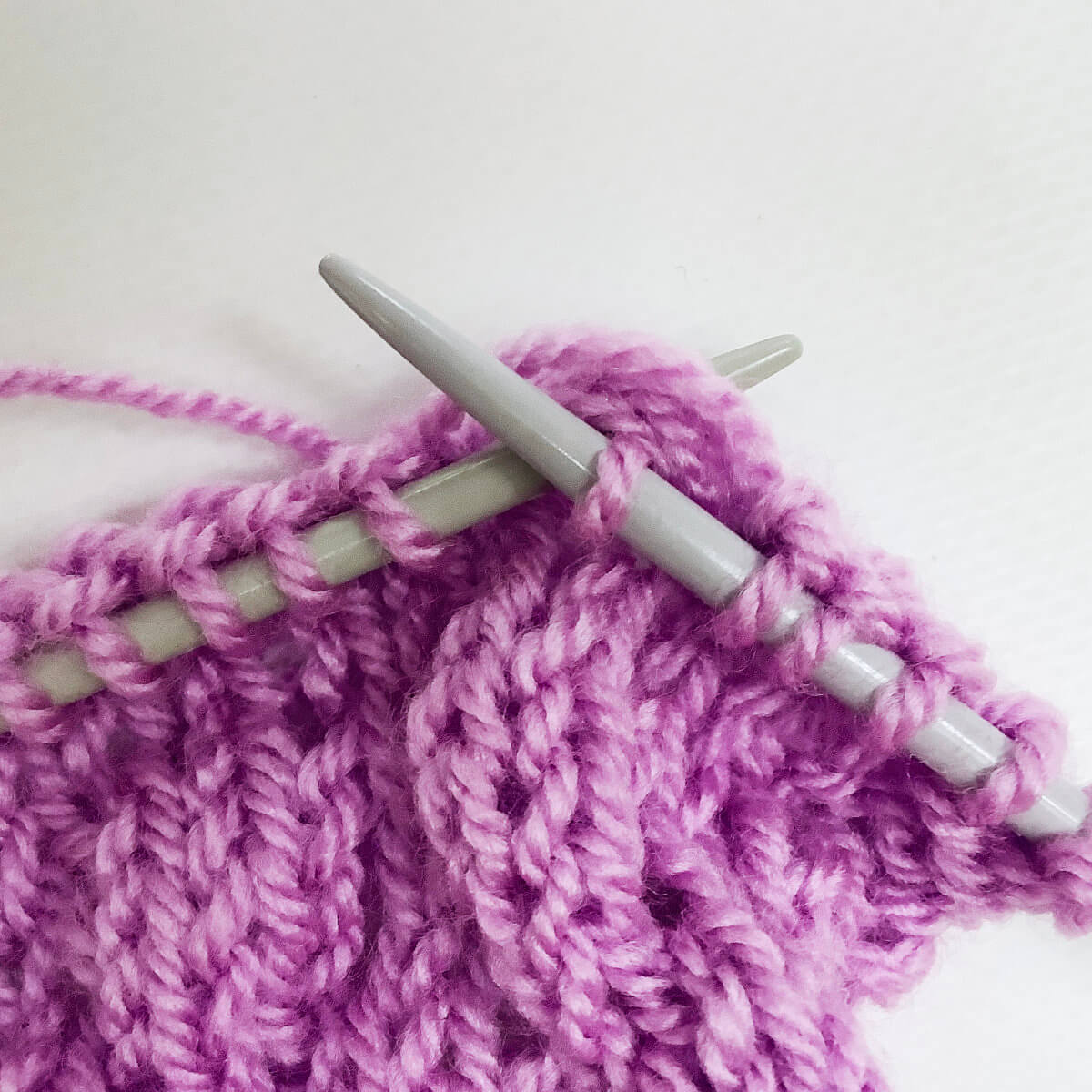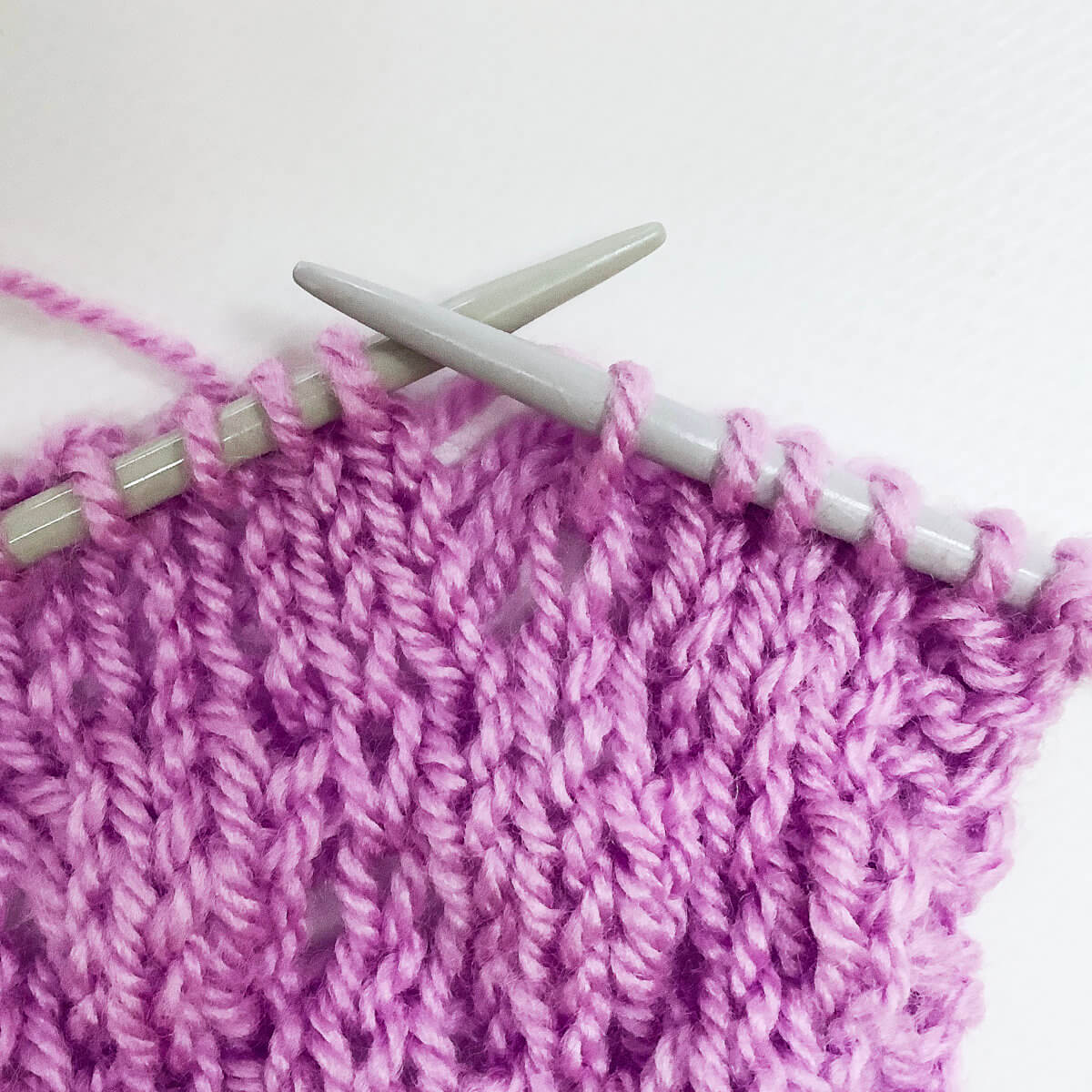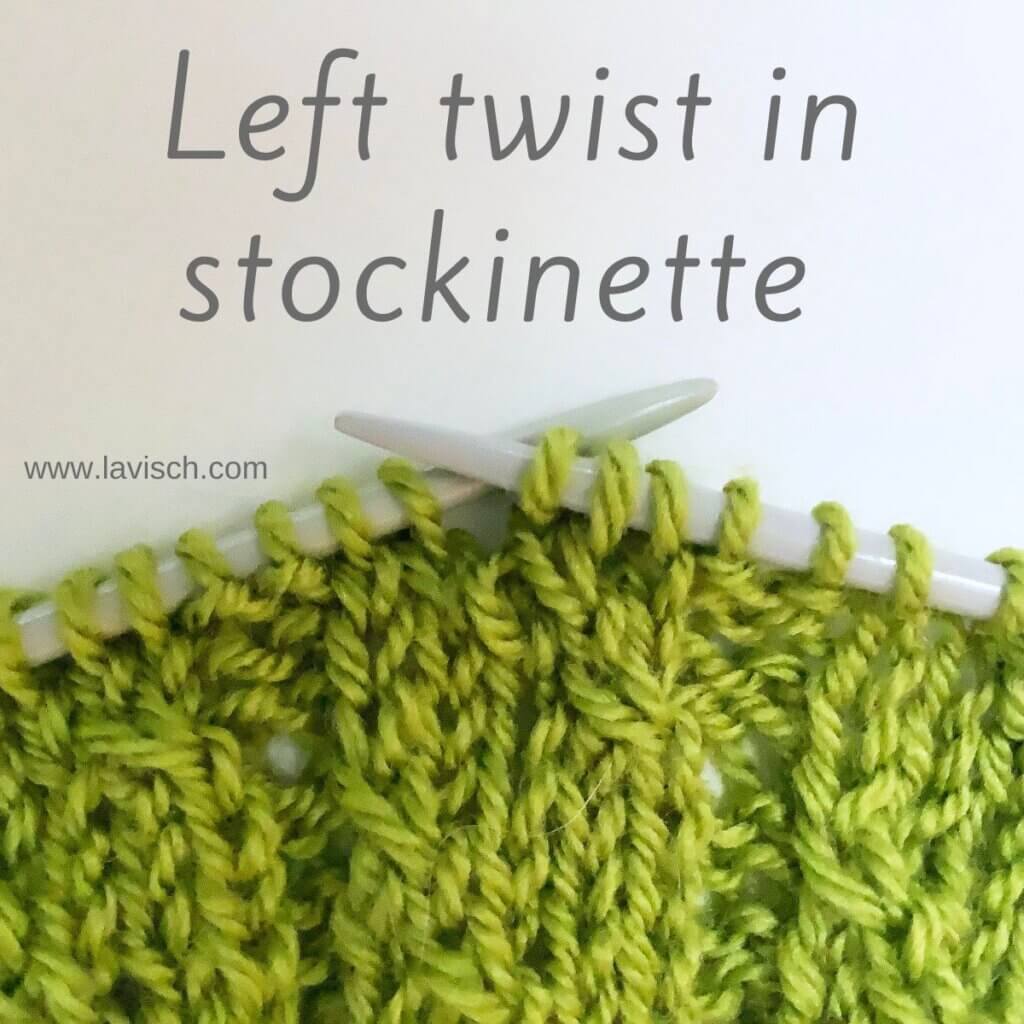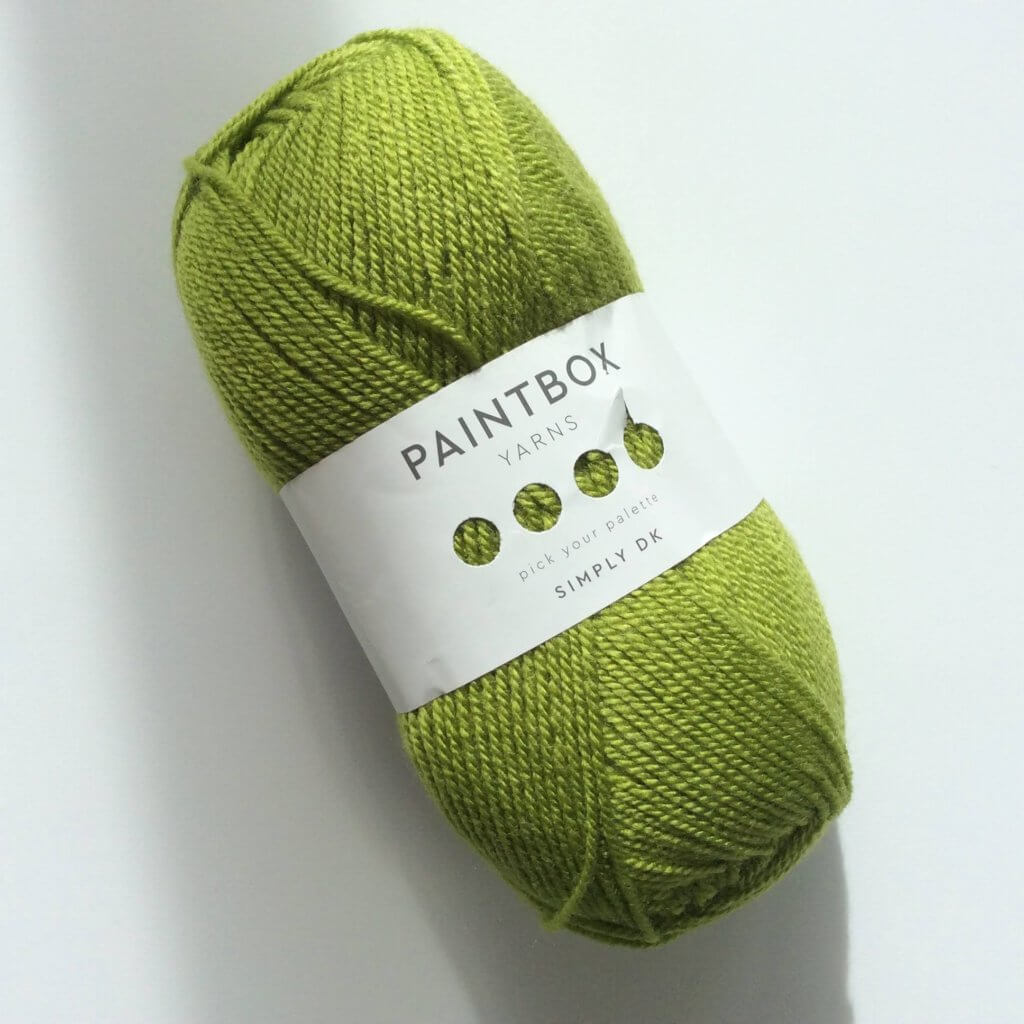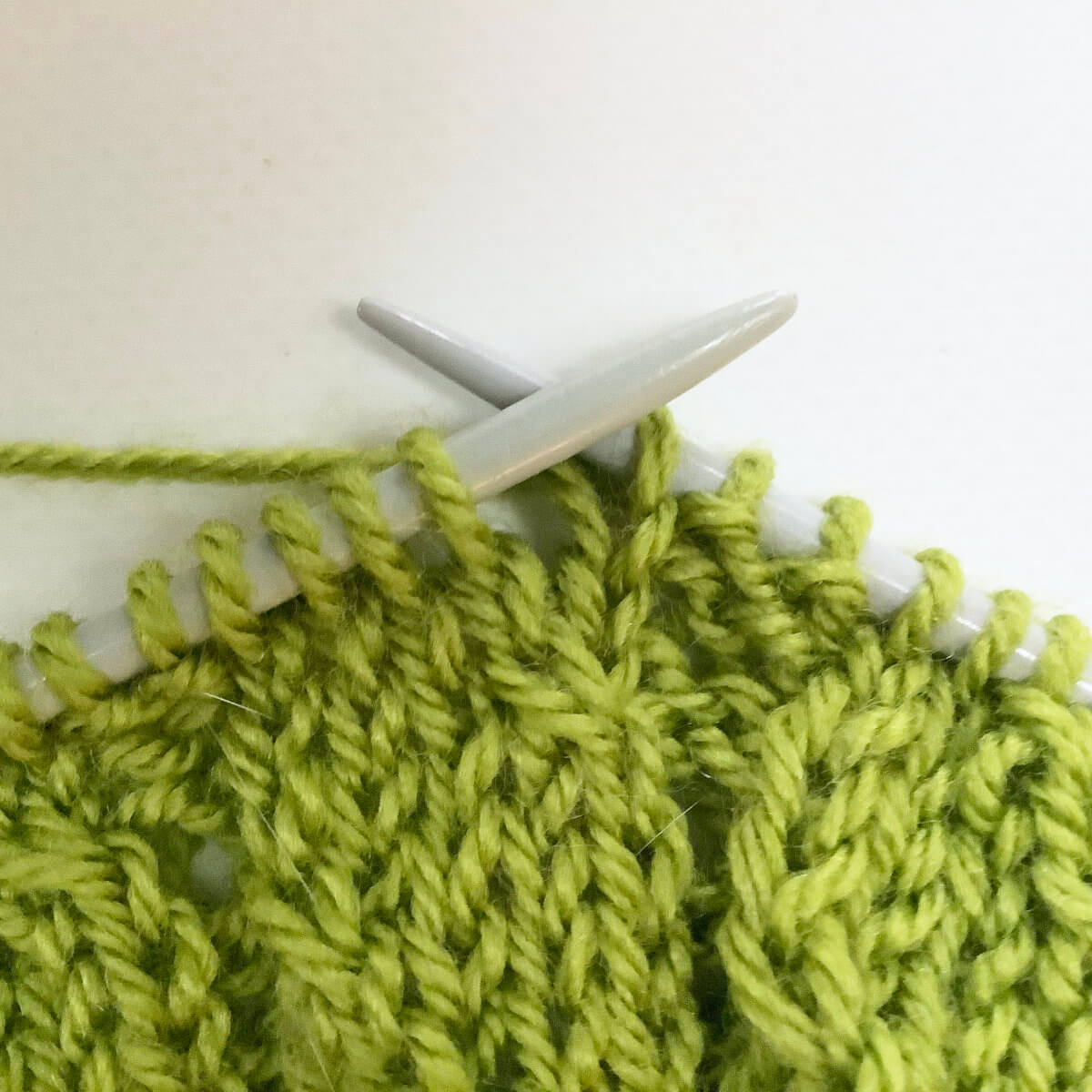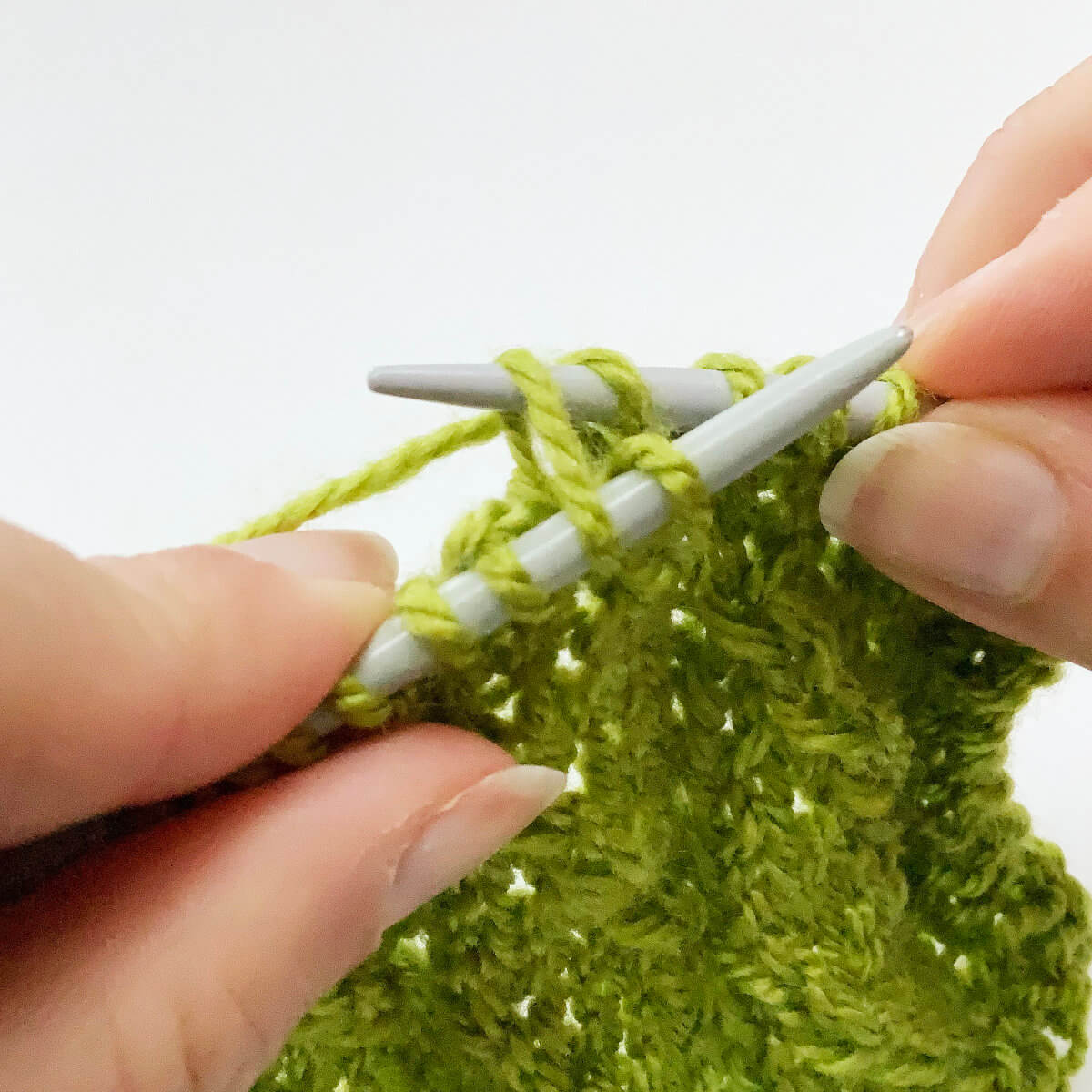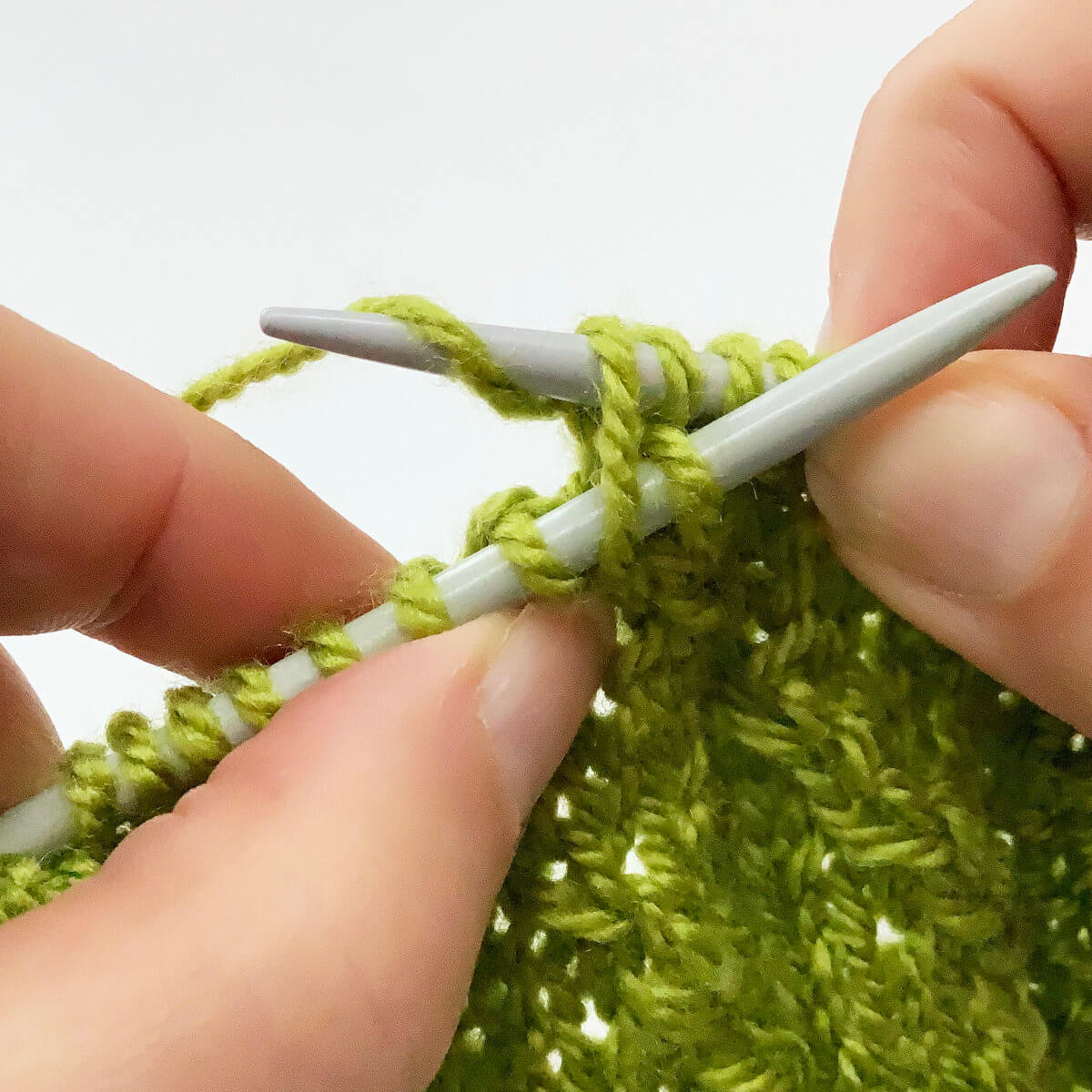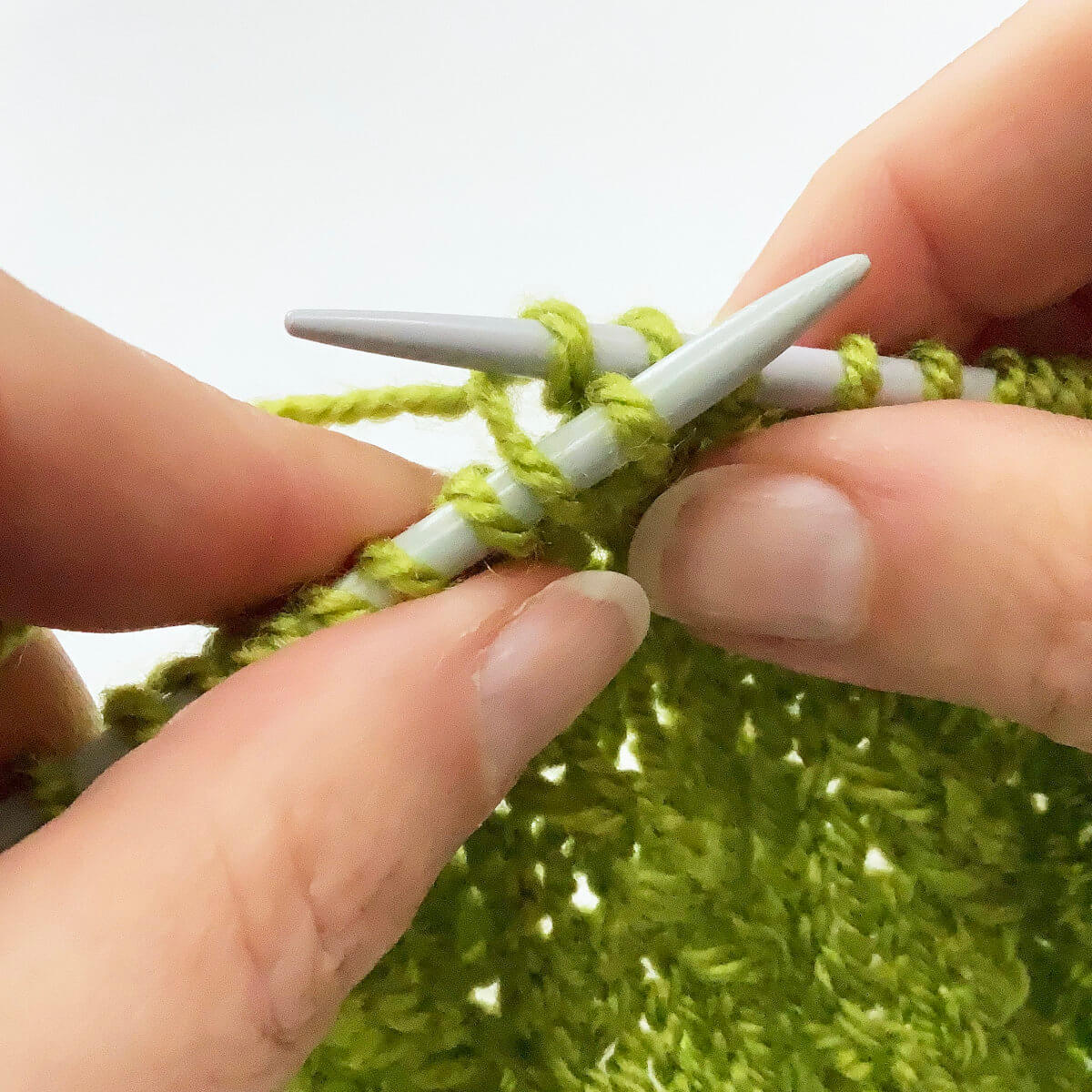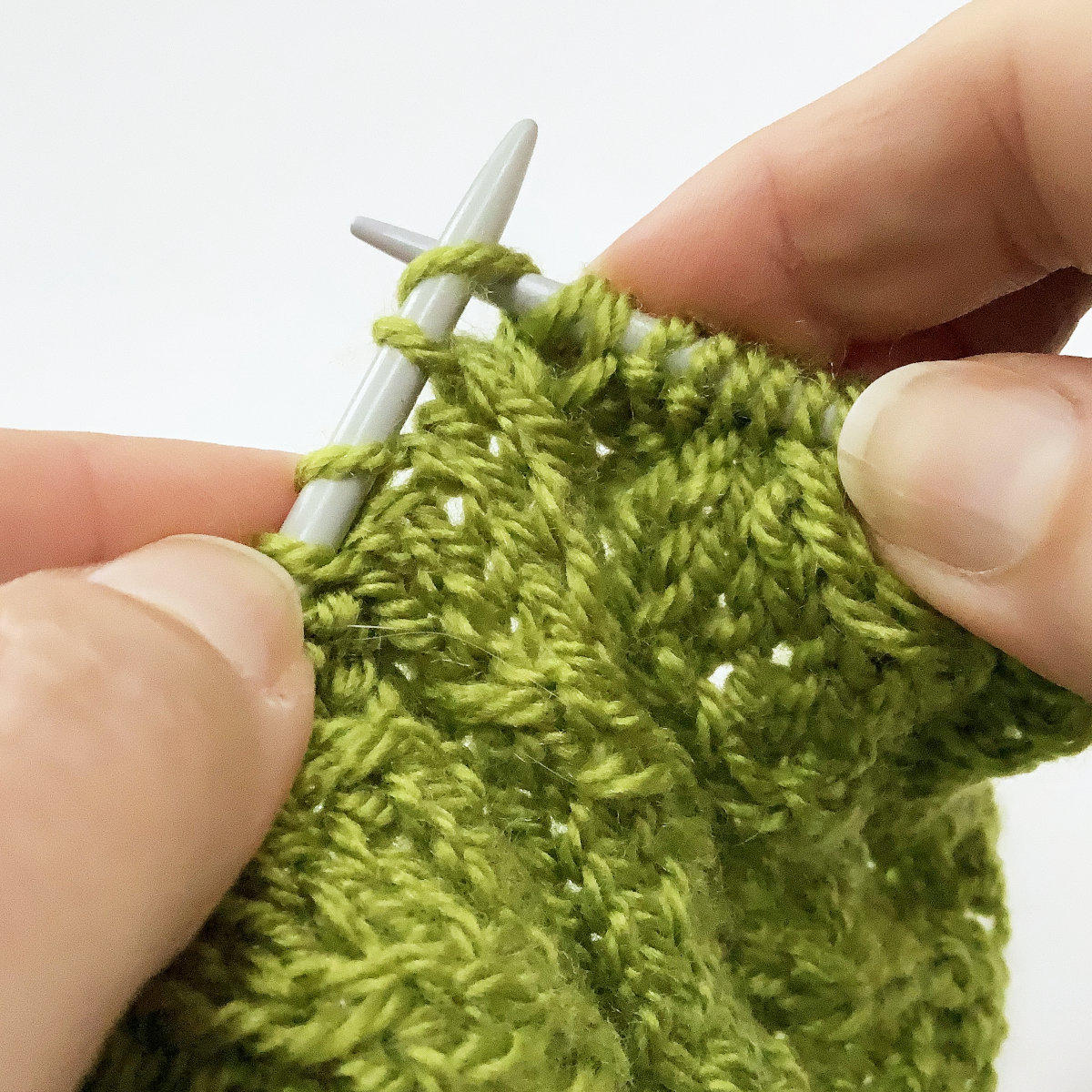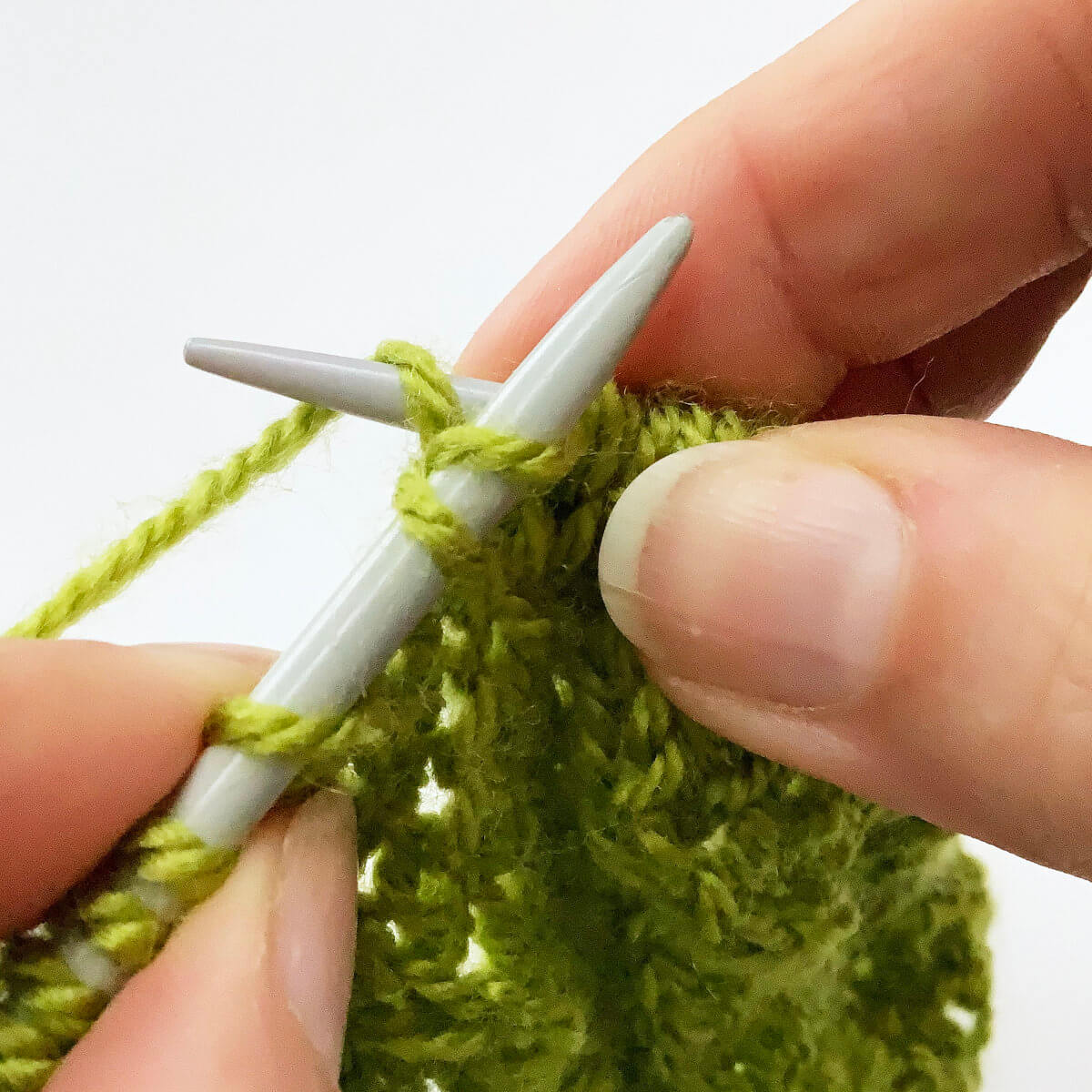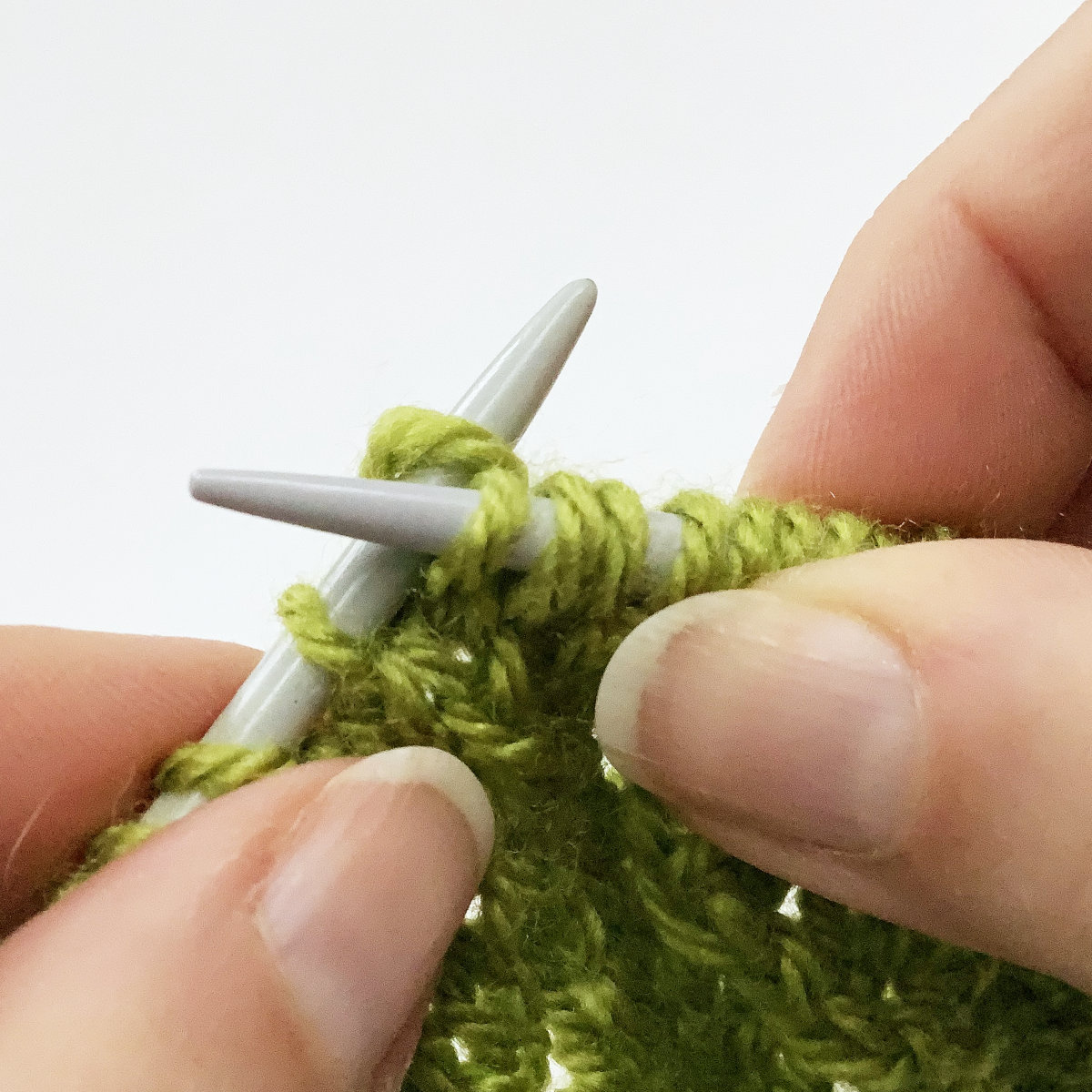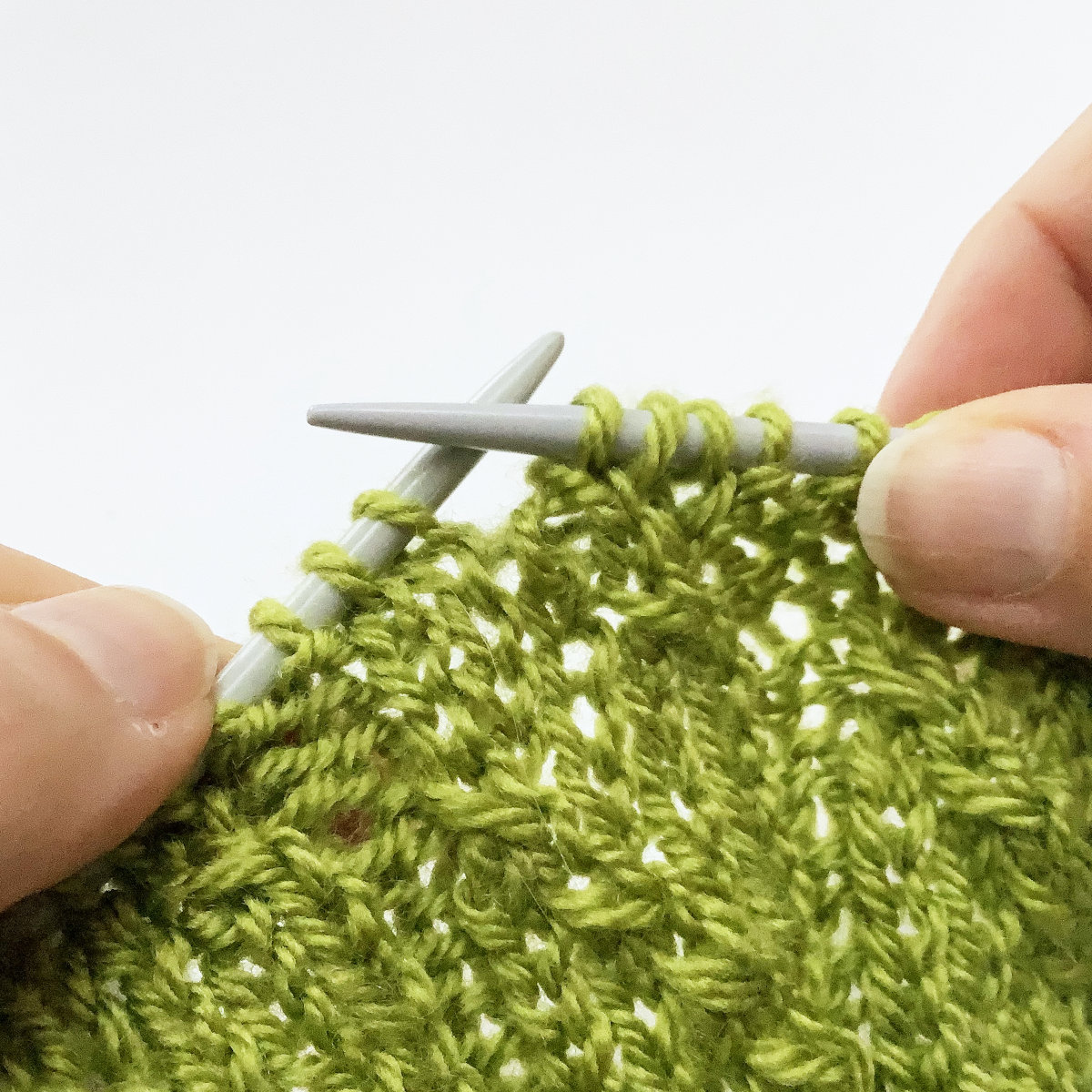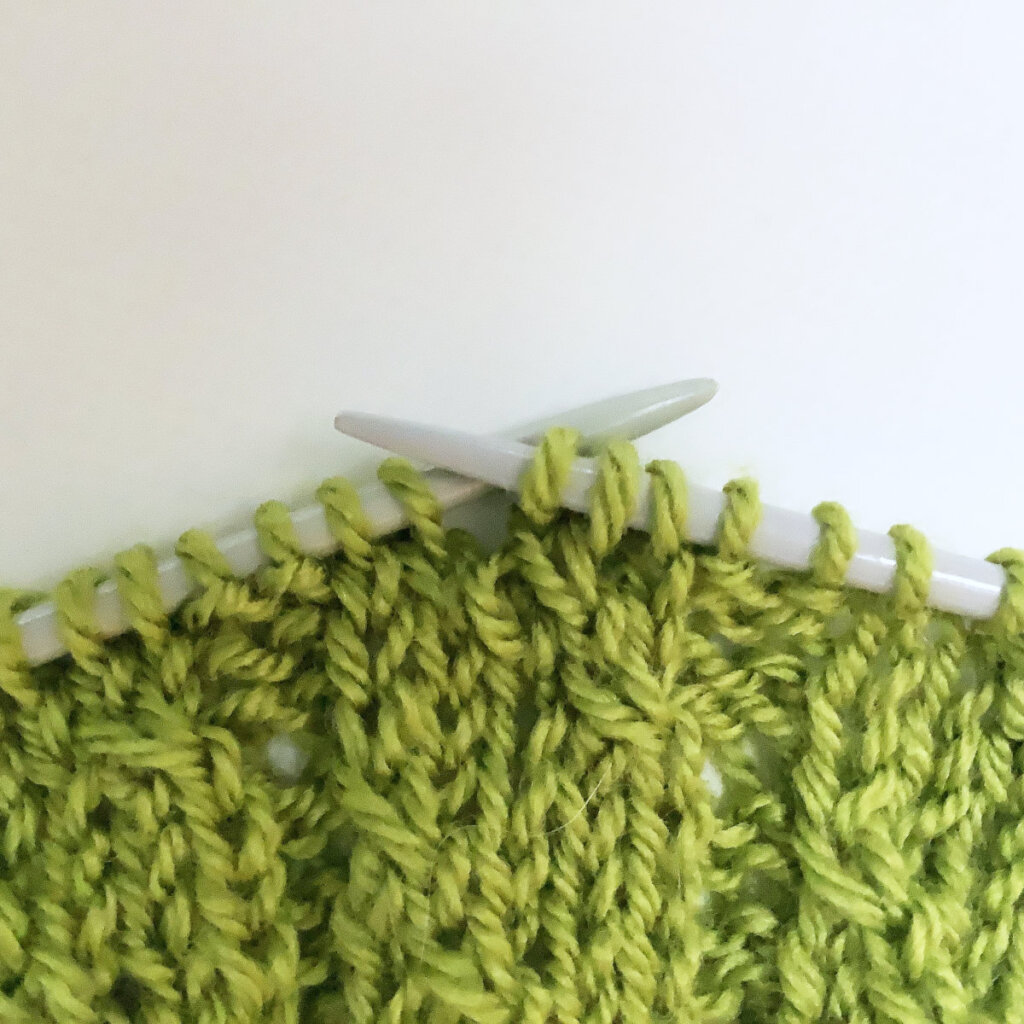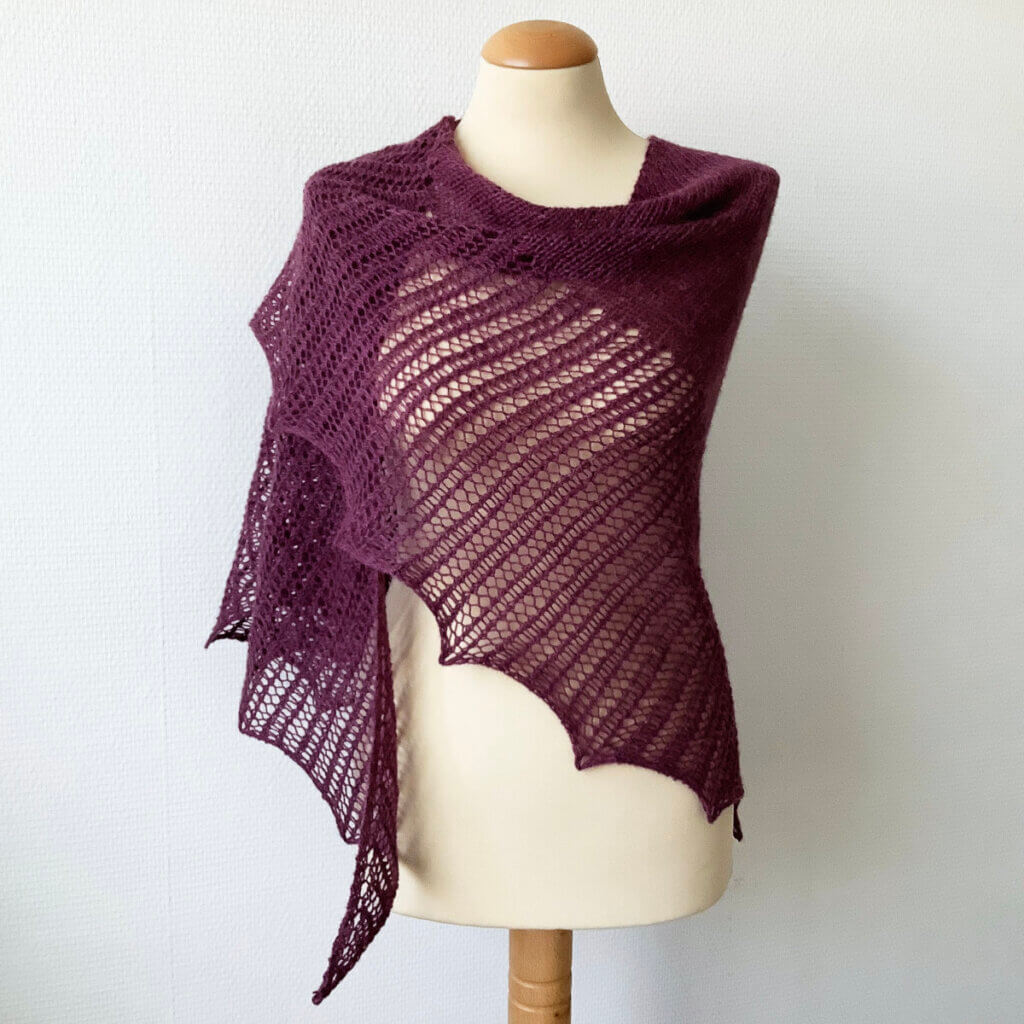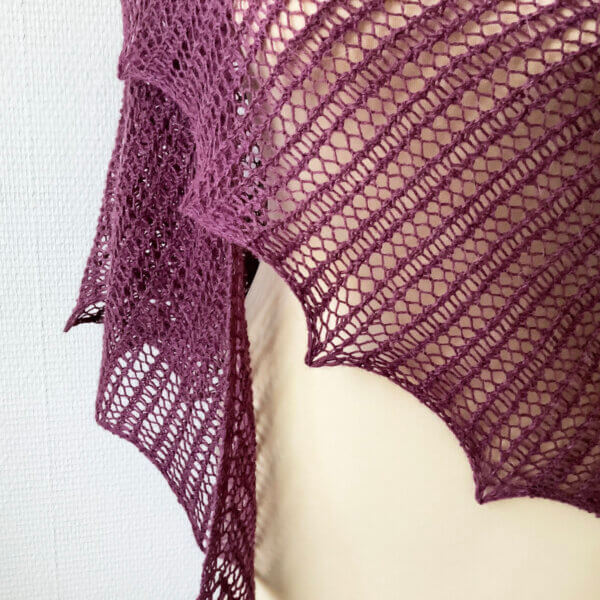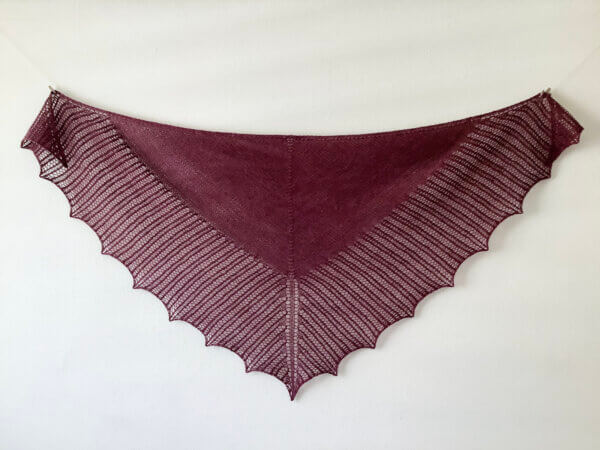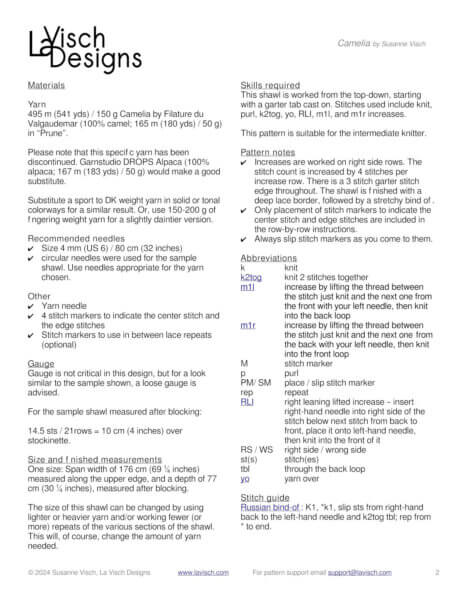blauwe branding
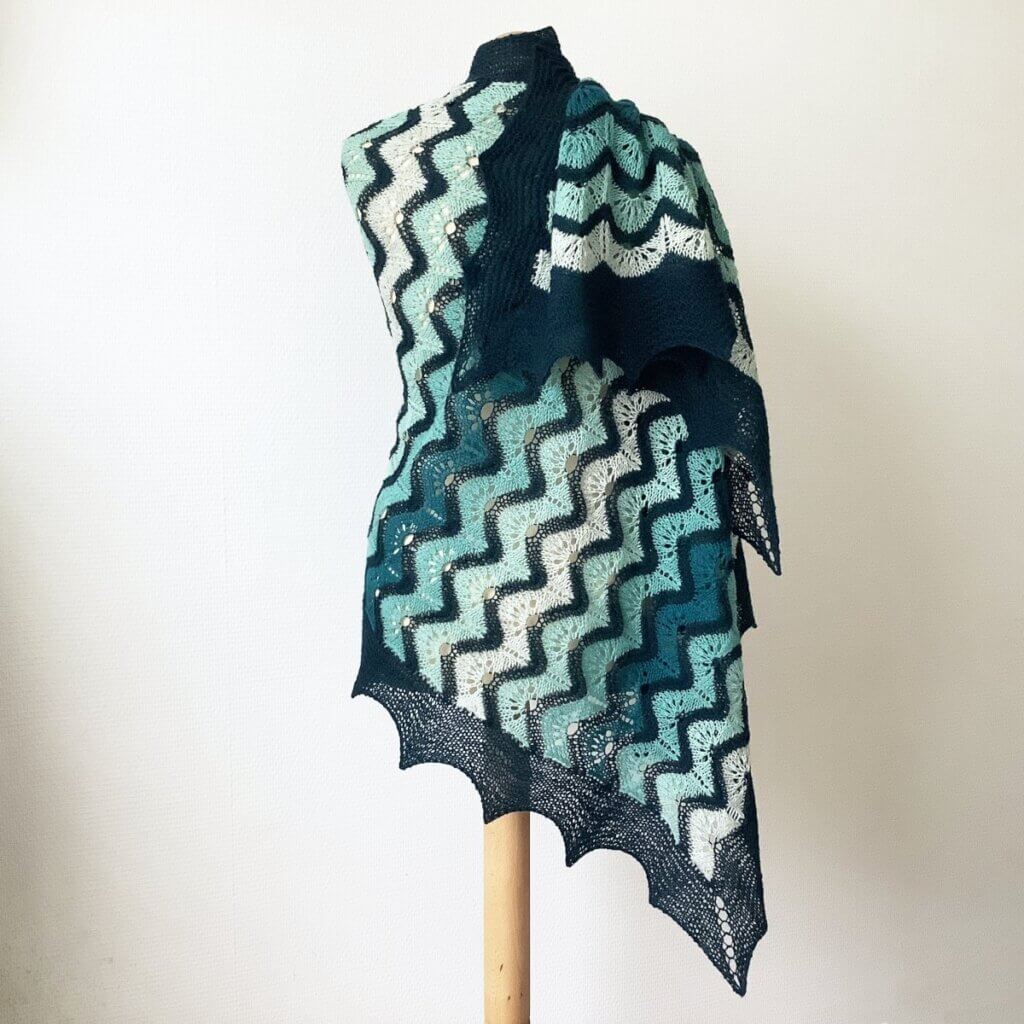
“Blauwe Branding” is Dutch for “Blue surf”, which is exactly what the waves in this stole remind me off! While I made my version in one main color, and four contrast colors, I expect it will be equally gorgeous in a long gradient yarn.
The pattern contains both fully written out and charted instructions for the lace. The lace in the body of the shawl is worked on both wrong and right side rows. The border is worked in garter stitch in the round.
Pay what you want: (minimum €7.25)
Difficulty level
In this pattern, a provisional cast-on is used, and stitches are picked up and knit from garter stitch fabric. Stitches used include knit, purl, k2tog, k2tog tbl, skp, p2tog, p2tog tbl, yo and double yo, kfb, and the make 6 increase.
This pattern is therefore suitable for the intermediate to advanced knitter.
Sizes and finished measurements
One size (easily adjusted) – finished dimensions: 85 cm (33 ½ inches) wide and 160 cm (63 inches) long, measured after blocking.
Adjust the width of the Blauwe Branding stole by changing the number of cast on stitches. Change the length by working more or fewer repeats of the body pattern. This will, of course, change the amount of yarn needed.
Pattern details
- Gauge: 17.8 sts / 17.7 rows = 10 cm (4 inches) over lace pattern, measured after blocking. Gauge is however not critical for this design.
- Pattern languages included: English.
- Digital PDF has 5 pages (letter size)
Yarn
Finull by Rauma (100% wool; 175 m (191 yds) / 50 g) in the following colors:
C1: 350 m (382 yds) / 100 g in color 4025
C2: 88 m (96 yds) / 25 g in color 4136
C3: 158 m (172 yds) / 45 g in color 4887
C4: 158 m (172 yds) / 45 g in color 4023
C5: 70 m (76 yds) / 20 g in color 0484
Substitute fingering or sport weight 2-ply wool yarn in 5 colors for a similar result. Alternatively, replace C2 to C5 with 474 m (516 yds) / 135 g) of a gradient yarn with long color runs.
Materials
- Size 3.5 mm (US 4) / 80 cm (32 inches) and 150 cm (60 inches) circular needles were used for the sample shawl. Use needles appropriate for the yarn chosen.
- Waste yarn for provisional cast-on
- Crochet hook for provisional cast-on, in a size similar to the knitting needles used.
- Stitch markers to use in between lace repeats (optional)
- 4 removable stitch markers
- 1 different BOR stitch marker
- Yarn needle


